It seems we can’t find what you’re looking for. Perhaps searching can help.
Sign Up for newsletter!
Subscribe to get the latest eBook!
Hotline






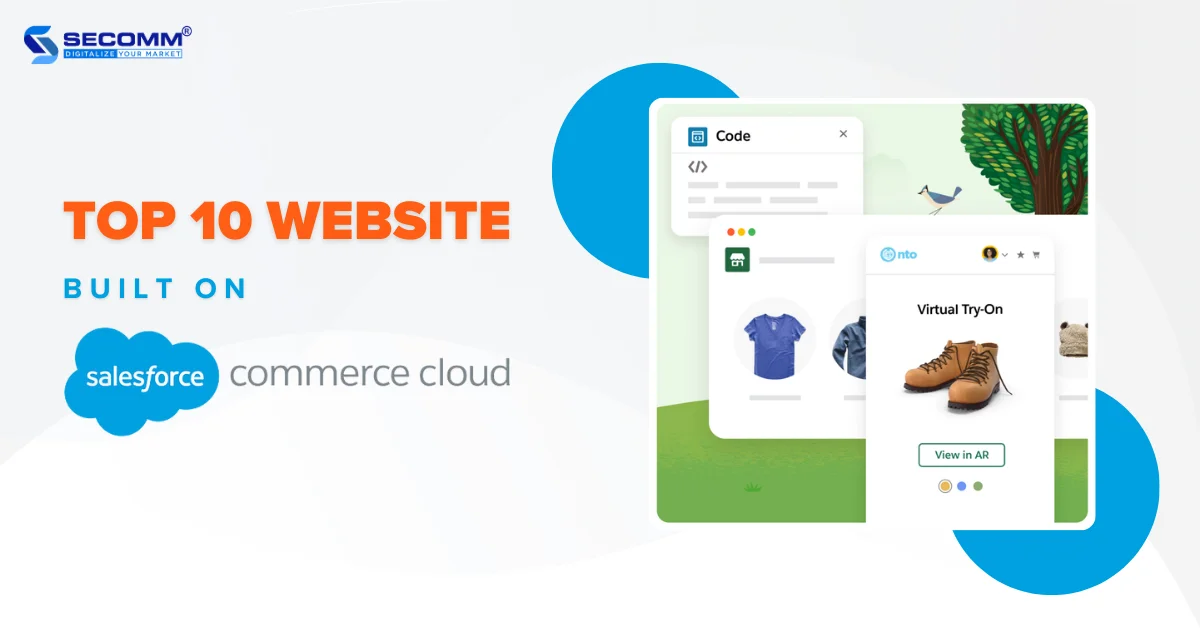
Salesforce Commerce Cloud is a scalable cloud-based eCommerce platform that enables brands to meet growing business demands.
Below is a list of the top 10 websites currently using Salesforce Commerce Cloud for reference by businesses.
Cotton:On is a well-known fashion brand from Australia, established in 1991. This brand specializes in youthful and dynamic fashion products suitable for the younger generation, including clothing for men, women, children, accessories, and travel items.
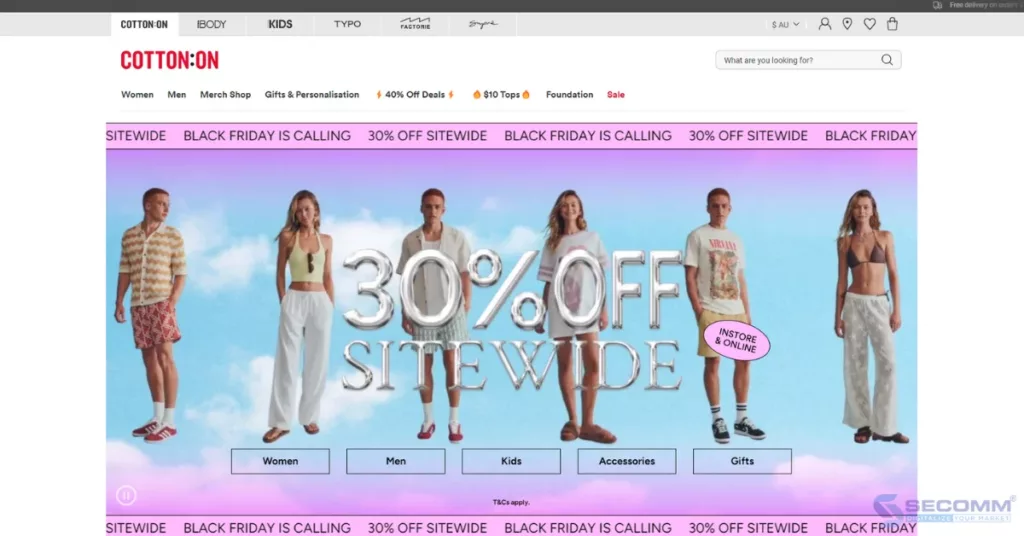
When using Salesforce Commerce Cloud, Cotton:On quickly built a multi-channel eCommerce website and activated 10 different websites globally within just 12 months.
“Salesforce has helped us scale our multi-channel capability and meet demand for more personal journeys” – Brendan Sweeney, General Manager, Cotton:On Group.
Versace is a luxury fashion brand from Italy, founded in 1978 by Gianni Versace. The brand specializes in high-end fashion products, including clothing, footwear, accessories, furniture, and fragrances.

Salesforce Commerce Cloud has helped Versace create an optimized user experience for its eCommerce website, making it easy for customers to search, shop, and make payments. The website is designed to be simple, user-friendly, and suitable for the brand’s upscale customer base.
Bvlgari is a luxury fashion brand from Italy that has used Salesforce Commerce Cloud to build its eCommerce website. This website is designed to provide an enhanced personalized shopping experience for Bvlgari’s customers.

Bvlgari has developed personalized product features that allow customers to create their own profiles and store information about their shopping preferences, purchase history, and delivery addresses. This feature helps Bvlgari better understand customer needs and provide them with personalized product recommendations and services.
Samsonite is a multinational manufacturer of luggage and travel accessories based in the United States. The company was founded in 1910 by Jesse Shwayder in Denver, Colorado, USA. Since then, Samsonite has become one of the world’s largest luggage manufacturers, with products sold in over 120 countries.

Samsonite has implemented Salesforce Commerce Cloud to enhance user experience, increase online sales, and analyze customer shopping behaviour.
Callaway Golf is an American golf equipment manufacturing company established in 1982 by Ely Callaway. The company specializes in designing, manufacturing, marketing, and selling golf equipment, specifically clubs and balls, as well as accessories like bags, gloves, and hats.

Callaway Golf has utilized the product filtering feature of Salesforce Commerce Cloud to help customers easily find products based on their needs. The brand has also employed the product recommendation feature to assist customers in discovering new products.
ECCO started as a multinational footwear business based in Denmark, founded in 1963 by Karl Toosbuy. The company specializes in designing, manufacturing, and selling shoes, bags, and other fashion accessories.

In early 2015, ECCO USA began testing the Endless Aisle, a supplementary feature of Salesforce B2C Commerce, along with other functionalities. This feature helps prevent lost sales by allowing collaborators to place orders based on online inventory.
Jimmy Choo is a luxury fashion brand from the United Kingdom specializing in shoes, handbags, accessories, and fragrances. The company was founded in 1996 by Malaysian-born haute couture shoe designer Jimmy Choo and British Vogue accessories editor Tamara Mellon.

Salesforce Commerce Cloud has helped Jimmy Choo enhance user experience, increase online sales, and analyze customer shopping behaviour. The brand has successfully leveraged Salesforce Commerce Cloud to drive the brand’s growth.
Brunello Cucinelli is a luxury fashion brand from Italy founded in 1978 by Brunello Cucinelli. The company is known for its cashmere sweaters, tailored suits, and other high-end fashion items.

Brunello Cucinelli has utilized Salesforce Commerce Cloud to build an eCommerce website with features supporting user experience and boosting online sales.
GODIVA is a premium chocolate brand from Belgium, established in 1926 by Pierre Draps. The company specializes in high-quality chocolate made from the finest ingredients and crafted using traditional methods.

Salesforce Commerce Cloud has helped GODIVA analyze customer shopping behaviour. This data is utilized to enhance the customer shopping experience, develop new products and services, and optimize marketing strategies.
Toys”R”Us is a leading retailer of toys, games, entertainment, and educational products in Asia. Headquartered in Hong Kong, the company operates over 470 stores with more than 10,000 members across Asia, including Brunei, China, Hong Kong, Macau, Taiwan, Japan, Malaysia, Singapore, the Philippines, and Thailand.
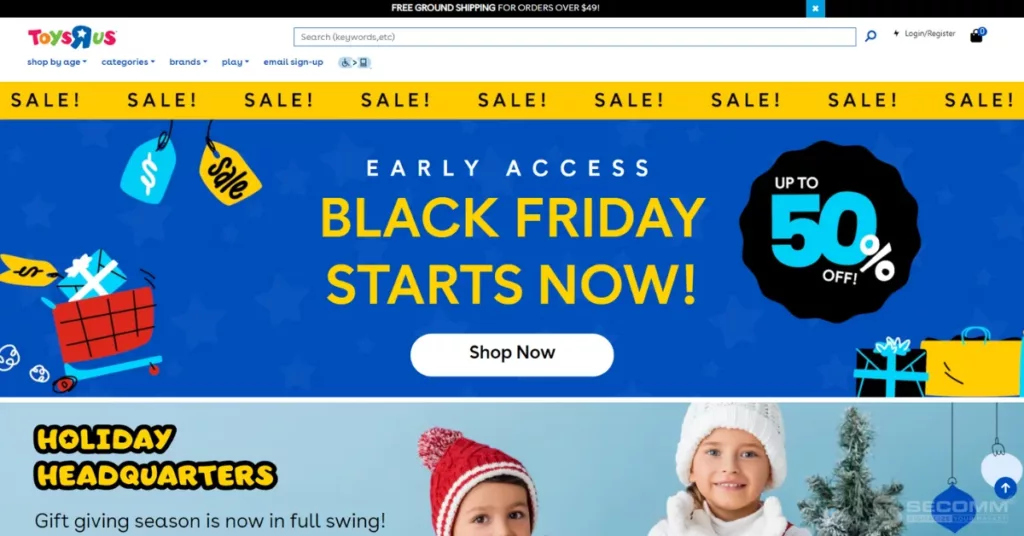
Tim Halaska, Regional Manager for Digital Strategy at Toys”R”Us Asia, acknowledges that traditional stores will always have a certain place in the company. However, COVID-19 and changes in consumer preferences have led to a more significant focus on eCommerce.
The Salesforce Commerce Cloud solution has helped Toys”R”Us streamline online sales and provide a unified experience that caters to consumer needs across Asia.
“Our challenge now is to capture the magic of that in-store experience and bring it online.” – Tim Halaska, Regional General Manager Of Digital Strategy, Toy”R”Us Asia.
Above are the top 10 websites built by Salesforce Commerce Cloud that have achieved success in both brand recognition and revenue. This success serves as inspiration for other businesses seeking the most suitable solutions to compete in the market.
With deep expertise and the development of complex eCommerce systems for clients such as Changi Airport Group (Singapore), Trentham Estate (Australia), and The Warehouse (Vietnam), SECOMM understands the challenges in choosing a platform and deploying eCommerce that businesses are facing.
Contact SECOMM now or call directly at the hotline number (028 7108 9908) for free advice on the eCommerce website building roadmap!
 2
2
 6,670
6,670
 0
0
 1
1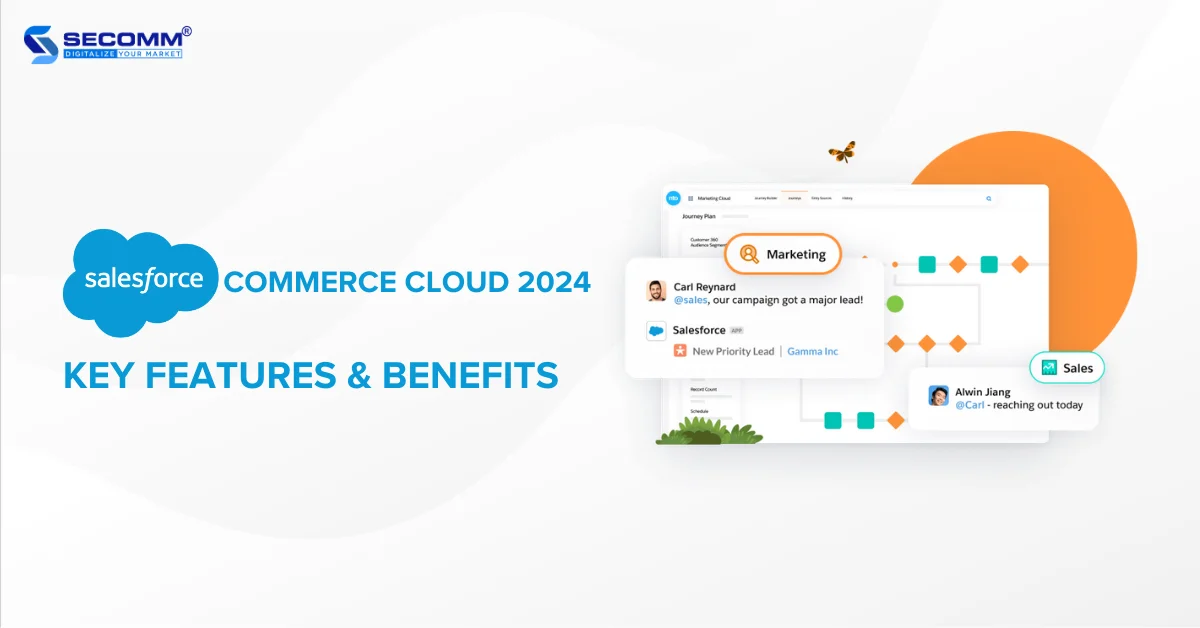
According to Builtwith, Salesforce Commerce Cloud is a platform used by over 12,000 eCommerce websites worldwide. This number has consistently increased over the years, reflecting the platform’s growing popularity.
Here is an analysis of the number of websites using Salesforce Commerce Cloud in different regions:
The United States is the largest country, with over 2,106 websites utilizing this platform.
Salesforce Commerce Cloud is a cloud-based eCommerce platform that helps businesses drive online sales and large enterprises.
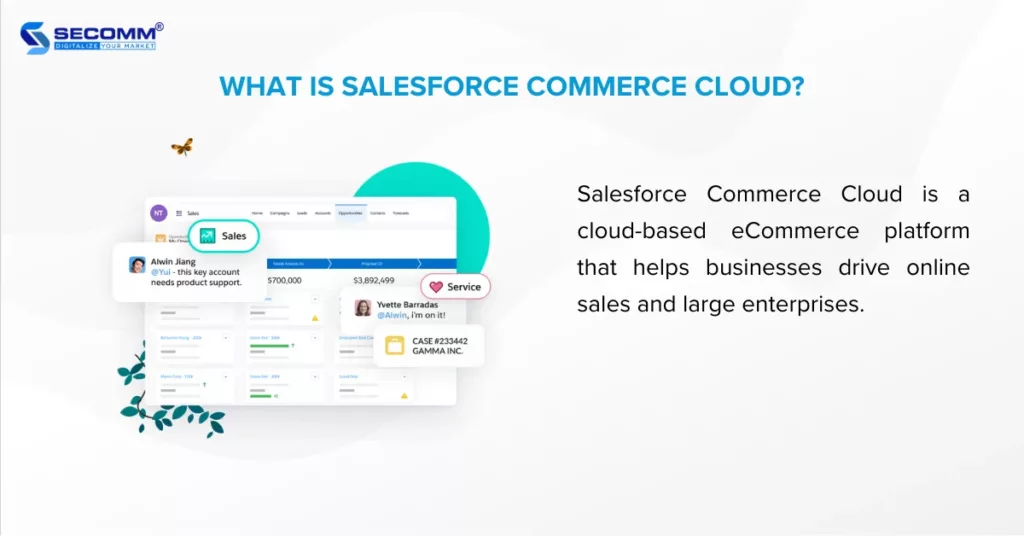
This platform provides a comprehensive set of tools to manage every aspect of eCommerce business, from product catalogue management and order fulfilment to marketing and customer service.
All static content (JS, CSS, and images) is distributed through CDN and eCDN (Embedded Content Delivery Network). Additionally, the platform can be configured to use external CDNs through the capabilities of the native platform. This ensures that platform resources are not consumed for static content. The remaining information and data will be handled by Salesforce servers. Data centres are distributed globally, placing them physically closer to end users.
In terms of structure, in such data centres, Salesforce can maintain multiple PODs (Point of Delivery). PODs allow for sharing and providing additional resources to stakeholders if there is a sudden surge in demand for those resources. PODs include firewalls, switches, load balancers, computing power, and file systems.
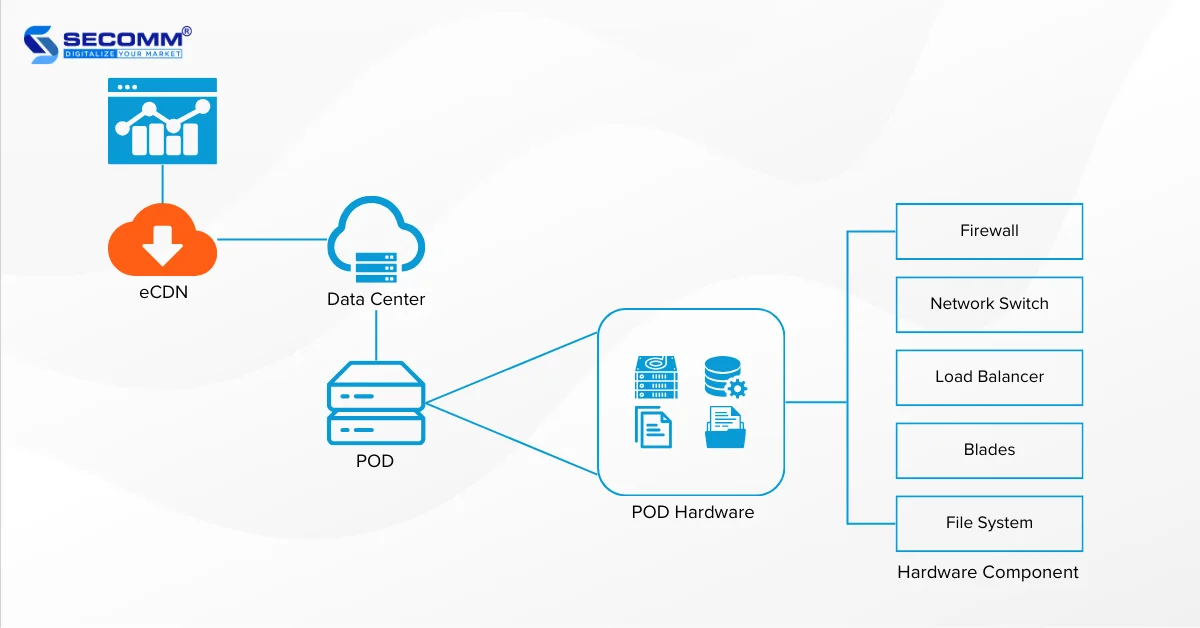
Salesforce Commerce Cloud has two main versions for building eCommerce websites: Salesforce B2C Commerce and Salesforce B2B Commerce, and more recently, B2B2C.
For the B2C model, it is further divided into three solution packages, including:

Similarly, the B2B model is divided into two solution packages, including:

For the B2B2C model, it will be calculated based on 1% Gross Merchandise Value.
Salesforce Commerce Cloud provides a range of powerful features to help businesses grow their eCommerce ventures, including:
Salesforce Commerce Cloud is one of the rare platforms that supports Headless Commerce by integrating with popular technologies and frameworks such as React, Angular, and Vue.js. This enables businesses to develop custom user interfaces tailored to the specific needs of the brand.
Related article:
In mid-2023, Salesforce introduced two new-generation AI products, including Marketing GPT and Commerce GPT, at the company’s Connections conference.
Marketing GPT and Commerce GPT empowers Salesforce’s Marketing Cloud and Commerce Cloud, allowing businesses to eliminate repetitive tasks, save time in their workflows, and deliver personalized campaigns and shopping experiences on a large scale.
With Marketing GPT, businesses can automatically generate more personalized emails and create smarter audience segments. With Commerce GPT, brands can provide personalized shopping experiences and customized promotions tailored to customer needs, utilizing the dynamic shopping journey provided by GPT.
Salesforce Commerce Cloud supports Omnichannel, meaning you can provide a seamless shopping experience across all channels, including websites, mobile apps, social media platforms (Facebook, Instagram, Zalo, etc), and eCommerce marketplaces (TikTok Shop, Shopee, Lazada, Sendo, etc).
This allows businesses to easily sell on multiple channels without the need to build and maintain separate solutions for each channel.
Salesforce Commerce Cloud is built on a cloud platform, making it easy for businesses to scale their eCommerce operations without worrying about investing in hardware and software. Salesforce Commerce Cloud also provides features and tools to help businesses efficiently manage traffic and performance, ensuring a seamless shopping experience for customers.
Salesforce Commerce Cloud is utilized by numerous large retailers and B2B enterprises worldwide to create and manage eCommerce websites, reaching a wider customer base.
Hugo Boss is one of the world’s leading premium fashion brands from Germany, established in 1924, with a widespread retail network including stores, distributors, and an eCommerce website. Hugo Boss employed Salesforce Commerce Cloud to build its eCommerce website in 2021.

The platform provides features that help Hugo Boss create a seamless shopping experience, including synchronized product catalogues, cross-channel payments, and shipping and returns. Additionally, Hugo Boss’s website offers personalized features, such as product recommendations based on customer shopping history.
Bvlgari, a luxury fashion brand from Italy, has utilized Salesforce Commerce Cloud to develop its eCommerce website. The website is designed to enhance a personalized shopping experience for Bvlgari’s customers.

A notable personalized feature on Bvlgari’s new eCommerce website is the “My Bvlgari” feature, which allows customers to create their own profiles and store information about shopping preferences, purchase history, and delivery addresses. This feature helps Bvlgari better understand customer needs and provides them with tailored product suggestions and services.
Ralph Lauren is a premium American fashion brand founded in 1967, specializing in luxury fashion products for men, women, and children, including clothing, footwear, accessories, and fragrances.

Salesforce Commerce Cloud assists Ralph Lauren in synchronizing its product catalogue across all channels, including the website, mobile app, and physical stores. This ensures that customers can easily find the products they want to purchase, regardless of the channel they are using.
Salesforce Commerce Cloud is a powerful and flexible eCommerce platform, particularly well-suited for large enterprises to conduct online business more efficiently.
Related article: Top 10 websites built on Salesforce Commerce Cloud
With deep expertise and the development of complex eCommerce systems for clients such as Changi Airport Group (Singapore), Trentham Estate (Australia), and The Warehouse (Vietnam), SECOMM understands the challenges in choosing a platform and deploying eCommerce that businesses are facing.
Contact SECOMM now or call directly at the hotline number (028 7108 9908) for free advice on the eCommerce website building roadmap!
 2
2
 6,213
6,213
 0
0
 1
1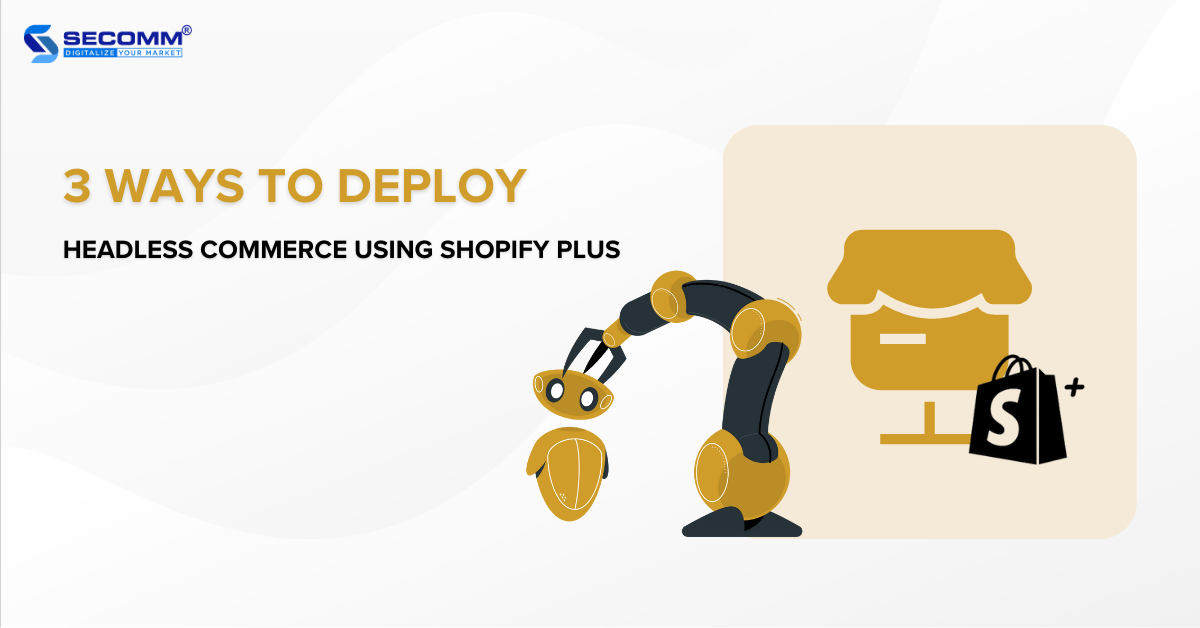
Freedom in creativity and technical flexibility have ushered eCommerce into a new era with the Headless Commerce trend. In this scenario, Shopify Plus shines with its exceptional solutions that have positioned numerous businesses at the forefront of this trend.
Learn more: Brands go Headless with Shopify Plus
The combination of Shopify Plus infrastructure and the Headless architecture opens up various ways for businesses to create unique and customizable shopping experiences for their customers. Below are three common methods for implementing Headless Commerce with Shopify Plus.
The Shopify Storefront API is a GraphQL-based API – a query language for APIs. It enables businesses to connect the frontend of their website to the backend of Shopify, facilitating easy access to data and eCommerce functionalities. Therefore, businesses can use the Storefront API to create unique and personalized customer experiences across various digital channels.
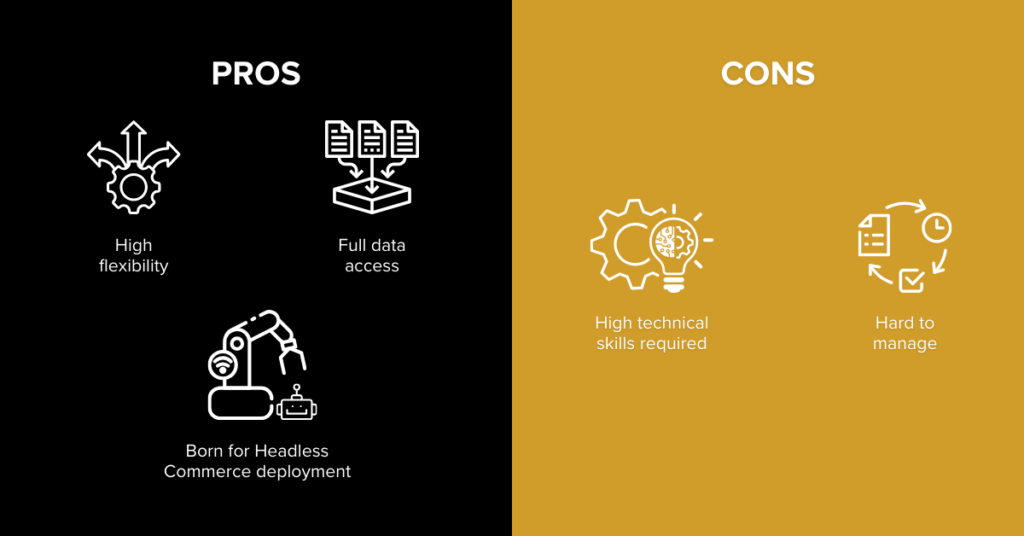
High flexibility: The Storefront API allows you to create independent websites. Instead of adhering to the constraints of pre-built themes, you can flexibly design product pages, homepages, and shopping carts in a style that accurately reflects your brand. The Storefront API also ensures flexibility in integrating with third-party systems while easily adapting the website to embrace new design trends.
Full data access: Through the Storefront API, you can access every aspect of the Shopify Plus database, including detailed information about products, orders, and customer data. This helps manage, monitor, assess trends, and optimize eCommerce data accurately.
Born for Headless Commerce deployment: Embracing the Headless Commerce model, which decouples the frontend and backend, allows for significant flexibility in eCommerce development and operations. The Storefront API is strategically optimized to seamlessly connect Shopify Plus’ backend with diverse frontends, ensuring a cohesive user experience across various channels and devices.
High technical skills required: Deploying Headless Shopify Plus using the Storefront API is a complex process that demands in-depth knowledge of the Shopify Plus platform, programming languages, and frameworks, as well as problem-solving skills to quickly address technical requirements. Particularly, you need to understand the data structure of Shopify, including how customer data, product information, and transactions are organized and stored within the system.
Hard to manage: The flexibility of the Storefront API complicates the process of managing and maintaining the system. While the flexibility of the Storefront API allows to customize every aspect of the eCommerce website, from the homepage to the checkout process, these custom configurations need to be well-managed. When there are too many custom configurations, updates may lead to compatibility issues within the overall system.
The Shopify Hydrogen + Oxygen solution was introduced in 2021, and designed for large enterprises implementing Headless Commerce with Shopify Plus. Specifically, Hydrogen is a React-based framework – a popular framework for building user interfaces, enabling businesses to construct unique and visually appealing storefronts.
On the other hand, Oxygen is a global hosting solution capable of storing custom content. Shopify Oxygen is backed by Shopify’s infrastructure with over 100 server locations positioned worldwide. You don’t need to worry about finding third-party hosting providers or managing technical issues.
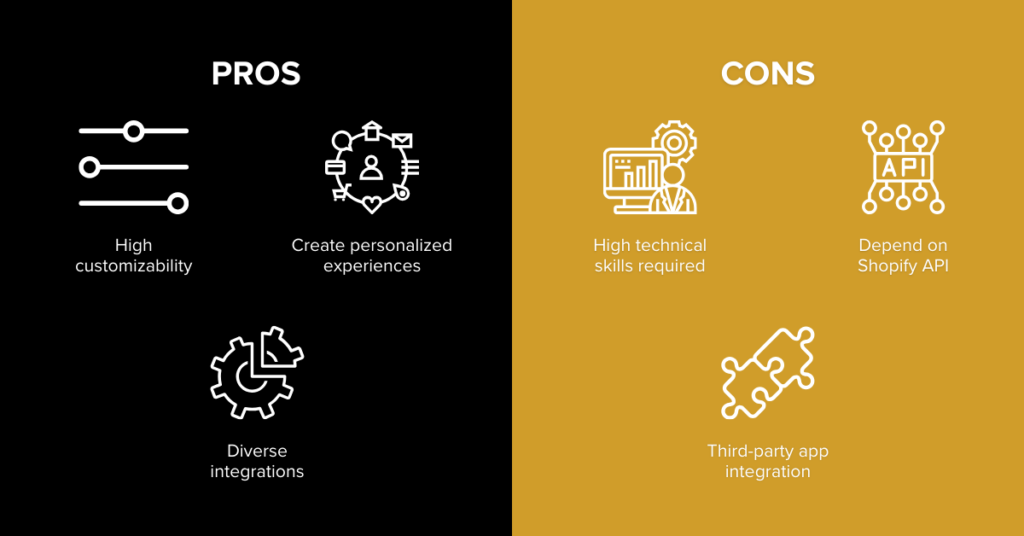
High customizability: Shopify Hydrogen allows you to customize the Headless website interface and implement necessary extensions. This means that merchants can use the latest technologies to build a Headless eCommerce website without worrying about impacting the system’s functionality.
Create personalized experiences: The Shopify Hydrogen solution offers high flexibility and customization, enabling you to implement Headless Commerce with this solution to easily create and deliver personalized shopping experiences for customers.
Diverse integrations: To help you create a seamless omnichannel experience, Shopify provides the capability to integrate the Headless Hydrogen website with various third-party applications such as Klaviyo, Gorgias, etc., as well as Headless CMS systems like Contentful, Sanity, Builder.io, etc.
High technical skills required: Shopify Hydrogen is a technically intensive solution and doesn’t have a drag-and-drop builder. Therefore, the process of implementing Headless Commerce with Shopify Hydrogen will demand a high level of technical expertise from the business.
Depend on Shopify API: This solution is developed exclusively for Shopify’s API. This means that the Hydrogen framework can only be used to build the Shopify website interface.
Third-party app integration: While Shopify allows you to easily integrate with 3rd-party apps and CMS, if you want to use a CMS or app for your online store that isn’t compatible with the Hydrogen framework, you’ll need to integrate it through a middleware app.
The third method to adopt Headless Commerce with Shopify Plus is by using Shopify’s latest solution – Commerce Components. This is a modular component tech stack developed by Shopify specifically for large enterprises aiming to build Headless eCommerce websites. Shopify Commerce Components offer 30 components, encompassing core features across various business aspects such as Cart, Checkout, Data, Shipping, and more.
You can integrate these components based on deployment needs to create a customized solution for your Headless Shopify website. Since its launch, many world-leading businesses, including Mattel, JB Hifi, Glossier, Coty, Steve Madden, Spanx, and Staples, have utilized this new tech stack from Shopify.
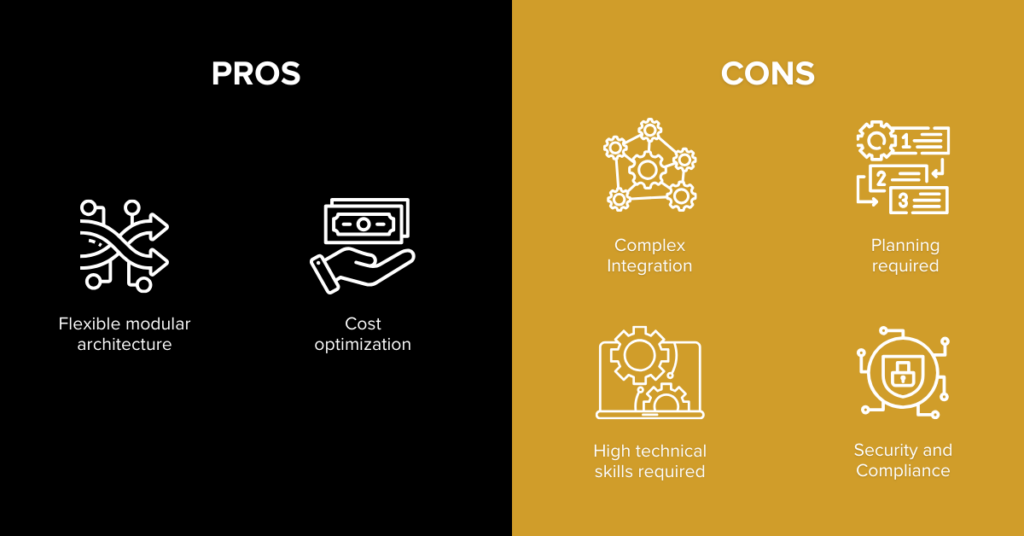
Flexible modular architecture: Commerce Components with a modular architecture provide unlimited API connections. This means you can integrate and use an unlimited number of components, while also easily adding, removing, and customizing these components without fear of affecting the system.
Cost optimization: Commerce Components have a pricing model based on the number of components used, meaning businesses pay for exactly what they use. Additionally, the cost of Commerce Components is billed annually, making it easier for businesses to accurately predict the fees they will incur.
Complex Integration: The process of integrating multiple components can be complex and time-consuming. Businesses need to ensure that the components operate independently and seamlessly within the same system efficiently.
Planning required: To ensure the effective operation of the components on the system, you need to meticulously plan which eCommerce components will be integrated, choose suppliers, deployment solutions, and deployment stages.
High technical skills required: Building and maintaining a Headless website system using the Commerce Components solution will demand a certain level of technical expertise and knowledge of integration and technology. You can invest in developing an in-house technical team or collaborate with highly specialized agencies.
Security and Compliance: Each provider for each eCommerce component will have its security protocols and compliance rules. You must ensure compliance with these rules when integrating their components, while also ensuring that this compliance doesn’t impact the operation of the remaining components and the entire system.
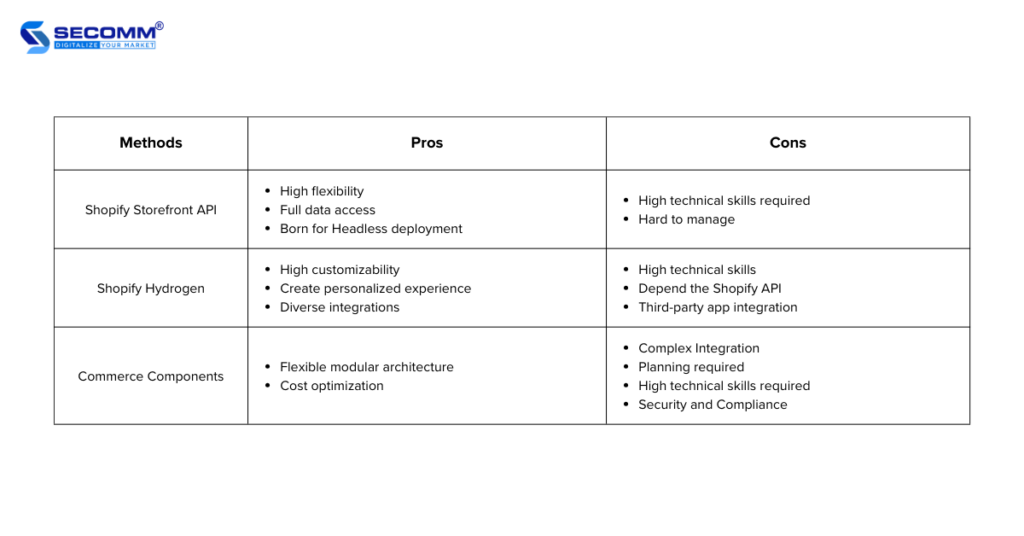
Choose your best-fit Headless Commerce deployment!
On the journey of building a Headless eCommerce website with Shopify Plus, choosing the deployment method is a crucial decision to ensure system flexibility and performance while providing the optimal customer experience.
If you need detailed guidance or want to explore how Shopify Plus can support your Headless deployment strategy, please contact SECOMM or call directly at (+84)28 7108 9908 to receive advice and assistance from our experts in choosing the right Headless Shopify Plus deployment method for the business model and goals.
 2
2
 2,513
2,513
 0
0
 1
1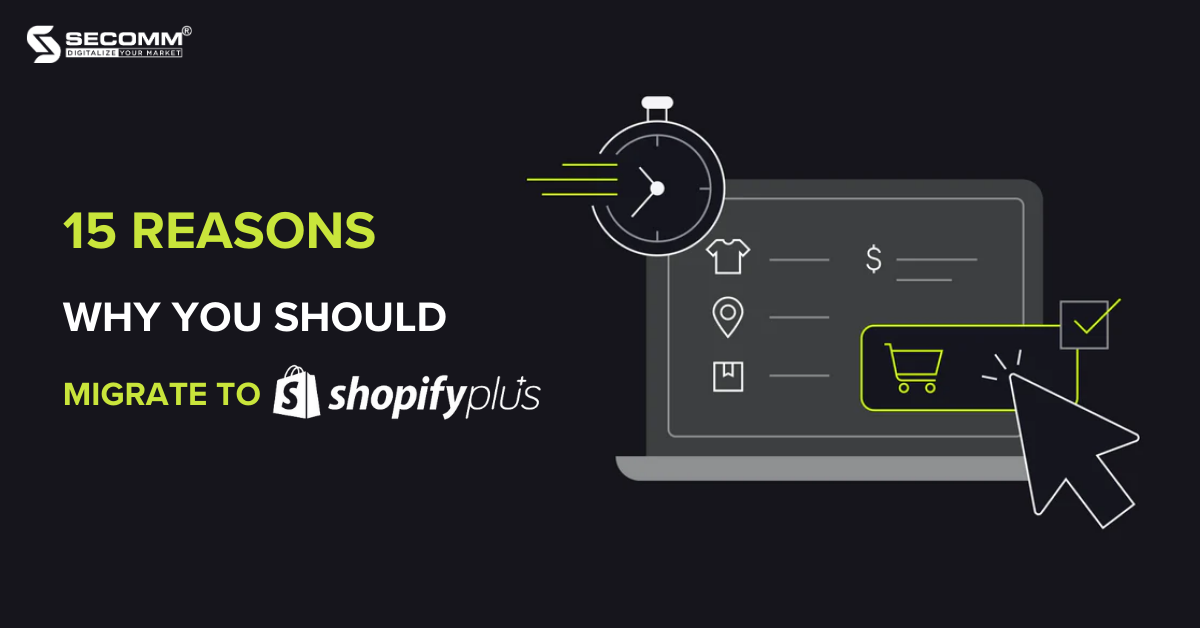
According to the Deloitte 2022 Retail Industry Outlook, up to 67% of businesses acknowledge that the eCommerce platform is their top investment priority due to issues they face with deploying outdated platforms.
Plus, a survey by Digital Commerce 360 revealed that about 27% of businesses are trying to switch their eCommerce platforms despite the associated costs.
Among the myriad of leading platforms today, Shopify Plus stands out as a perfect choice for businesses when deciding to re-platform.
This article will show you 15 reasons why you should migrate to Shopify Plus. Why the platform gains the attention of business leaders and how it can be the key to your development and success in today’s eCommerce landscape.
It is a premium solution of the popular eCommerce platform – Shopify. This version is specifically designed to meet the needs of large businesses with a high investment budget for eCommerce.
It offers flexibility, scalability, and integration, not only helping efficiently build and run an eCommerce website but also providing advanced tools and features to optimize the customer shopping experience.
Here are 15 notable advantages that the platform offers for your business growth, laying the groundwork for you to consider migrating to Shopify Plus.
The dashboard interface is designed to be intuitive and user-friendly, catering to end-users and administrators who directly manage the Shopify store. The intuitive interface allows you to concentrate on developing business strategies and enhancing the customer experience, minimizing the learning curve on how to use the system.
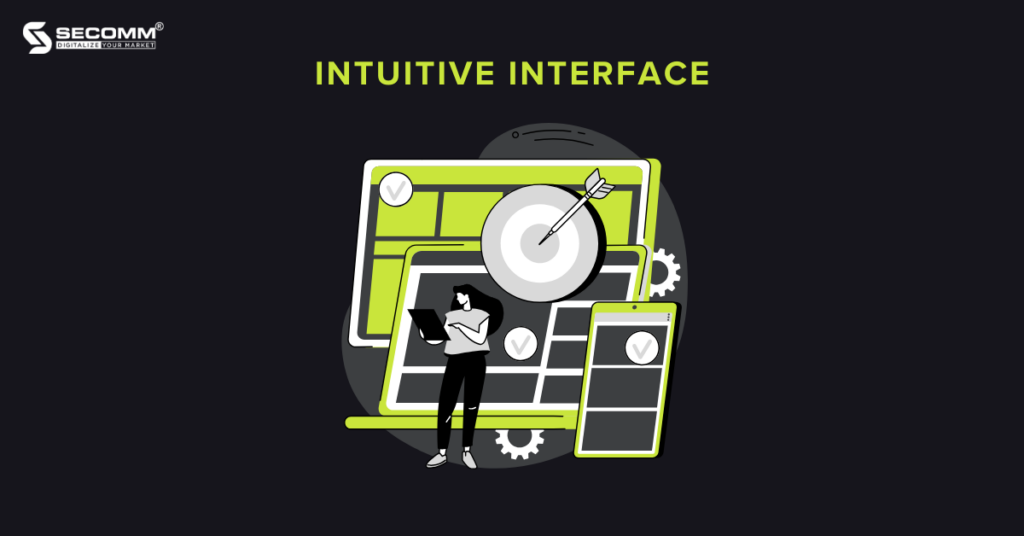
The second reason to migrate to Shopify Plus is the transparency in estimating and managing deployment costs. Typically, when using this platform, you may consider platform fees, transaction fees, app and add-on fees.
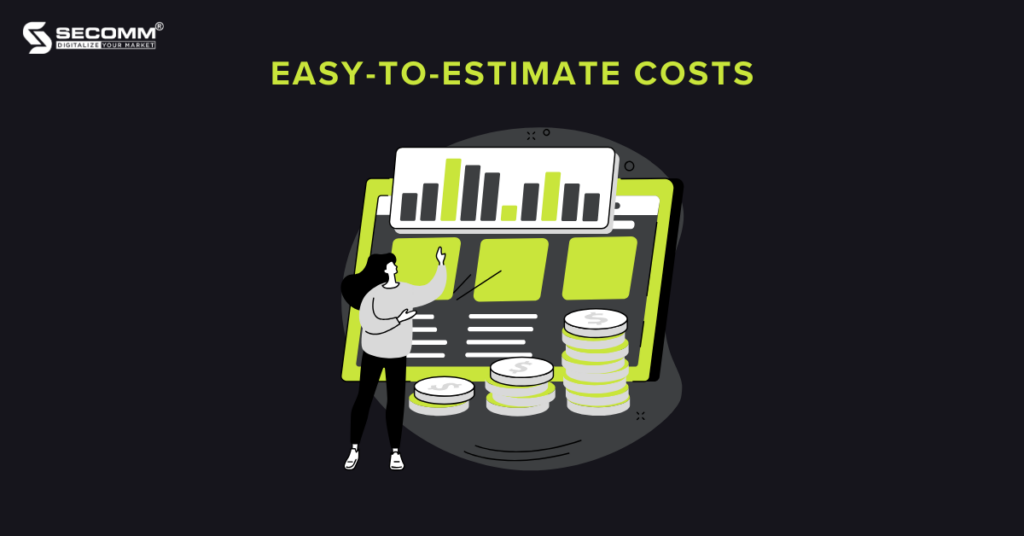
The Shopify Plus pricing system is clear and understandable, helping you know all the fees you need to pay monthly. This helps financial planning, avoiding unexpected fees during the deployment process.
Plus, if you partner with highly specialized technical development teams like SECOMM, we’ll conduct a detailed analysis and propose a phased deployment plan for the Shopify Plus eCommerce website. This approach allows you to gain clarity on how your system will be deployed at each stage, facilitating easy adjustments and flexible optimization of financial resources.
Another advantage of Shopify Plus is the automation feature. The platform provides two exclusive tools to help you facilitate this process: Shopify Flow and LaunchPad.
These automation tools help enhance efficiency and save time by streamlining various processes, allowing you to focus on strategic aspects of your operations.
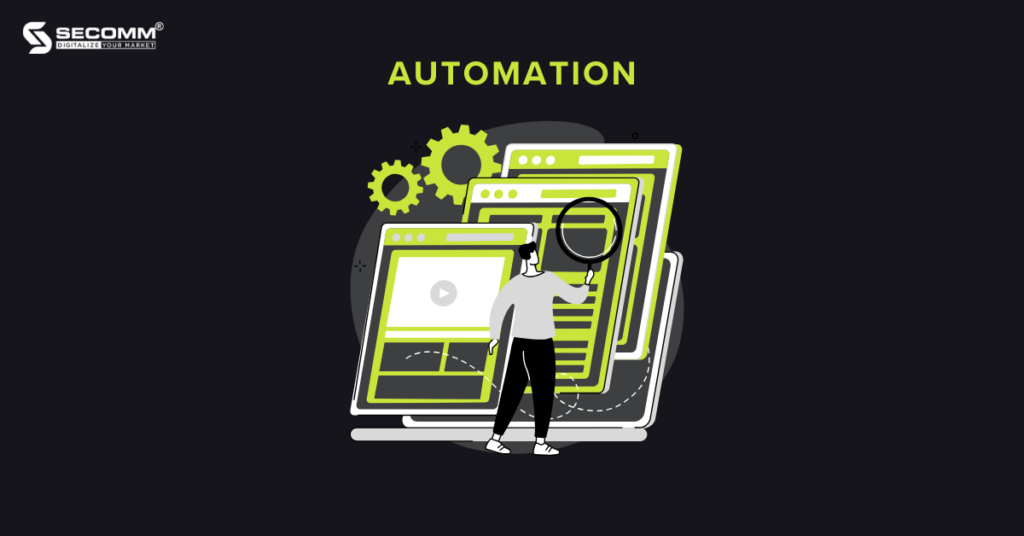
Shopify Plus allows you to reach a broader audience through various sales channels, spanning from offline to online, including leveraging social media for sales and implementing B2B business models.
Plus, you can integrate the Shopify POS solution into their offline stores to offer services such as BOPIS (Buy Online, Pick Up In-Store) and BORIS (Buy Online, Return In-Store). This allows customers to shop in the manner that suits them, combining both online and in-store shopping experiences.
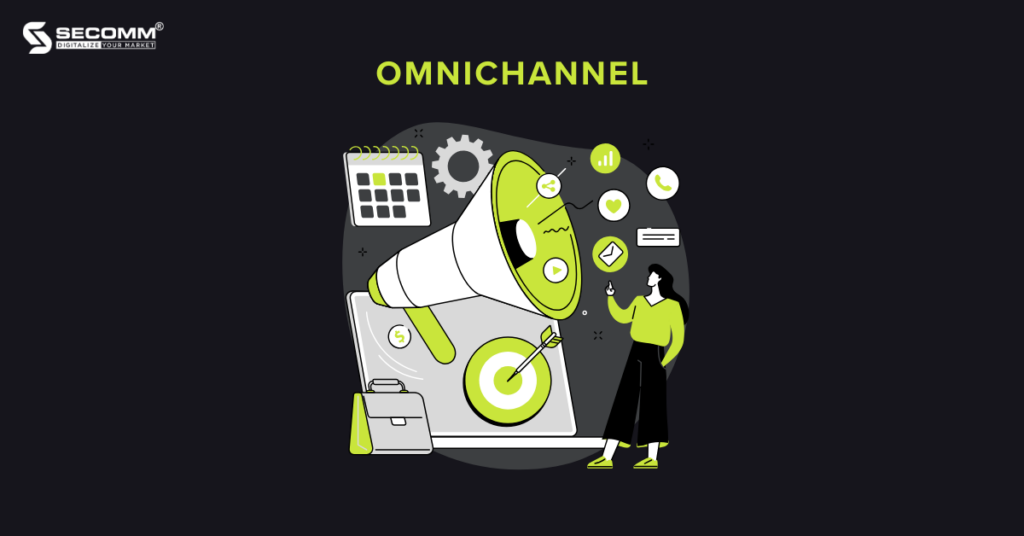
In 2021, Shopify introduced a comprehensive cross-border selling solution called Shopify Markets. With Shopify Markets, you can easily customize their stores for each specific target market. This includes setting prices, languages, payment methods, and delivery options to align with the preferences of local customers.
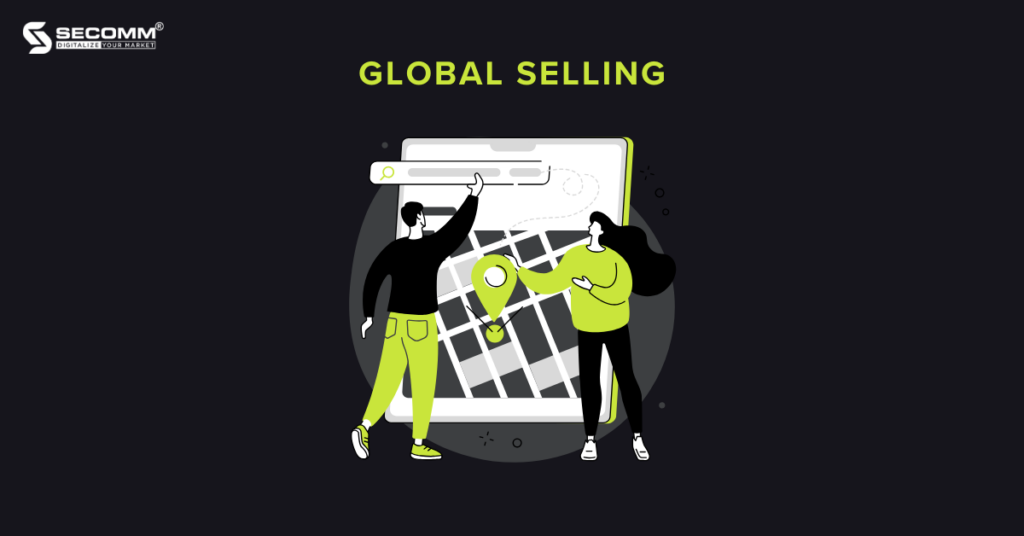
The robust customization is another reason for businesses to switch to Shopify Plus. This platform allows you to freely customize from the frontend to the backend without being constrained by any limits. In particular, you can easily customize the backend with Shopify Functions and Function APIs. Some use cases for Shopify Functions include:
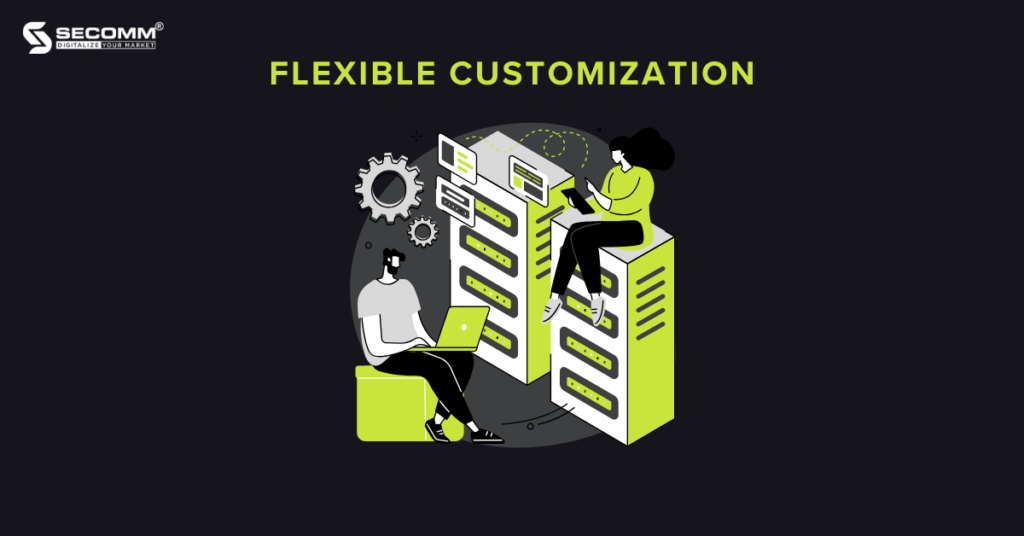
With the popularity of Shopify and Shopify Plus globally, it’s not surprising that Shopify owns a host of useful applications, some of which are specifically developed for businesses deploying Shopify Plus. Moreover, the ‘Plus’ provides diverse documentation and resources (Shopify Plus Certified App Program) for developers to create applications and extensions, contributing to the vast ecosystem of Shopify applications.
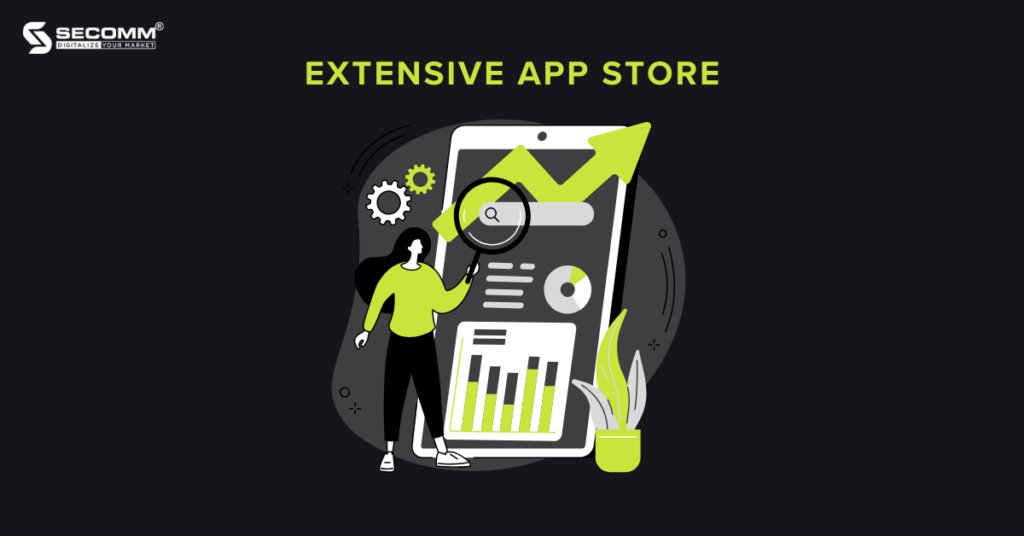
Beyond integrating with solutions within Shopify, you can also integrate with third-party systems such as:
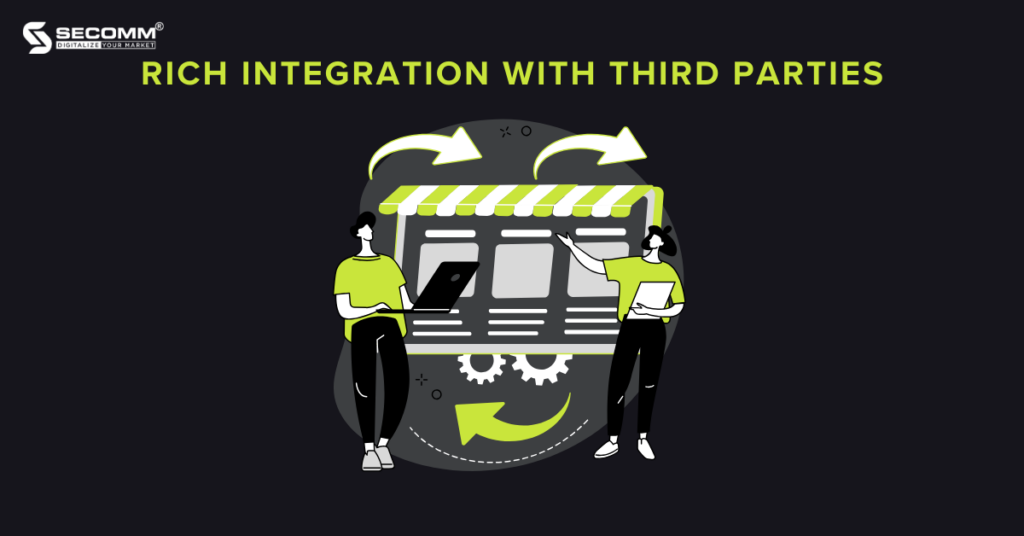
Shopify’s cloud infrastructure can cater to over 600,000 merchants and process speeds of up to 80,000 requests per second during peak periods. This system is built on a dedicated server cluster running Docker and utilizes Rails applications, alongside integrated additional features based on the AWS platform.
Therefore, Shopify Plus can provide powerful processing speed not only for the website but also during the checkout process. It can handle a massive number of visits while maintaining speed and ensuring a positive customer experience, processing over 10,000 orders per minute.
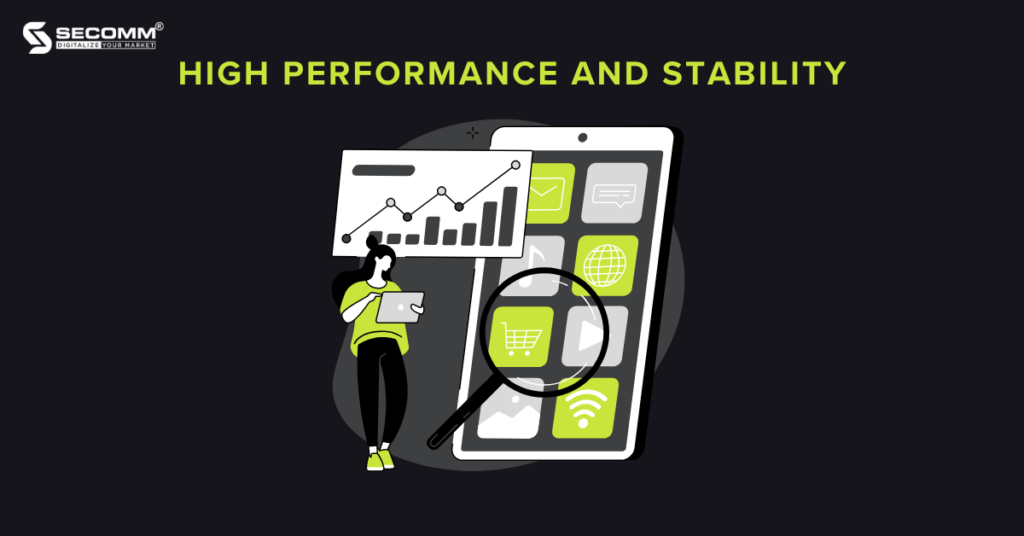
With unlimited bandwidth and flexible infrastructure, Shopify Plus can effortlessly scale to manage increased traffic during peak shopping seasons such as Black Friday, Cyber Monday, and Christmas. This enables you to handle high volumes of customers during peak times without concerns about technical issues or website disruptions.
The flexible customization of Shopify Plus also extends to providing maximum support for deploying Headless Commerce. Moreover, in 2021, the platform introduced the Hydrogen solution – an outstanding tech stack that can meet the highest requirements for building a Headless Commerce system.
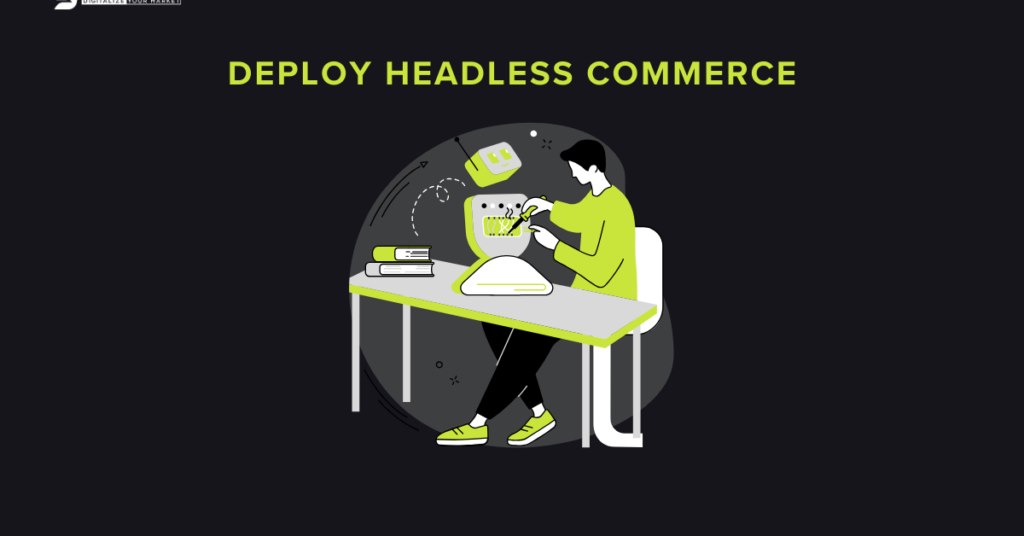
As the demand for flexibility and scalability continues to rise, alongside Headless Commerce, large businesses worldwide are increasingly focusing on the Composable Commerce model. Fortunately, Shopify is keenly attuned to customer needs and has recently introduced the Commerce Components by Shopify solution in early 2023.
As of the time of writing, Shopify stands as the first SaaS platform to provide a tech stack that can address nearly all the development needs of Composable Commerce.
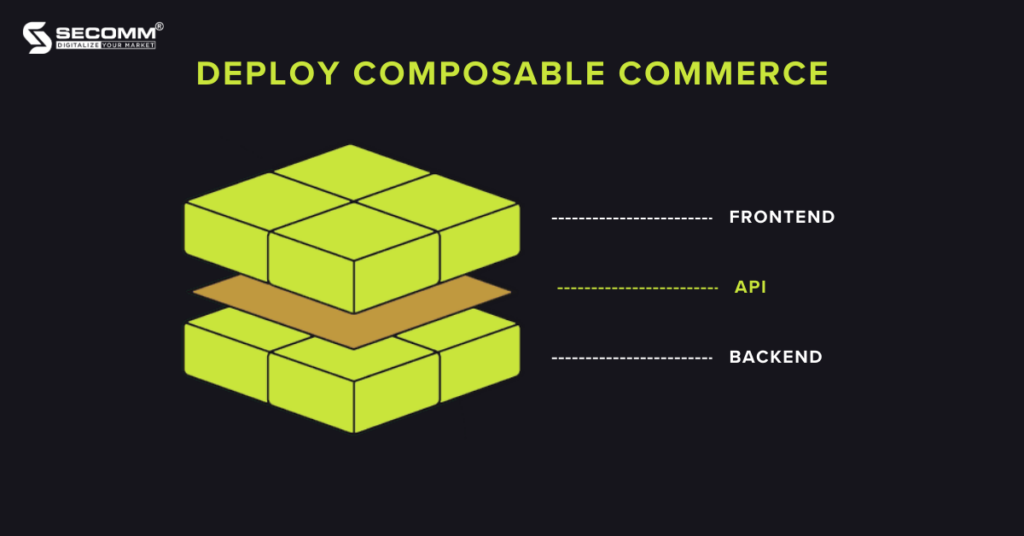
While you may require considerable time to tailor your Shopify Plus store to your specific needs, the nature of SaaS ensures that the go-live process for Shopify Plus remains quicker compared to open-source platforms like Magento.
On average, the deployment and go-live time for the Shopify Plus platform is around 2-5 months, whereas with Magento, businesses take from 6-12 months to deploy and go live.
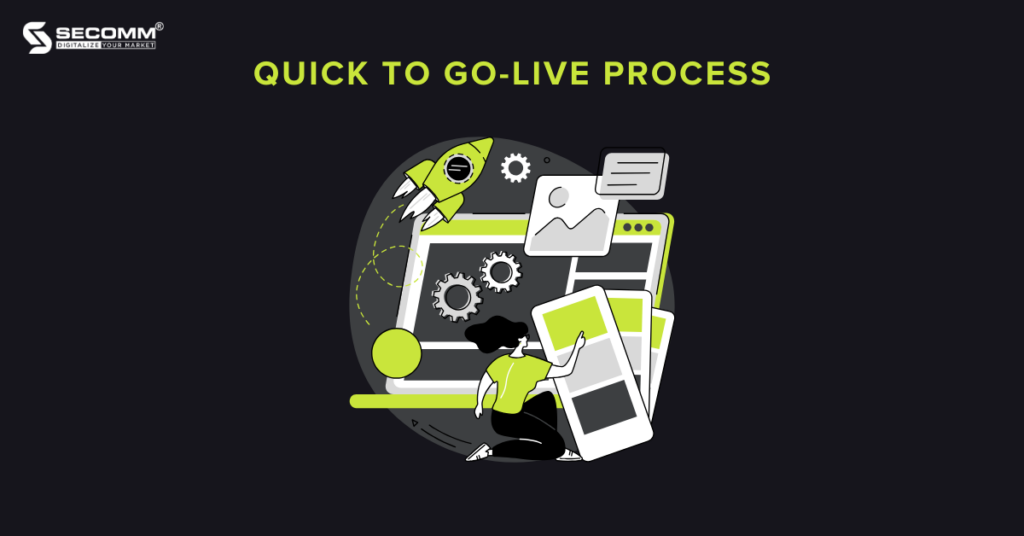
Shopify Plus provides a range of security measures and features to ensure that business data, customer information, and payment transactions are safeguarded to the highest extent possible. This includes:
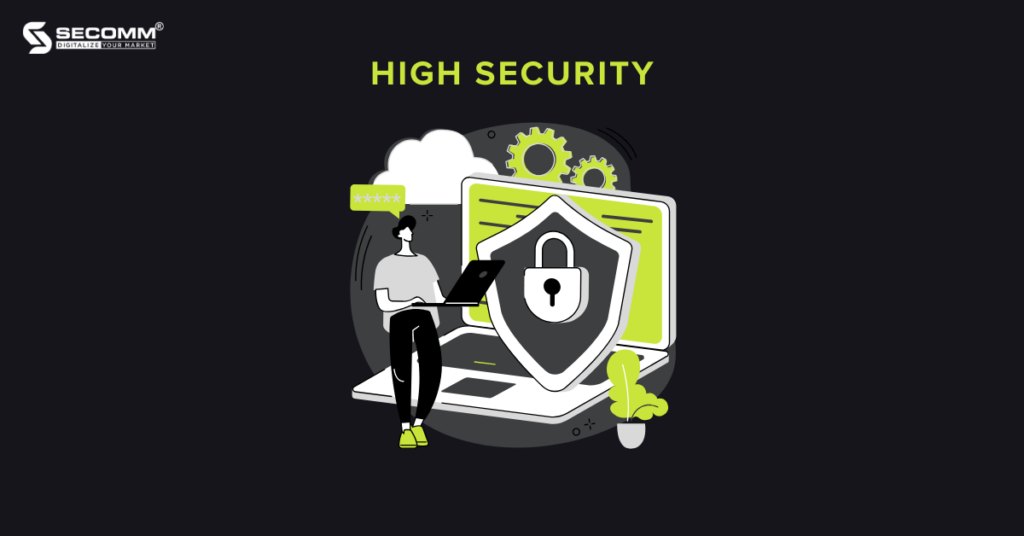
Similar to other eCommerce platforms, Shopify Plus provides businesses with 24/7 support through hotlines, emails, and video calls in various languages. Additionally, this platform offers instructional materials, API documentation, and the Shopify Plus Merchant Success program where businesses can access:
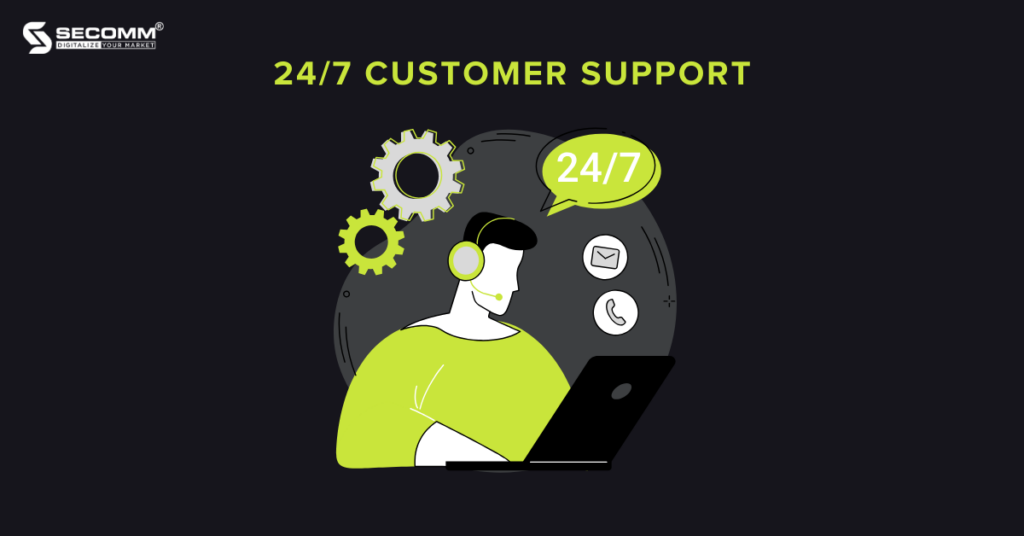
Shopify Plus has a vast and diverse user ecosystem, including businesses, developers, and marketing experts. With numerous leading global businesses choosing Shopify Plus as a key tool to drive their growth and success, it is undoubtedly a testament to the excellence of this platform.
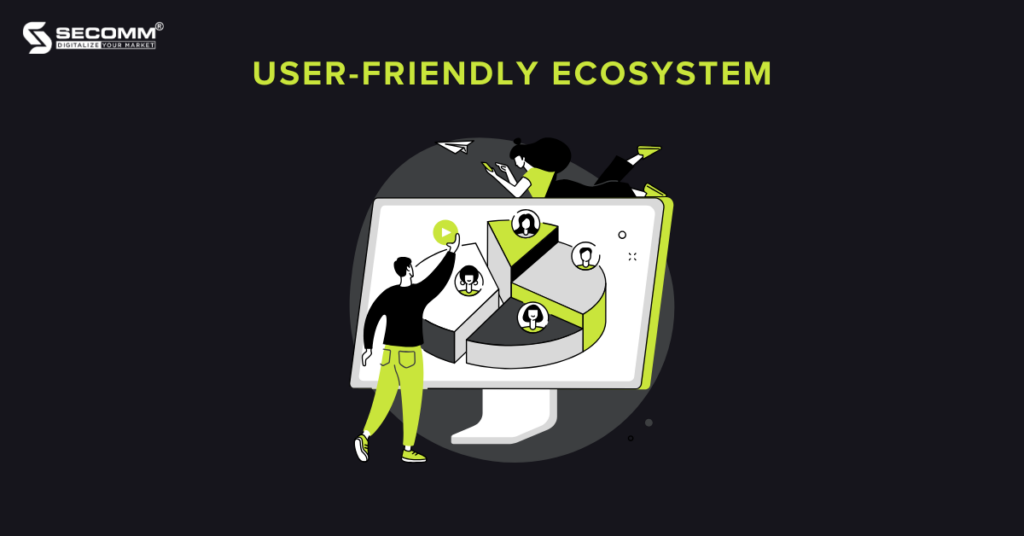
Renowned names such as Gymshark, Glossier, MZ Wallace, and Emma Bridgewater have leveraged the power of Shopify Plus to create customized shopping experiences, expand sales volumes, and reach a broader customer base. Their presence has added another reason encouraging you to switch to Shopify Plus.
With flexible customization, scalability, and support from a reliable team of experts, the decision to deploy eCommerce with Shopify Plus or migrate from another platform to Shopify Plus has been right for sustained and competitive growth in the eCommerce landscape.
Contact SECOMM or call the hotline at 028 7108 9908 for advice and support to swiftly and effectively switch to Shopify Plus.
 2
2
 6,221
6,221
 0
0
 1
1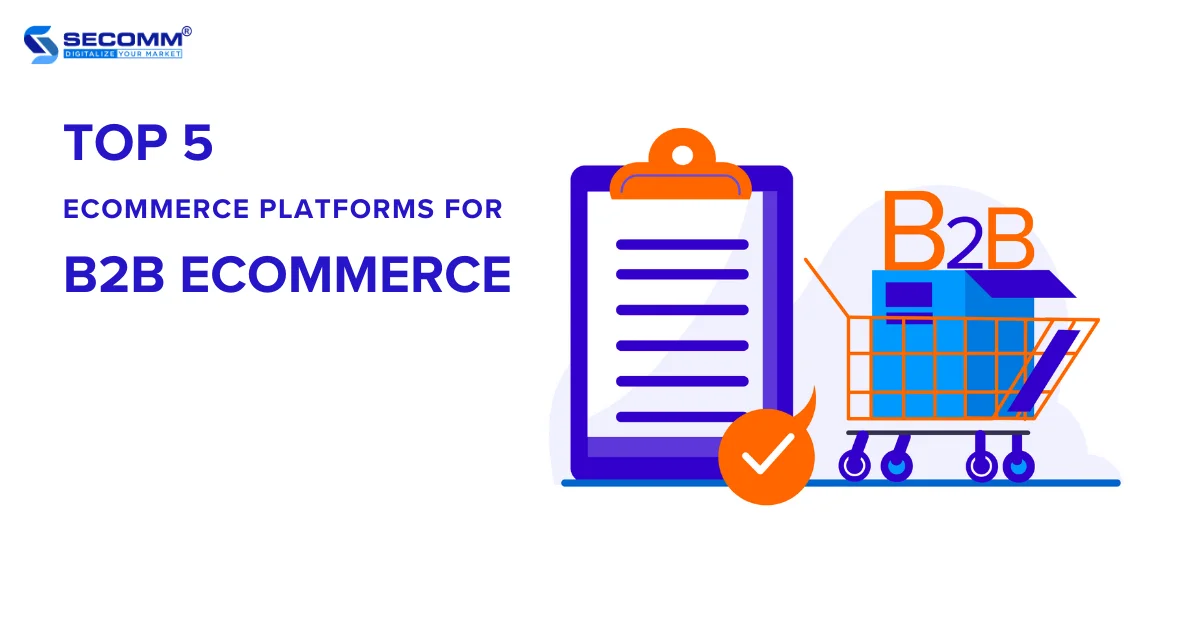
The global B2B eCommerce market is expected to reach $18.771.4 trillion by 2027.
According to McKinsey & Company, B2B enterprises are expanding their touchpoints in eCommerce, with 80% making online channels perform better than offline channels.
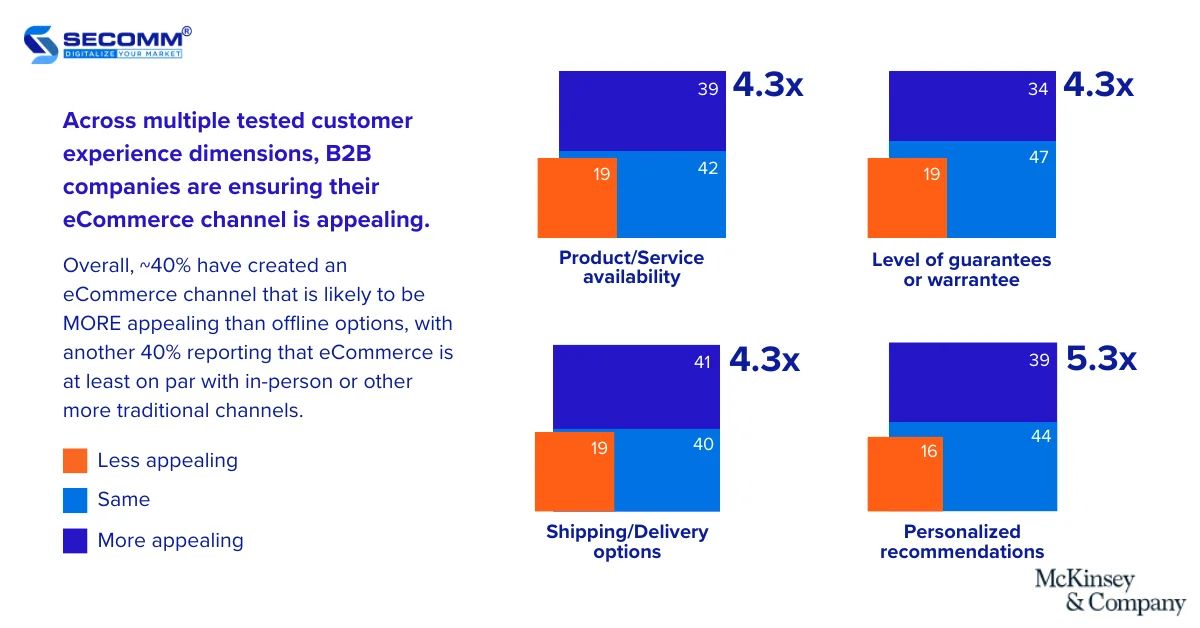
Therefore, B2B eCommerce is a rapidly growing market, with projected sales expected to reach 12.2 trillion USD by 2023. To succeed in this market, businesses always need a robust eCommerce platform.
It is crucial for businesses to clearly define the specificities and considerations of B2B eCommerce before deciding on which eCommerce platform to implement.
Specifically, Business-to-Business (B2B) eCommerce involves commercial transactions between businesses. As a result, B2B eCommerce has distinct characteristics compared to Business-to-Consumer (B2C) eCommerce, namely:
To succeed in B2B eCommerce, businesses need to take note of the following considerations:
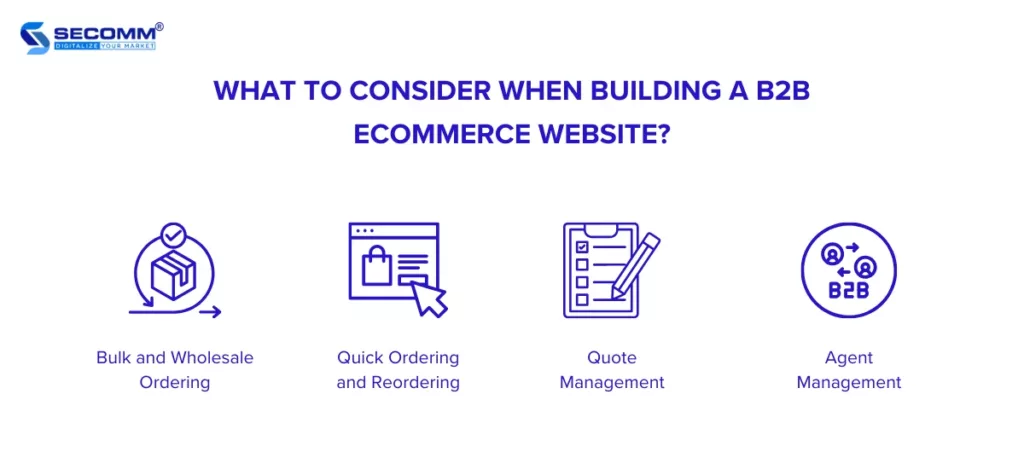
Bulk and wholesale ordering are crucial factors in the revenue of B2B businesses. The quantity and pricing can vary for each business depending on the customer group and the purchased product categories.
To efficiently handle these orders in B2B eCommerce, businesses need to use order management systems and establish clear, detailed, and appropriate order processing workflows.
The feature of quick ordering is often provided by B2B eCommerce platforms, allowing customers to create and place orders with just a few clicks. Quick ordering can be implemented through various methods, such as:
Unlike individual customers, B2B customers often repeat purchases of specific product categories in seasonal quantities. Therefore, B2B businesses should also incorporate a feature to remember previous orders for quick reordering.
Quote management in B2B eCommerce is a crucial process that helps businesses provide accurate and timely pricing information to customers, ultimately increasing sales and improving profits.
Specifically, in quote management, negotiating prices with multiple quote versions or from different suppliers is an important part of many B2B eCommerce models, allowing businesses to negotiate prices for large or complex transactions.
Managing information about agents, such as agent details, agent approval processes, agent hierarchies, credit limits, stock management for each agent, and managing discounts/commissions for agents, is essential.
Additionally, for B2B models involving multiple manufacturers and distributors, there may be a need for additional management of relationships between these entities and agents.
Therefore, depending on the current offline business model and the B2B eCommerce business model that the business aims to establish the most effective agent management process should be detailed.
Below are the top 5 eCommerce platforms for B2B businesses, capable of addressing the specificities of B2B eCommerce.
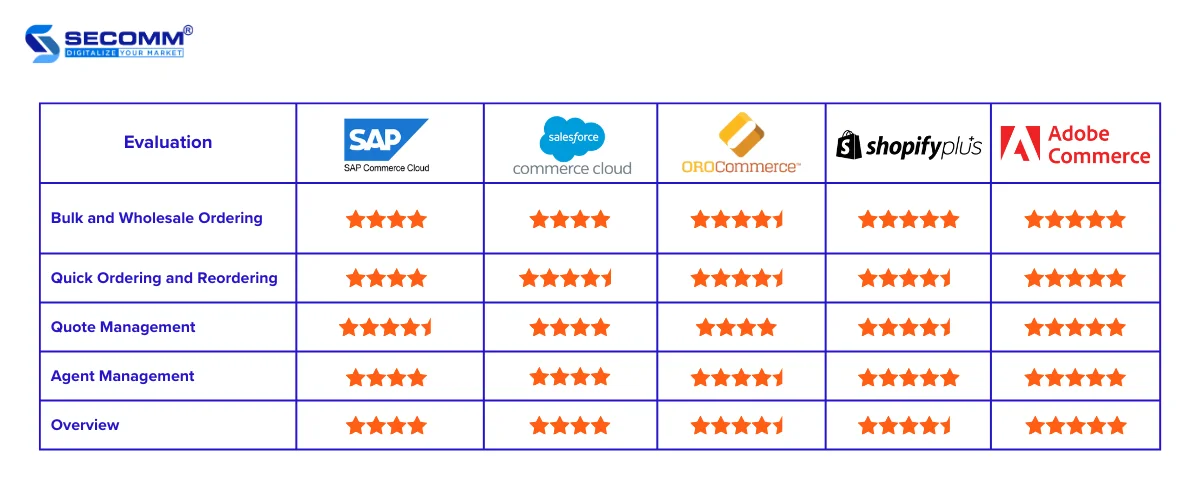
SAP Commerce Cloud is a powerful eCommerce platform suitable for B2B eCommerce businesses.
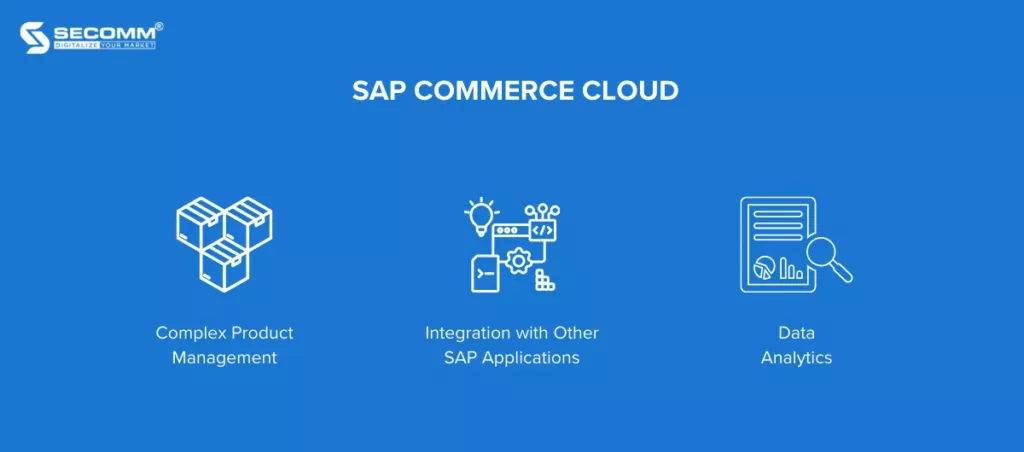
Here are some ways in which SAP Commerce Cloud can cater to B2B eCommerce:
Therefore, SAP Commerce Cloud can align with B2B eCommerce by offering features and customization capabilities to meet the specific requirements of businesses in the B2B industry.
Salesforce B2B Commerce is an eCommerce platform designed for large enterprises, including B2B businesses.
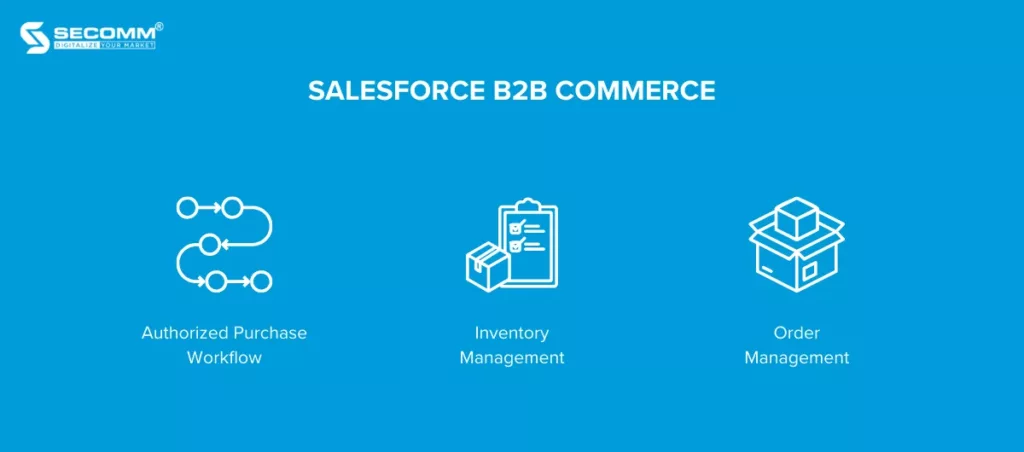
Here are some specific features and functionalities of Salesforce B2B Commerce that are suitable for B2B eCommerce:
In summary, the B2B functionalities of Salesforce B2B Commerce help B2B businesses enhance sales and customer service effectiveness.
OroCommerce is an open-source eCommerce platform designed for B2B enterprises. This platform provides powerful and flexible features, catering to the needs of B2B businesses of all sizes.
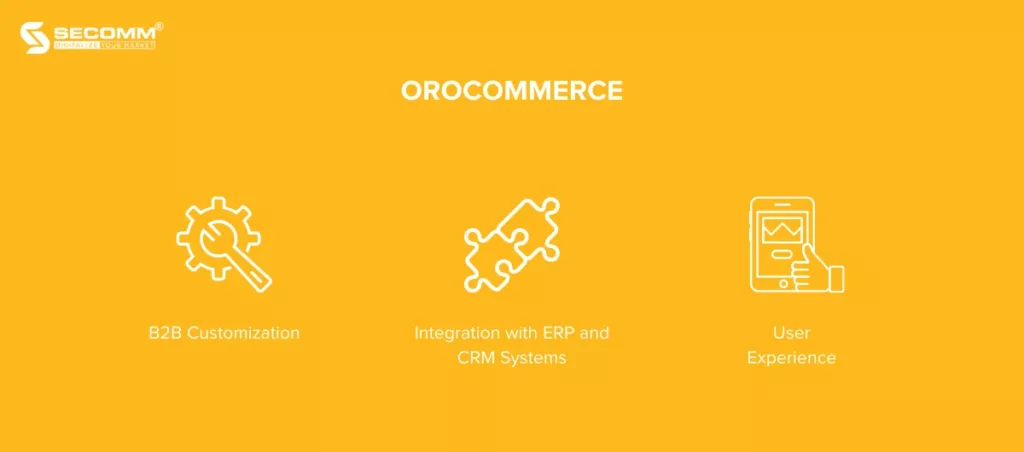
OroCommerce offers several features and functionalities specifically suitable for B2B eCommerce, including:
Overall, OroCommerce is a robust eCommerce platform worth considering for B2B enterprises.
Shopify Plus is a cloud-based SaaS eCommerce platform designed for large enterprises, especially B2B businesses.
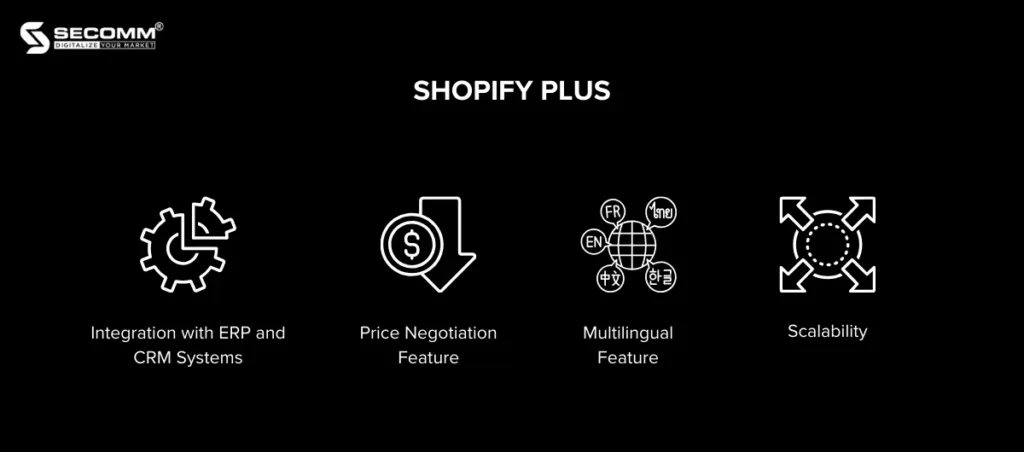
Shopify Plus provides powerful features and functionalities to meet the needs of B2B enterprises, including:
Some notable features of Shopify Plus that businesses can leverage include Shopify Flow, Shopify Launchpad, Shopify Payments, Shopify POS, etc.
Therefore, Shopify Plus is also an excellent choice for B2B businesses looking for a robust, flexible, and scalable eCommerce platform.
Xem thêm: 15 Lý do để chuyển đổi sang nền tảng Shopify Plus
Adobe Commerce (Magento) is a powerful and flexible eCommerce platform suitable for various types of businesses, including B2B enterprises.
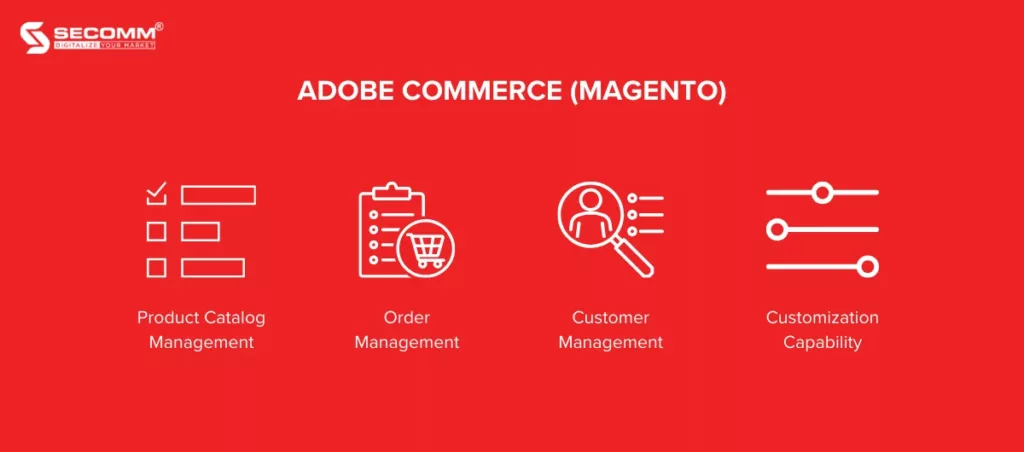
Adobe Commerce offers many features and functionalities that are well-suited for B2B eCommerce, including:
Moreover, Adobe Commerce can quickly deploy B2B-specific features thanks to its diverse ecosystem. It is also the most customizable platform among the five mentioned.
Additionally, Adobe Commerce has a large and active user community, providing support and resources for B2B businesses.
Read more: Shopify Plus vs Adobe Commerce: Key Differences 2023
Above are 5 popular platforms preferred by B2B businesses to build eCommerce websites, serving online business goals for brands.
However, choosing the most suitable platform for each business will depend on various factors, including business strategy, budget, deployment timeline, and the long-term direction set by business managers.
With deep expertise and the development of complex eCommerce systems for clients such as Changi Airport Group (Singapore), Trentham Estate (Australia), and The Warehouse (Vietnam), SECOMM understands the challenges in choosing a platform and deploying eCommerce that businesses are facing.
Contact SECOMM now or call directly at the hotline number (028 7108 9908) for free advice on the eCommerce website building roadmap!
 2
2
 7,748
7,748
 0
0
 1
1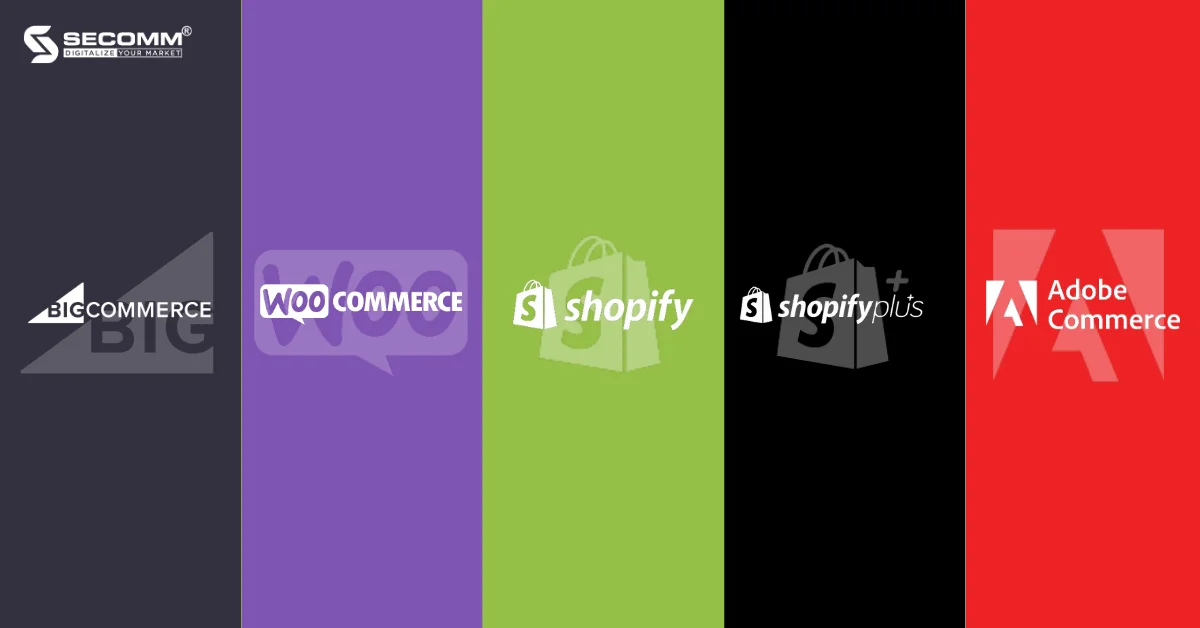
The global B2C eCommerce market is valued at 4.44 trillion USD in 2023 and is projected to reach 7.45 trillion USD by 2030, with a compound annual growth rate (CAGR) of 7.6% during the forecast period from 2021 to 2030.
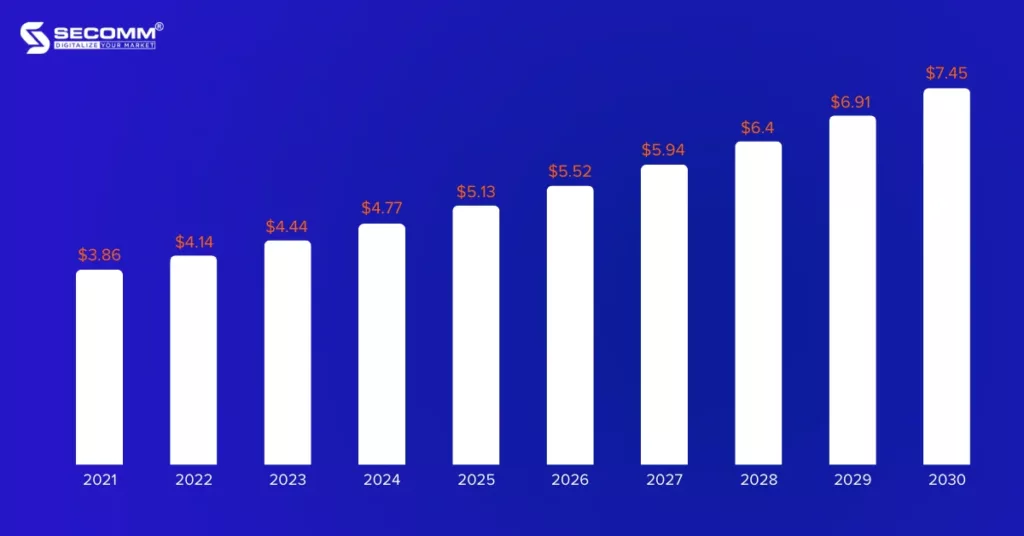
This demonstrates that eCommerce is increasingly thriving, becoming a crucial sales channel for B2C businesses. To build and develop a successful online store, businesses need to choose an eCommerce platform that aligns with their needs and business objectives.
B2C eCommerce platforms typically provide a seamless shopping journey, and user-friendly interfaces, allowing customers to easily navigate, search for items, and complete transactions quickly.
This is achieved through professional UI/UX design and advanced functionality systems for eCommerce websites.
An exemplary example is CHARLES & KEITH, a fashion eCommerce website, designed with sophistication and appeal, along with easy navigation and search capabilities.
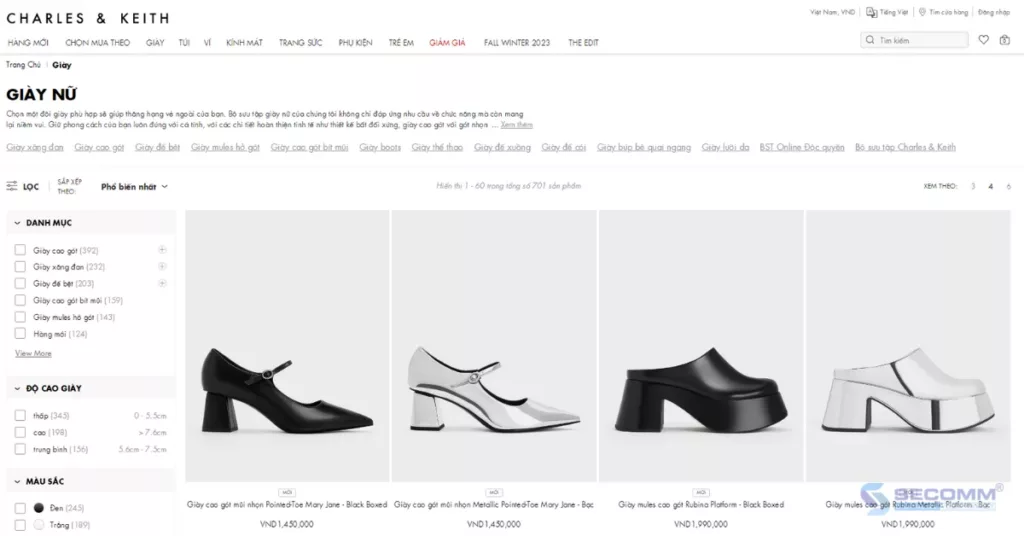
According to Statista’s statistics, the expected number of smartphone users worldwide is projected to reach 4.96 billion by 2025. This indicates that mobile commerce is virtually indispensable in B2C eCommerce strategies.
Consumers increasingly desire the ability to shop anytime, anywhere, even while on the move, and optimizing eCommerce websites for mobile devices will meet this consumer demand.
Choosing a suitable eCommerce platform will support a range of mobile-optimized themes catering to various industries and preferences, enabling businesses to establish an effective online store and navigate for mobile users.
Leading B2C eCommerce platforms will have a streamlined order processing system, ensuring a hassle-free payment experience for both business owners and buyers.
OneStep Checkout is a typical example that allows customers to complete their order payment on a single page. This simplifies and facilitates the payment process for customers, potentially increasing conversion rates.
Businesses can refer to PNJ’s Checkout page for comprehensive information on streamlining the shipping process all within one webpage.
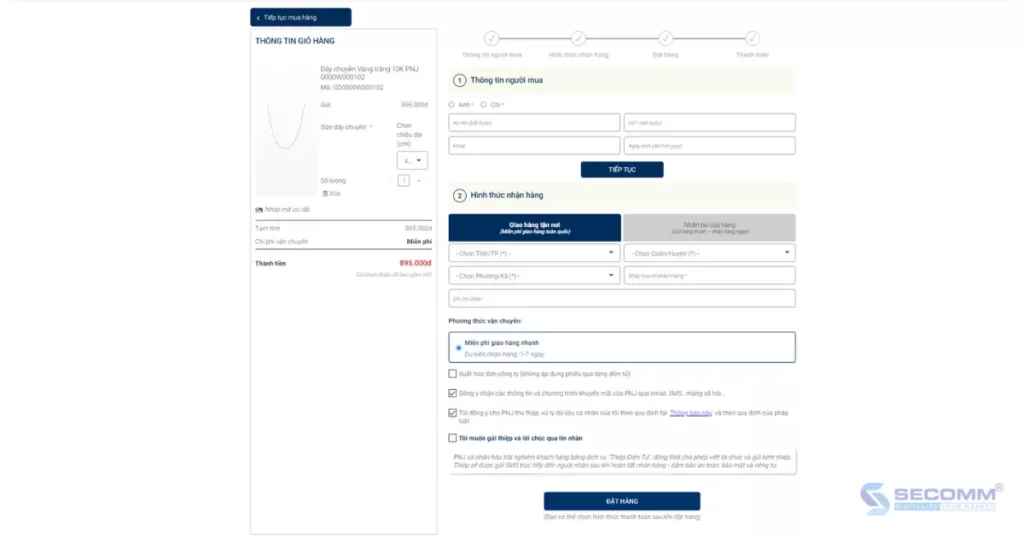
Personalization tools allow businesses to tailor content and promotions based on consumer behaviour and preferences, supported by AI.
By integrating personalized features at relevant touchpoints within an eCommerce website, businesses can enhance conversion rates and ROI (Return on Investment).
Major eCommerce brands like Amazon, Alibaba, Best Buy, etc., consistently incorporate product recommendation features to encourage shopping behaviour from customers.
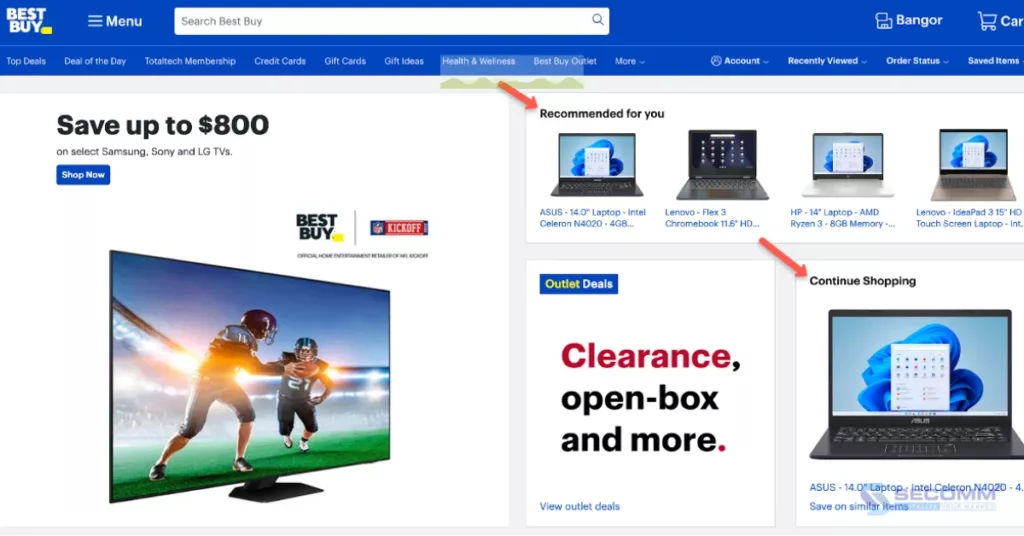
Another crucial aspect of B2C eCommerce is the ability for pages to load quickly and efficiently, ensuring the website maintains stable performance and effectively delivers content on all devices.
To ensure website performance, businesses should opt for major eCommerce platforms such as Adobe Commerce (Magento), Shopify Plus, BigCommerce Enterprise, etc. These platforms offer advanced performance features and robust caching mechanisms, tailored for various industries and preferences, enabling businesses to establish online stores with responsive feedback and faster page loading.
Below are the top 5 eCommerce platforms that SECOMM has evaluated as suitable for businesses following the B2C model.
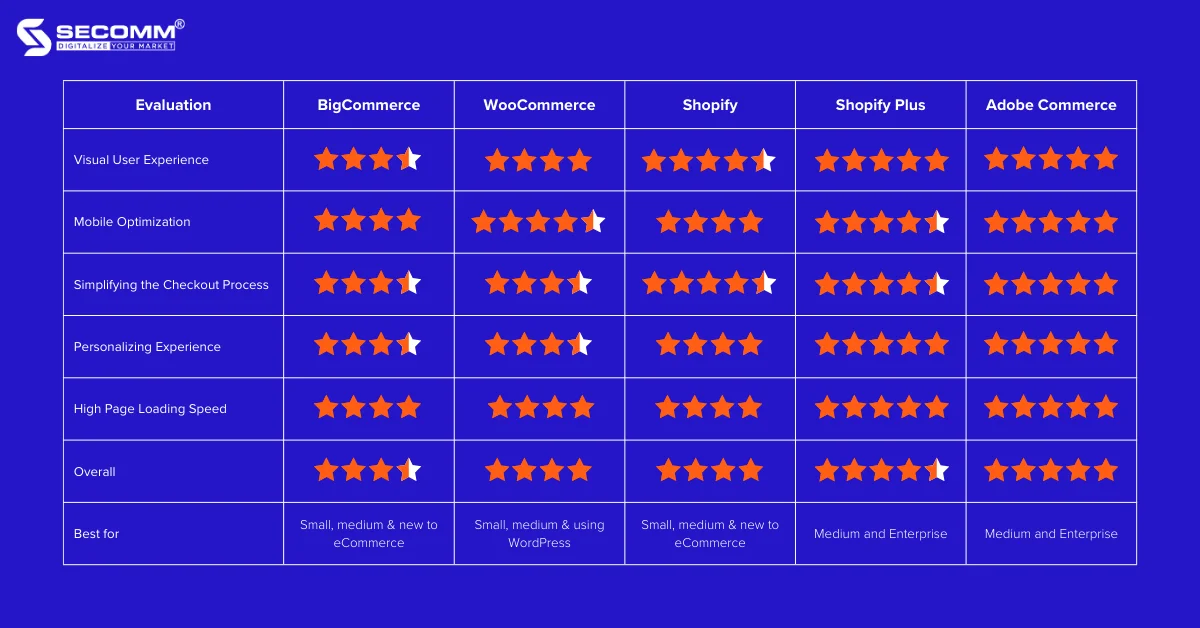
BigCommerce is an eCommerce platform designed for ease of use to assist businesses in initiating their journey to build an eCommerce website.
After years of development, BigCommerce has become one of the feature-rich platforms available for creating websites, optimizing search tools, marketing, etc., with reasonable deployment costs.
Compared to other popular platforms mentioned in this article, the performance, features, and application ecosystem of BigCommerce are not overly outstanding. However, BigCommerce remains a good choice for small, and medium-sized businesses, or those entering the market.
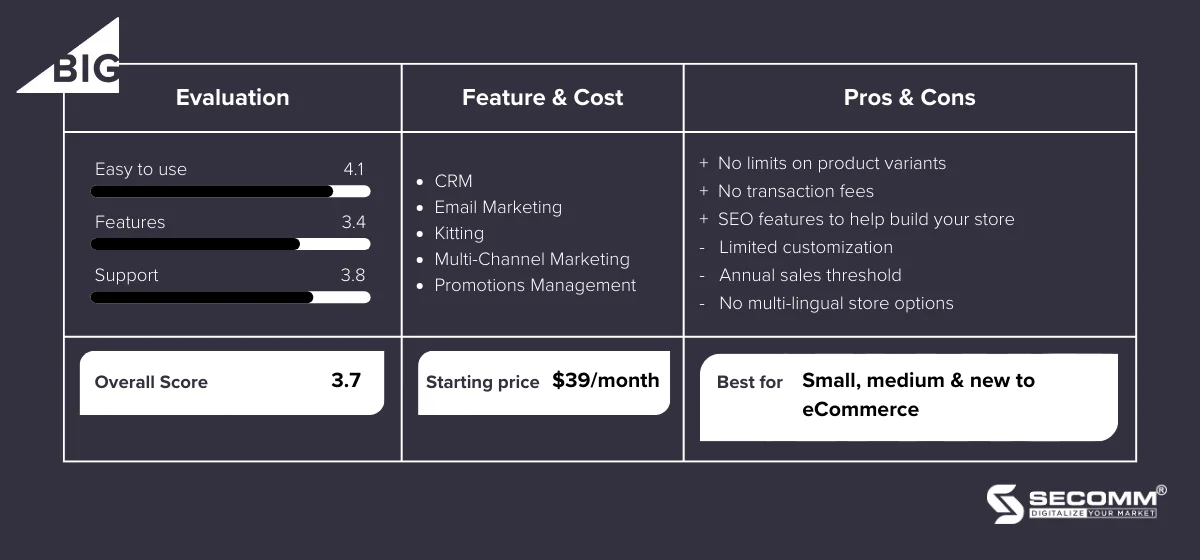
Read more: Shopify vs BigCommerce: Which platform is right for you?
WooCommerce is a free WordPress plugin that enables brands to establish an eCommerce website by adding eCommerce functionality to an existing WordPress site. The WooCommerce plugin helps transform a regular WordPress website into an eCommerce site with all the necessary features, easily customizable with just a few clicks.
Businesses can leverage the extensive ecosystem of WooCommerce to upgrade both functionality and design for the most suitable interface. Therefore, WooCommerce is also a good choice for small or medium-sized B2C businesses, especially those that have previously used WordPress.
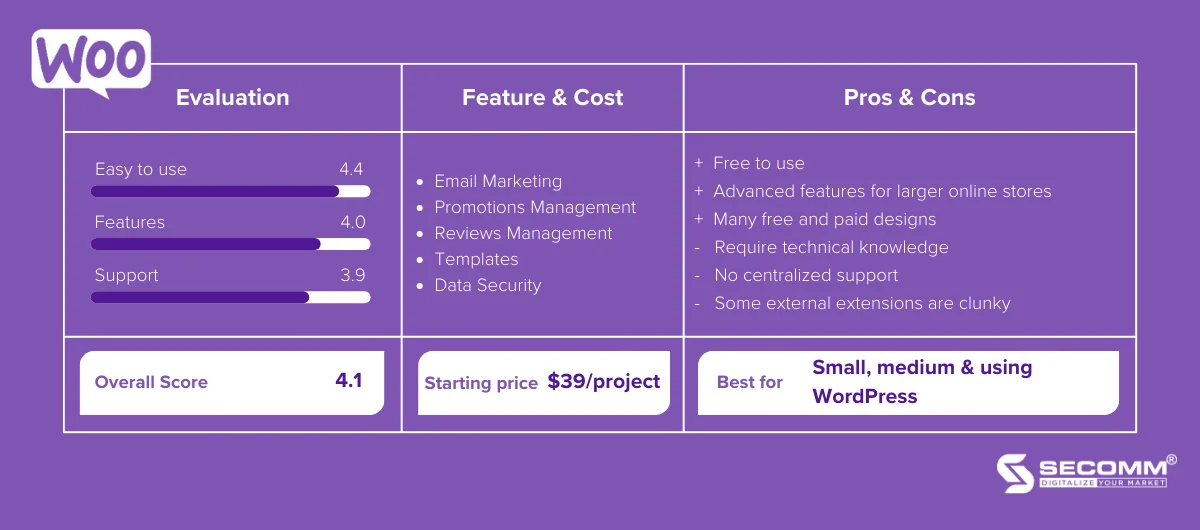
Shopify is one of the popular eCommerce platforms that businesses can use to build, develop, and manage online stores.
Shopify operates on the SaaS (Software as a Service) model, so businesses pay a monthly fee to use the platform and must adhere to its regulations.
However, Shopify manages hosting and takes responsibility for technical issues to ensure the safety and efficient operation of the business’s eCommerce website.
The platform provides the necessary features and benefits for businesses to successfully build and develop an online store. In terms of suitability for B2C businesses, Shopify is most suitable for small to medium-sized enterprises or those entering the eCommerce market.
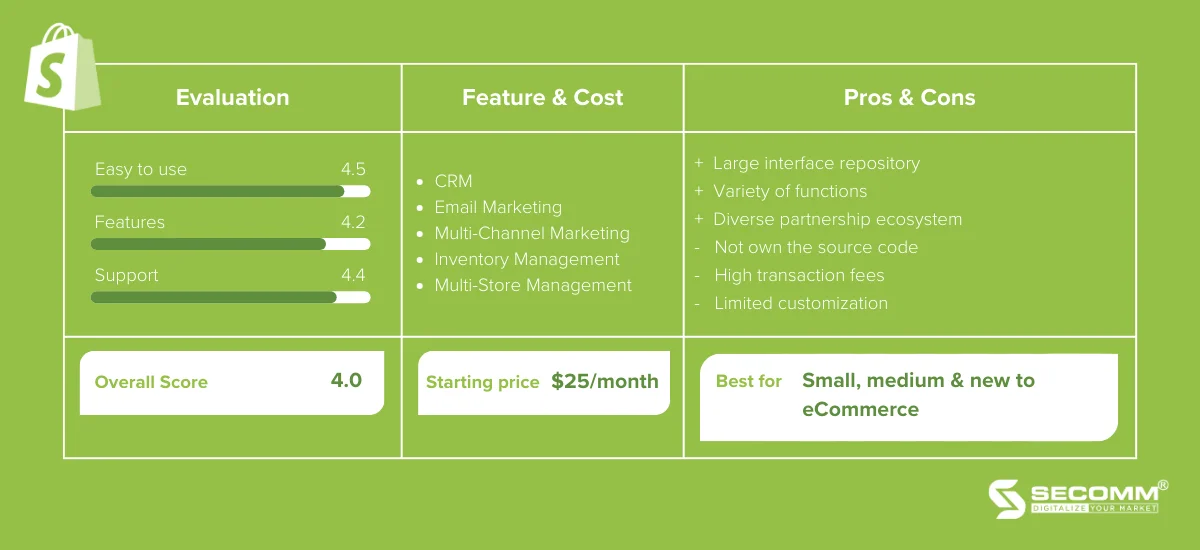
Shopify Plus is the enterprise-level version of the eCommerce platform provided by Shopify, specifically designed for large brands with an annual transaction value of over 1 million USD and high growth rates.
Unlike Shopify, Shopify Plus follows the PaaS (Platform as a Service) model, allowing businesses to utilize the development environment of Shopify Plus to develop databases, web servers, functionality, etc., for their eCommerce system.
The initial cost for using Shopify Plus is around $2,000 per month and increases gradually based on revenue. Therefore, using this platform to meet the needs of B2C eCommerce or any industry-specific requirements is relatively straightforward.
However, Shopify Plus is more suitable for medium to large-scale businesses as it requires technical knowledge and involves relatively high usage costs.
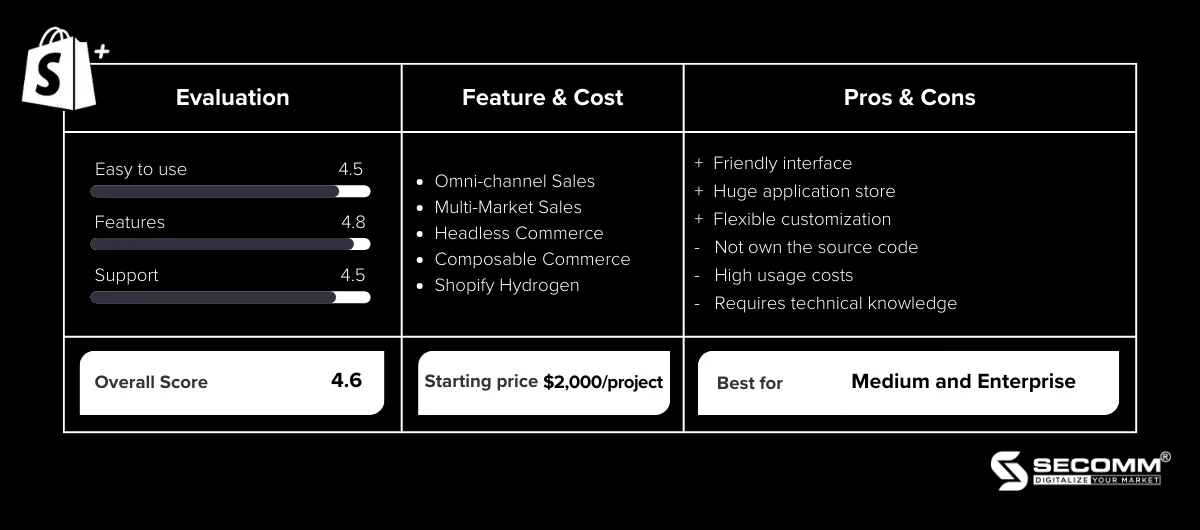
Read more:
Adobe Commerce is an open-source eCommerce platform specially designed to serve medium to large-scale businesses, offering high customization and scalability. Currently, Adobe Commerce has two main versions: Adobe Commerce Cloud and Magento Open Source.
As one of the leading platforms in eCommerce, Adobe Commerce is consistently highly regarded across all scales and industries, including B2C eCommerce businesses.
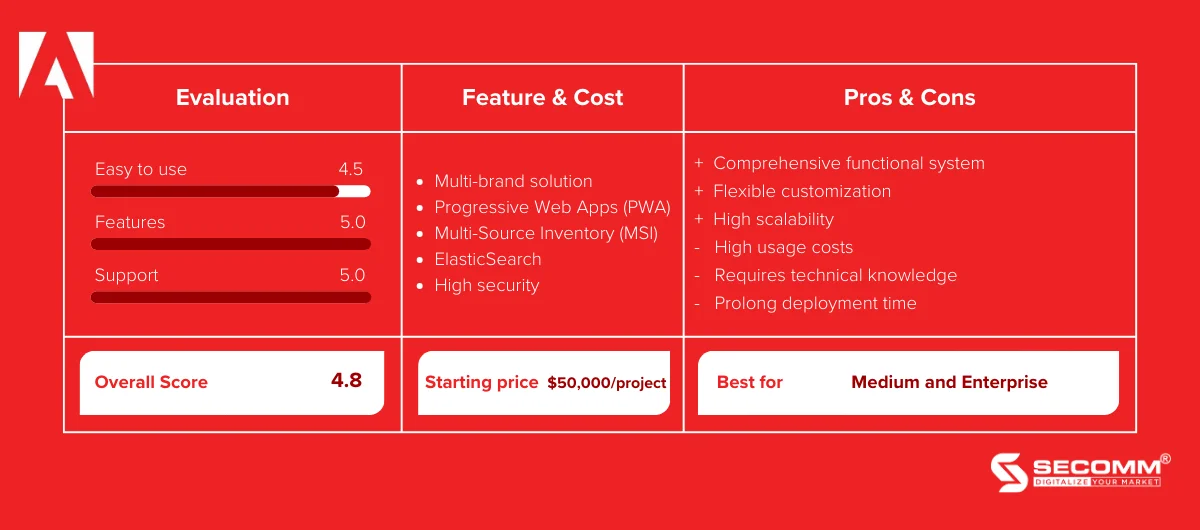
Read more:
Above are the 5 popular platforms that B2C businesses prefer to use for building eCommerce websites, catering to online business goals for their brands.
However, choosing the most suitable platform for each business will depend on various factors such as business strategy, budget, deployment time, and the long-term direction set by business managers.
With deep expertise and the development of complex eCommerce systems for clients such as Changi Airport Group (Singapore), Trentham Estate (Australia), and The Warehouse (Vietnam), SECOMM understands the challenges in choosing a platform and deploying eCommerce that businesses are facing.
Contact SECOMM now or call directly at the hotline number (028 7108 9908) for free advice on the eCommerce website building roadmap!
 2
2
 8,783
8,783
 0
0
 1
1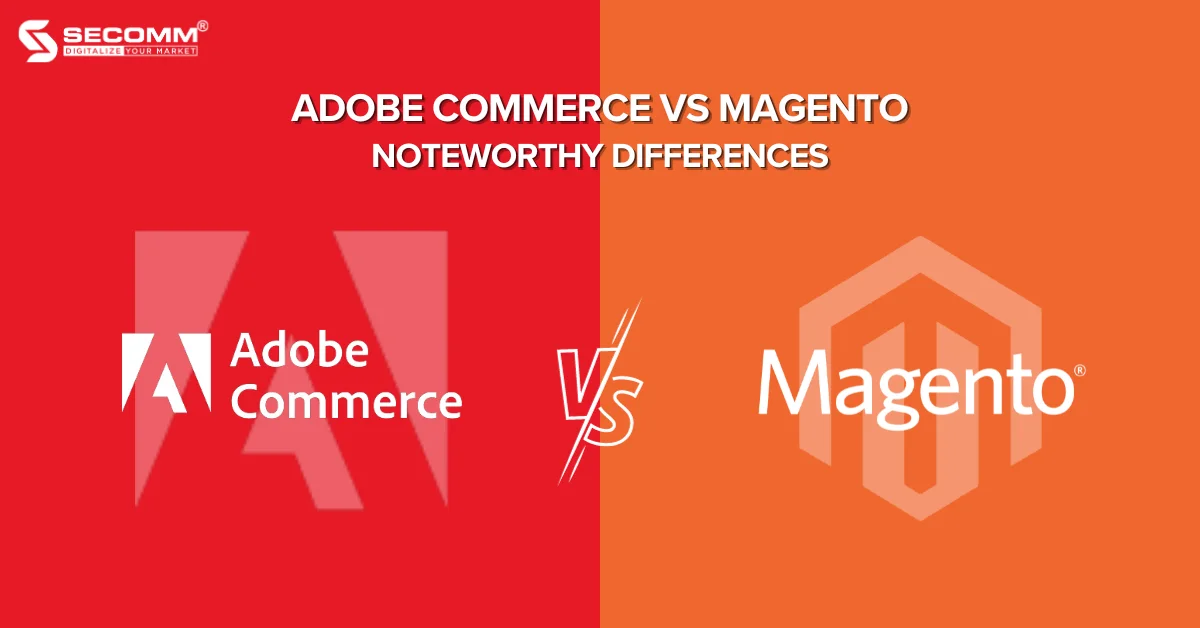
Magento and Adobe Commerce are considered popular eCommerce platforms, used by hundreds of thousands of businesses worldwide.
Both platforms have strong growth potential in the future, given the increasing trend of eCommerce and the demand for robust and flexible eCommerce solutions.
Magento is an open-source eCommerce platform used by over 300,000 eCommerce websites before being officially acquired by Adobe in 2018. Magento is known for its performance, user-friendliness, scalability, and security, especially in Magento 2.0.
Since its establishment, Magento has provided two main versions for businesses:
Currently, there are two main versions:
Magento Open Source and Adobe Commerce. Adobe Commerce is further divided into two versions, On-Premise (referred to as Adobe Commerce) and On-Cloud (referred to as Adobe Commerce Cloud).
Magento Open Source is a free, open-source eCommerce platform that requires users to have technical knowledge and skills to install, build, and manage the website. This platform also takes time and money to deploy basic to advanced features.
Key features include:
Depending on the complexity of the system, the cost of deploying a Magento website can fluctuate around $50,000 for the first year.
This is a paid on-premises service from Adobe, so this platform includes all the premium features of Magento Open Source and more.
After merging with Adobe, Magento Commerce was renamed Adobe Commerce and is considered part of the Adobe Experience Cloud—a set of solutions designed to help businesses make informed decisions and provide enhanced customer experiences based on detailed information and data.
Adobe Commerce is often integrated with Adobe Experience Manager, Adobe Analytics, and Adobe Target. Through Adobe Commerce, businesses have access to smart business services provided by Adobe, as well as machine learning capabilities and personalization provided by Adobe Sensei.
This makes Adobe Commerce the perfect eCommerce platform for businesses with complex needs and a desire to leverage leading capabilities to provide superior experiences for customers across multiple devices and channels. However, due to the relatively complex functional eCommerce website system on Adobe Commerce, businesses will need to be autonomous in the complex infrastructure as well.
The following diagram illustrates the reference architecture for deploying Adobe Commerce on AWS infrastructure. Other cloud service providers such as Azure, Google Cloud, and Alibaba Cloud also have similar infrastructure designs and services.
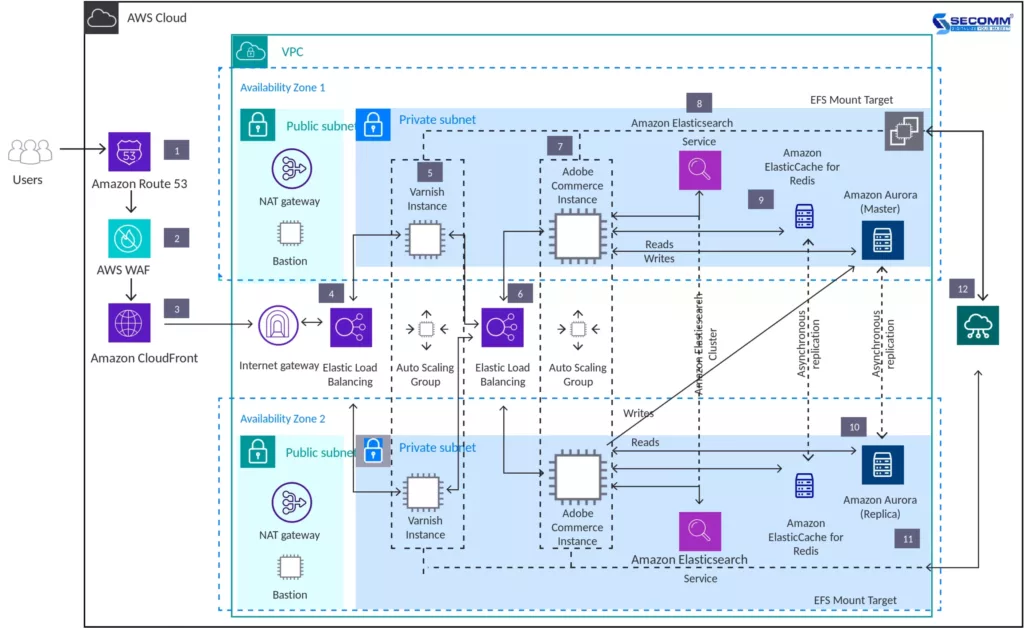
With all the reasons mentioned above, Adobe Commerce will have relatively high deployment costs, around $130,000 per project for the first year, depending on the complexity of the website system.
In contrast to the self-hosted version like Adobe Commerce, Adobe Commerce Cloud is a version that includes cloud services.
Specifically, this platform includes all the features of Adobe Commerce along with enhanced Adobe Cloud infrastructure, including integrated GIT (distributed source code management software) and specific environments for development, staging, and building the website system.
This means that developers using this platform can write code, test, and deploy on suitable environments, ensuring smooth performance.
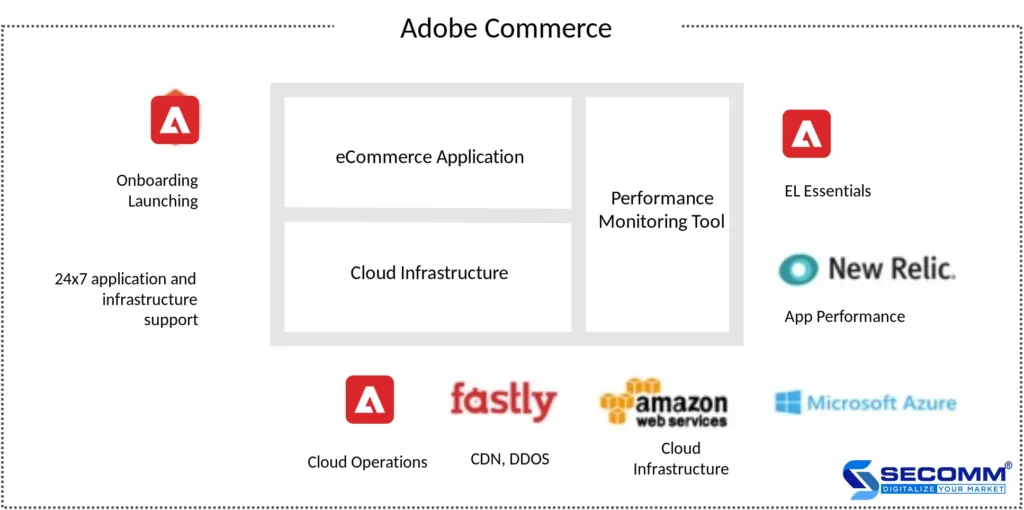
Similar to Adobe Commerce, Adobe Commerce Cloud is also suitable for large enterprises with special requirements because this version can meet all specialized needs, with flexibility and scalability through available management features.
However, the cost for enterprises to deploy Adobe Commerce Cloud will be higher than Adobe Commerce, around $150,000 per project for the first year, depending on the complexity of the website system.
Read more: The cost of building an Adobe Commerce (Magento) website
Although Adobe Commerce and Magento share the same core technology platform, they have functional differences. Magento includes some core features, and businesses can develop or integrate additional features through extensions.
On the other hand, Adobe Commerce includes features from Magento Open Source, along with additional features developed by the Adobe team.
Similarly, Adobe Commerce Cloud includes features from Adobe Commerce, along with advanced and more specialized features designed to address specific challenges for each business.
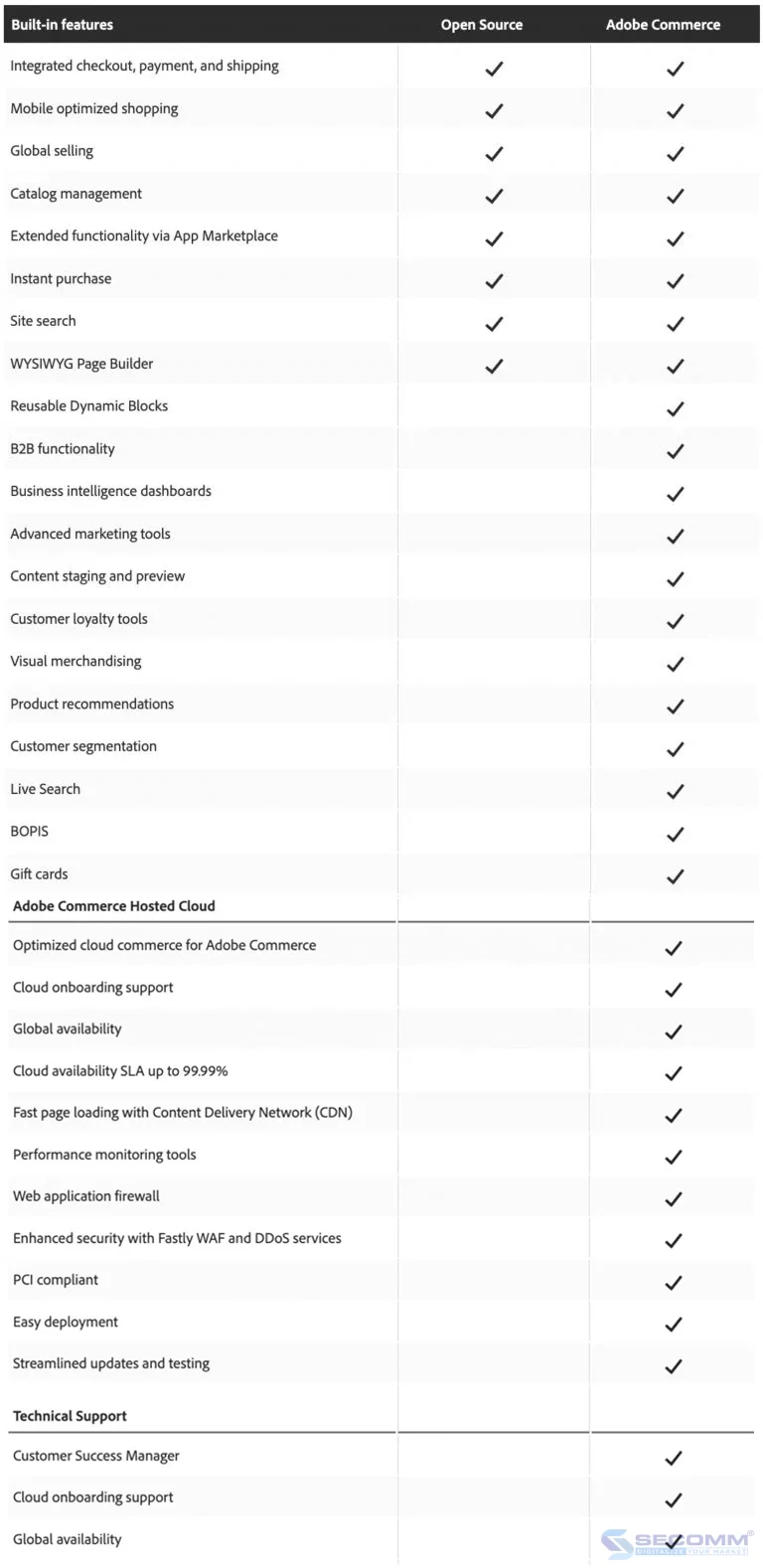
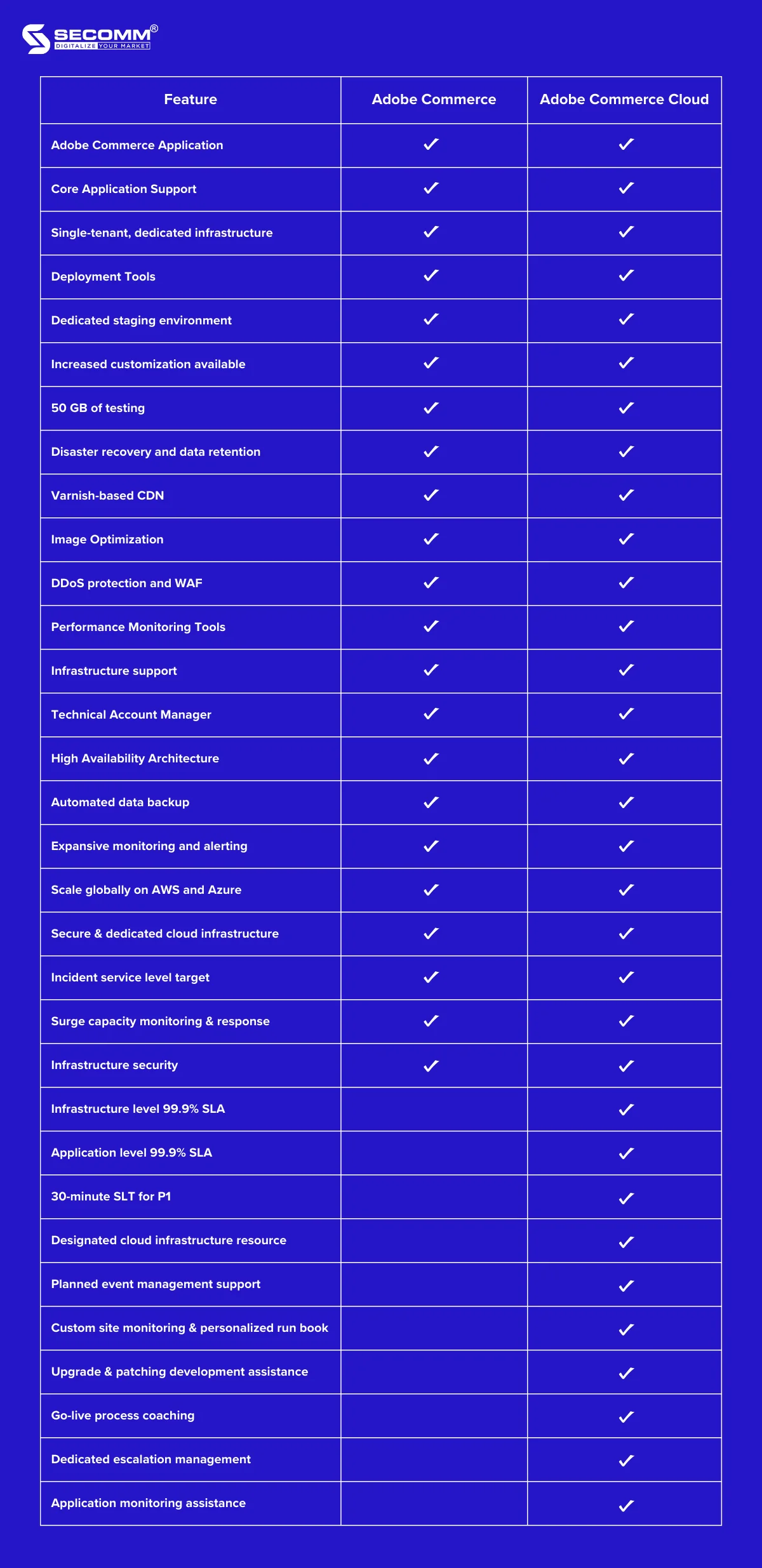
Besides the features, Magento and Adobe Commerce (both versions) also have some other differences.
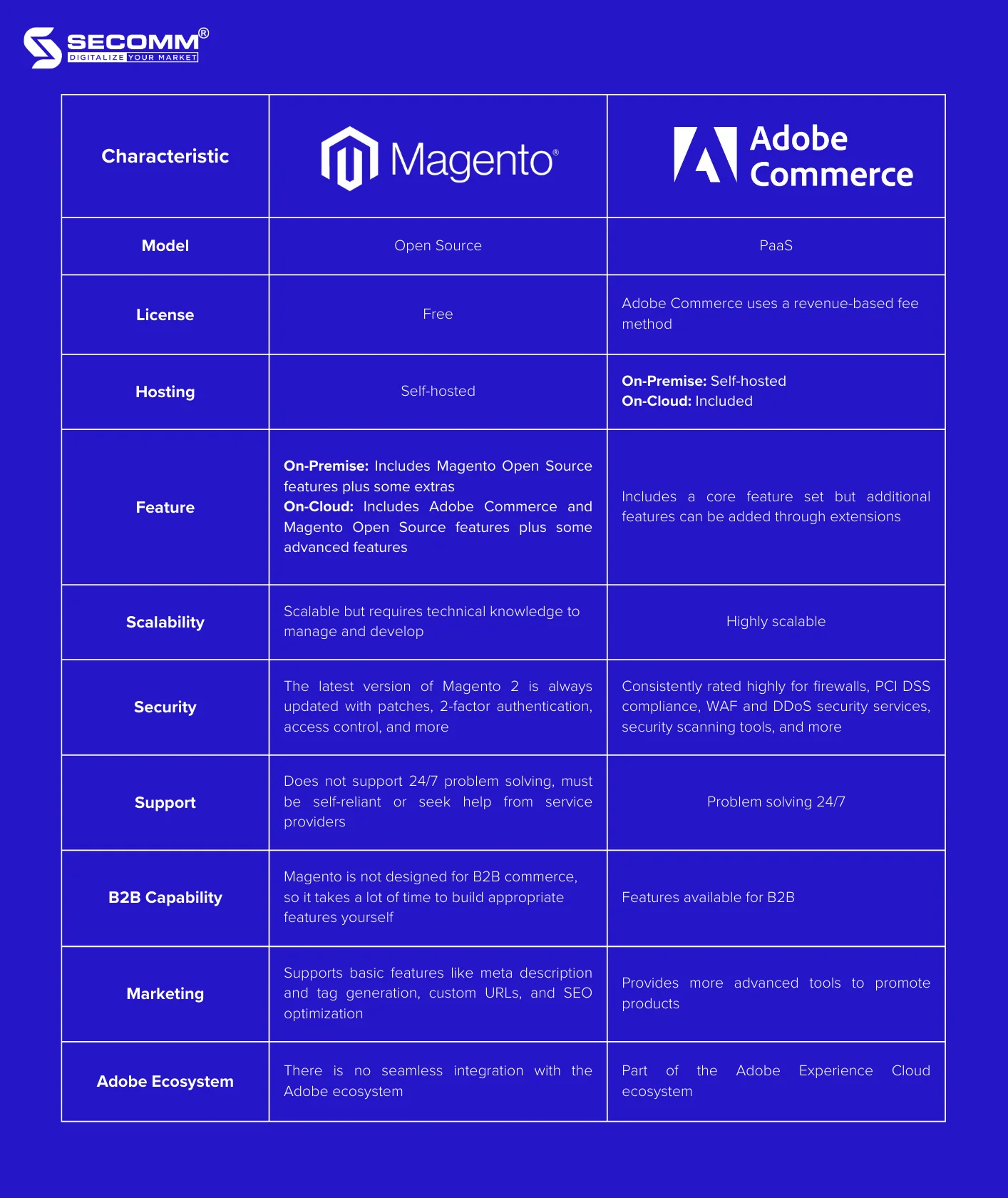
Magento and Adobe Commerce are both powerful eCommerce platforms that can meet the needs of businesses of all sizes. However, there are some notable differences between these two platforms.
Choosing the right eCommerce platform for a brand depends on the specific needs and budget of each business. If a business is a small to medium-sized enterprise, newly entering the market, and only requires basic and advanced features, then Magento Open Source is a good choice.
However, if the business is large and complex, requiring extensive features and scalability, then Adobe Commerce is a better choice.
With deep expertise and the development of complex eCommerce systems for clients such as Changi Airport Group (Singapore), Trentham Estate (Australia), and The Warehouse (Vietnam), SECOMM understands the challenges in choosing a platform and deploying eCommerce that businesses are facing.
Contact SECOMM now or call directly at the hotline number (028 7108 9908) for free advice on the eCommerce website building roadmap!
Read more:
 8
8
 5,799
5,799
 0
0
 1
1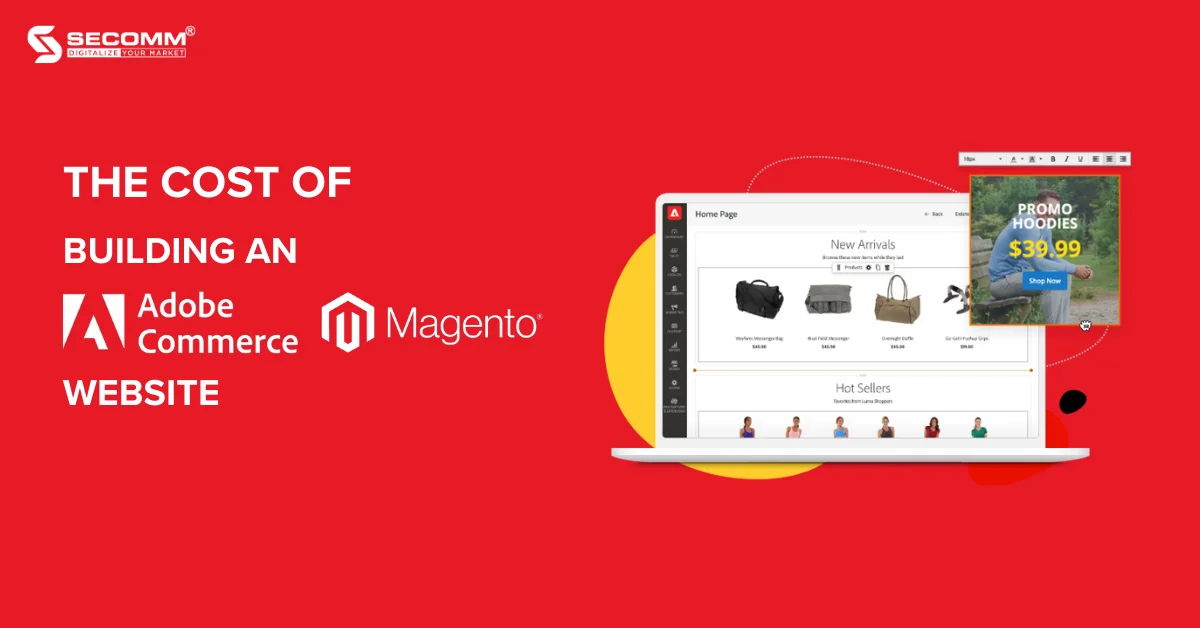
Adobe Commerce (Magento) is a powerful and feature-rich eCommerce platform that can help businesses build and operate professional eCommerce websites.
Therefore, Adobe Commerce is trusted by many businesses, especially medium to large enterprises, with over 100,000 websites, including the Magento Open Source version (According to Builtwith).
So, what is the cost to build a website on Adobe Commerce (Magento)?
Adobe Commerce is an open-source eCommerce platform designed specifically to cater to medium to large-scale businesses, offering high customization and scalability.
Formerly known as Magento Commerce, it was founded in 2007 in Culver City, California, USA. After several changes in ownership, in 2018, Adobe acquired Magento for $1.68 billion and rebranded it as Adobe Commerce.
Today, Adobe Commerce has become an integral part of the Adobe Experience Cloud, a suite of products and services designed to help businesses build, manage, and deliver digital experiences.
Currently, Adobe Commerce has two main versions: Adobe Commerce Cloud and Magento Open Source.
Magento Open Source (referred to as Magento) is a free version that can be downloaded and used by anyone. This version provides essential functions for creating and managing online stores, including:
However, businesses using the free Magento version do not necessarily mean that the cost of building an eCommerce website will be low, as additional costs need to be considered by the business.
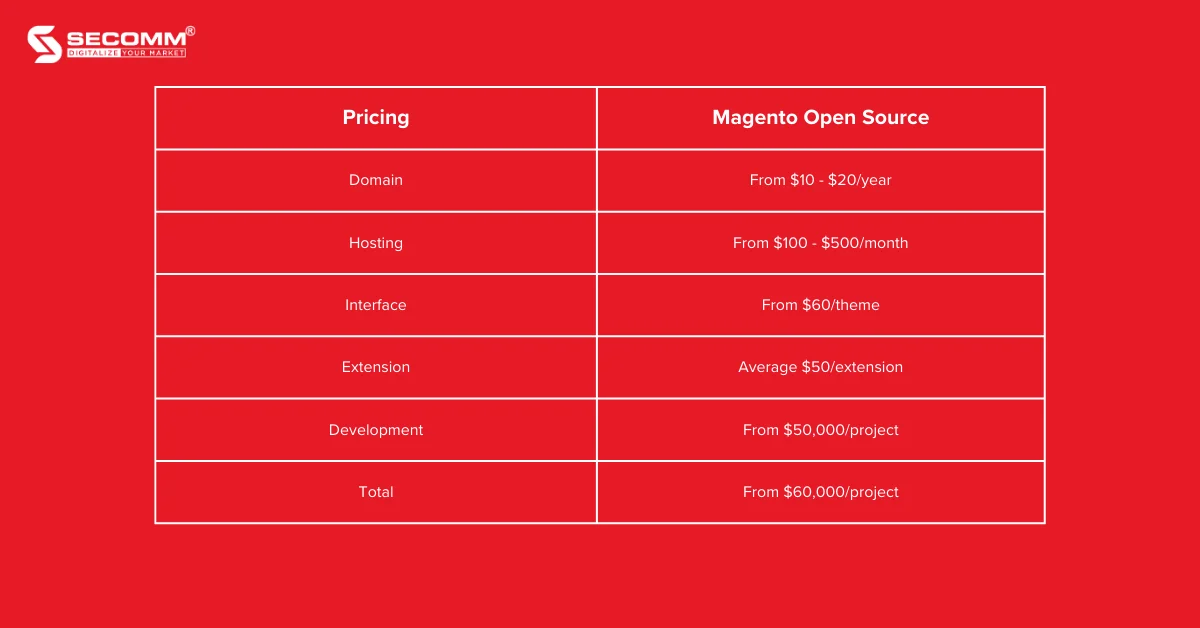
Depending on the complexity of the system, the cost to deploy a Magento website can be lower or higher than $60,000 for the first year.
Read more: The Significant Differences between Magento 1 and Magento 2
Formerly known as Magento Enterprise Edition (EE) or Magento Commerce On-Premise (On-Prem), Adobe Commerce is an enterprise-level option that doesn’t require businesses to manage performance or hosting.
Adobe Commerce is specifically designed for businesses engaged in more complex eCommerce operations, fully supported by Adobe’s technically skilled team. Its built-in features provide businesses with more control without the need for integrating many extensions, as seen in Magento Open Source.
Key features of Adobe Commerce include:
Below is the licensing fee table for Adobe Commerce for businesses based on annual revenue.
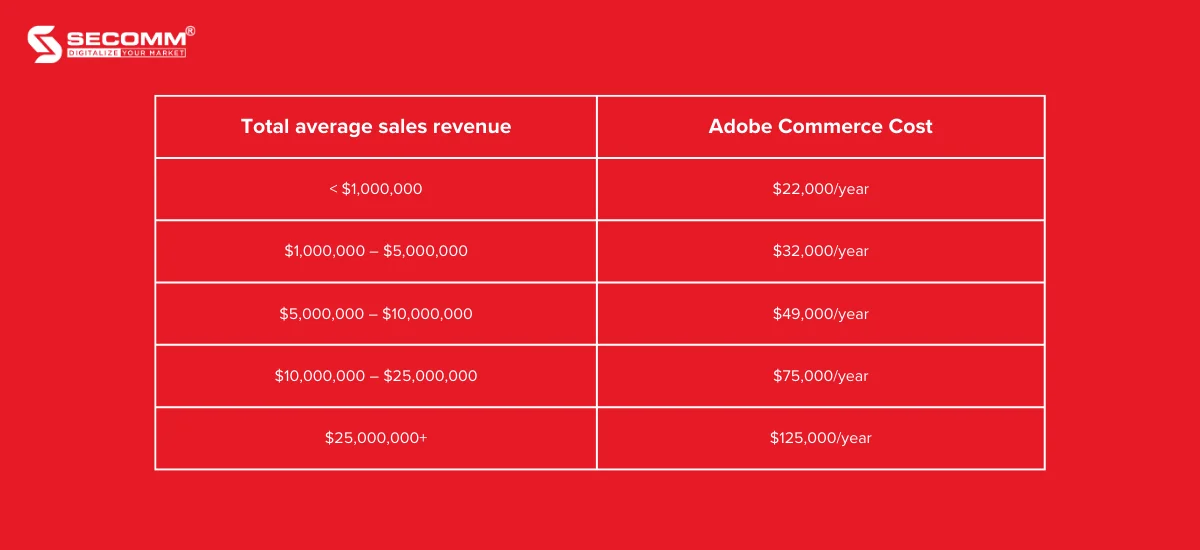
In addition to the license usage fee, businesses need to independently manage other fees such as hosting, domain, interface, website development, extensions, and system maintenance. Therefore, the cost to implement Adobe Commerce will be relatively high, around $130,000 per project for the first year, depending on the complexity of the website system.
Related article: Magento Open Source vs Magento Commerce Real Comparison
Adobe Commerce Cloud is a free version that includes hosting services, technical support specialists, and specialized features to build and operate successful online stores.
The most significant highlight of Adobe Commerce Cloud is the hosting service built on AWS cloud servers and performance monitoring tools such as New Relic and Blackfire.io, reducing additional costs and providing optimal performance for the website system.
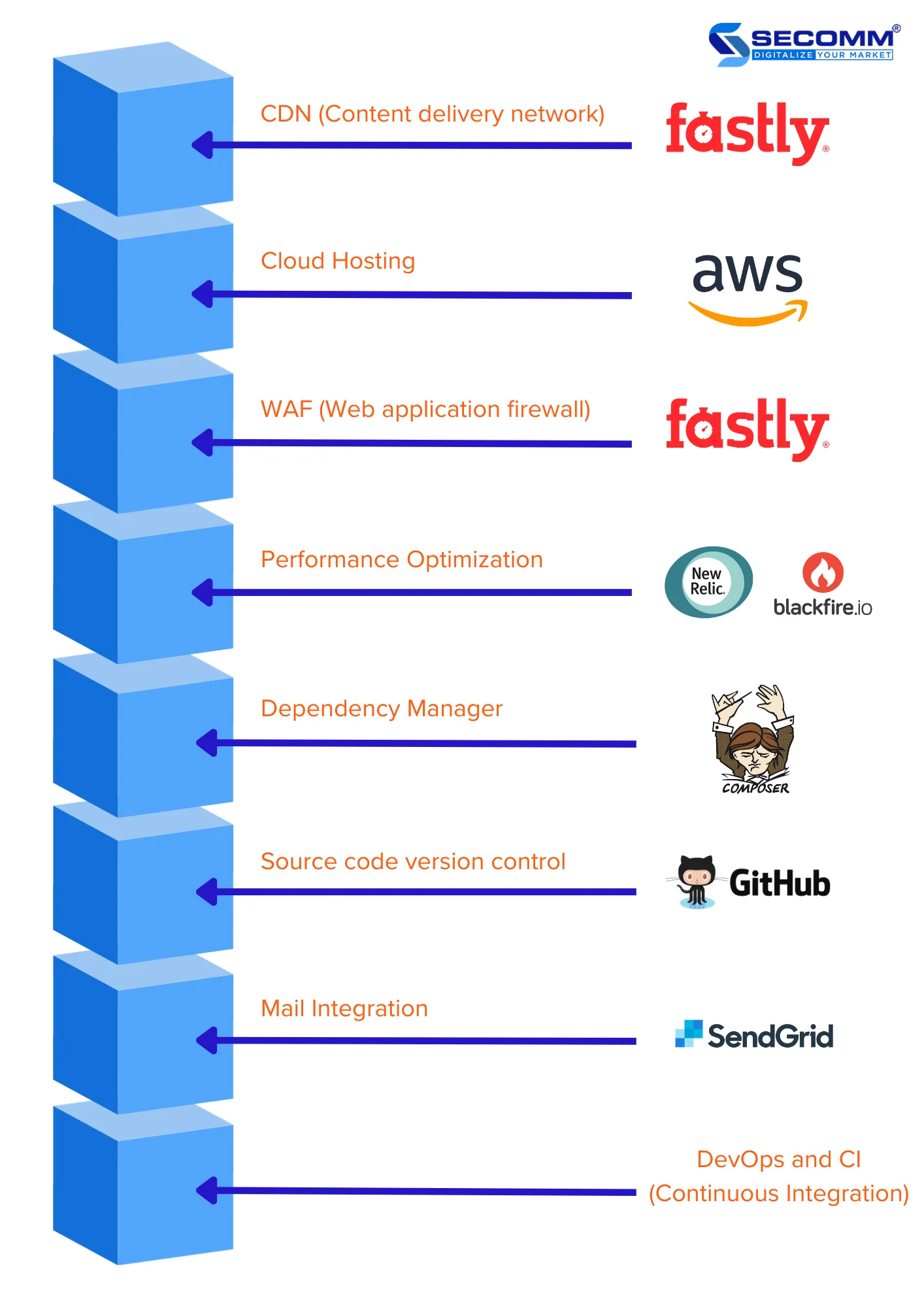
Another advantage of Adobe Commerce Cloud is that businesses don’t need to take responsibility for serious issues; all incidents are handled directly by Adobe’s personnel.
Furthermore, the functionality of Adobe Commerce Cloud is also rated higher than Adobe Commerce On-Premise.
| Feature | Adobe Commerce | Adobe Commerce Cloud |
| Adobe Commerce Application | ✔ | ✔ |
| Core Application Support | ✔ | ✔ |
| Single-tenant, dedicated infrastructure | ✔ | ✔ |
| Deployment Tools | ✔ | ✔ |
| Dedicated staging environment | ✔ | ✔ |
| Increased customization available | ✔ | ✔ |
50 GB of testing | ✔ | ✔ |
| Disaster recovery and data retention | ✔ | ✔ |
| Varnish-based CDN | ✔ | ✔ |
| Image Optimization | ✔ | ✔ |
DDoS protection and WAF | ✔ | ✔ |
| Performance Monitoring Tools | ✔ | ✔ |
| Infrastructure support | ✔ | ✔ |
Technical Account Manager | ✔ | ✔ |
| High Availability Architecture | ✔ | ✔ |
Automated data backup | ✔ | ✔ |
| Expansive monitoring and alerting | ✔ | ✔ |
| Scale globally on AWS and Azure | ✔ | ✔ |
| Secure & dedicated cloud infrastructure | ✔ | ✔ |
| Incident service level target | ✔ | ✔ |
Surge capacity monitoring & response | ✔ | ✔ |
| Infrastructure security | ✔ | ✔ |
| Infrastructure level 99.9% SLA | ✔ | ✔ |
| Application level 99.9% SLA | ✔ | |
| 30-minute SLT for P1 | ✔ | |
| Designated cloud infrastructure resource | ✔ | |
| Planned event management support | ✔ | |
| Custom site monitoring & personalized run book | ✔ | |
| Upgrade & patching development assistance | ✔ | |
| Go-live process coaching | ✔ | |
| Dedicated escalation management | ✔ | |
Application monitoring assistance | ✔ |
Source: Adobe Commerce Pricing
Here is the licensing fee table for using Adobe Commerce Cloud for businesses based on annual revenue.
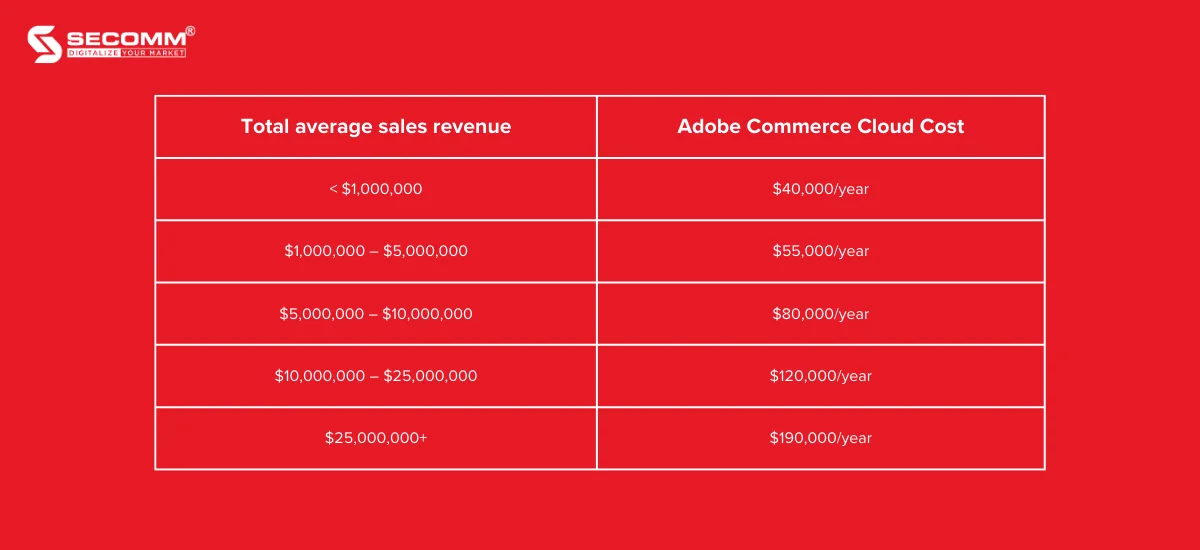
For the On-Cloud version, businesses also need to consider additional costs such as domain, interface, website development, and extensions. The cost to complete an Adobe Commerce Cloud website will be around $150,000/project for the first year, depending on the complexity of the website system.
In general, Adobe Commerce (Magento) is a perfect choice for large businesses with high feature requirements, so the cost of building an eCommerce website on this platform will be relatively high compared to other eCommerce platforms.
However, finding the best-suited platform will depend on various factors such as strategic models, business scale, deployment time, and budget.
With deep expertise and the development of complex eCommerce systems for clients such as Changi Airport Group (Singapore), Trentham Estate (Australia), and The Warehouse (Vietnam), SECOMM understands the challenges in choosing a platform and deploying eCommerce that businesses are facing.
Contact SECOMM now or call directly at the hotline number (028 7108 9908) for free advice on the eCommerce website building roadmap!
Related article:
 2
2
 6,945
6,945
 0
0
 1
1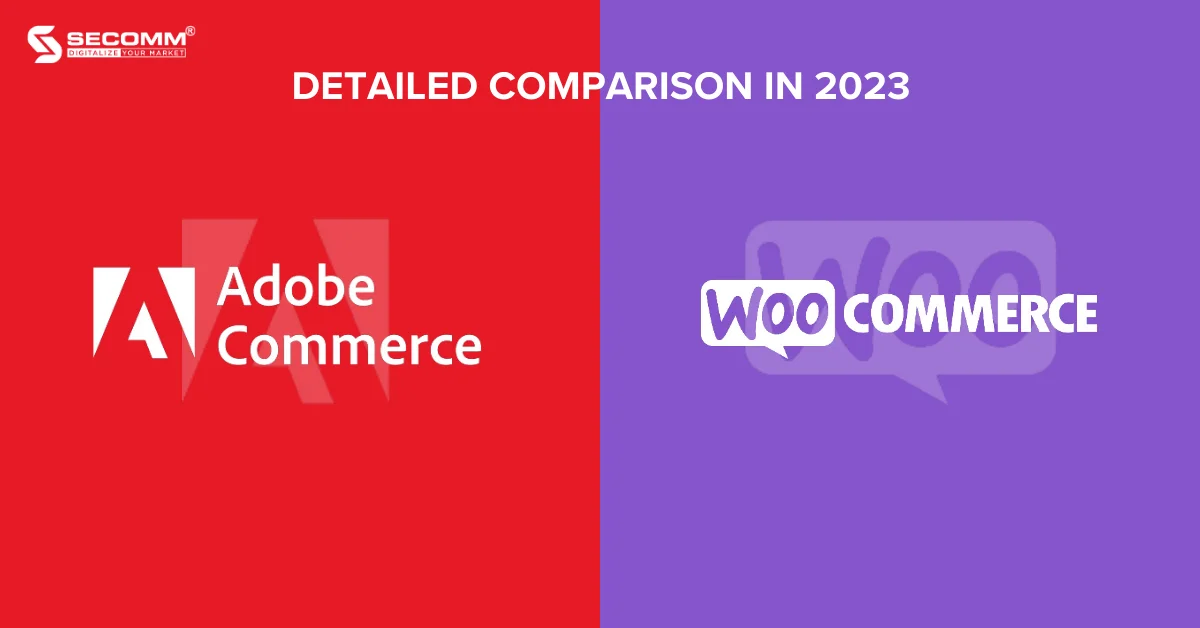
Among the eCommerce platforms that businesses consider choosing to develop their online stores, the two names Adobe Commerce and WooCommerce are always put on the scale for comparison.
Both are suitable for small and large businesses to build websites due to their flexible customization capabilities and high scalability. However, there are significant differences between WooCommerce and Adobe Commerce that are worth noting.
Adobe Commerce, formerly known as Magento Commerce, is an open-source eCommerce solution designed for medium to large-scale businesses, particularly those undergoing rapid growth and with high demands for customization and scalability.
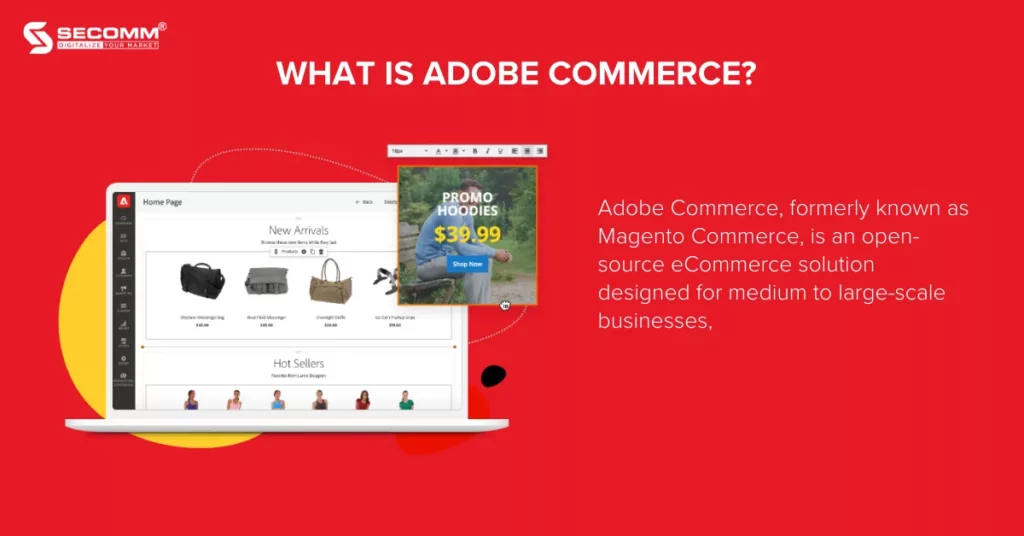
Currently, Adobe Commerce offers two different version options:
Related article: Top 20 eCommerce websites using Adobe Commerce (Magento)
WooCommerce is an open-source eCommerce plugin developed for the WordPress platform, a widely used Content Management System (CMS) for creating and managing websites.
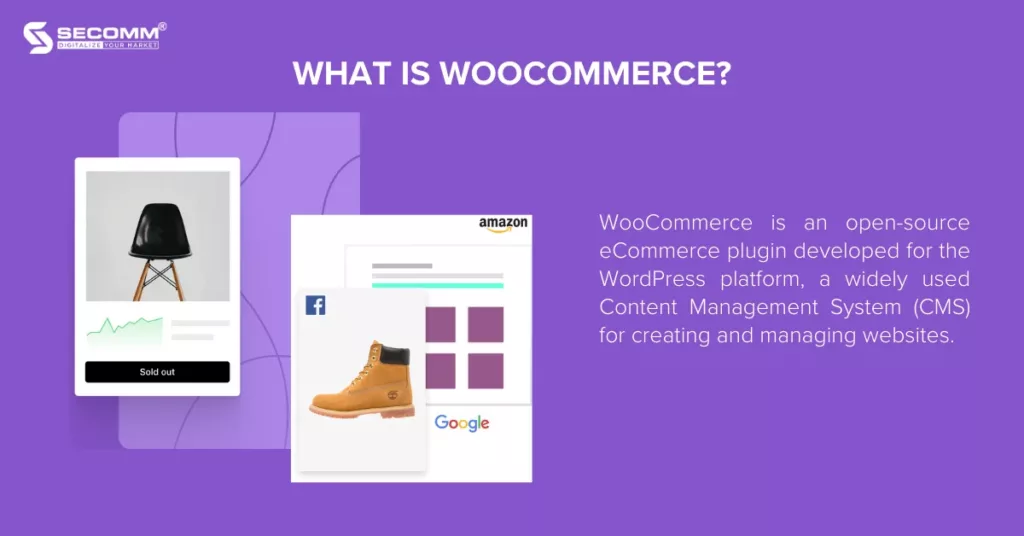
Consequently, WooCommerce is favoured by many businesses utilizing WordPress to develop their eCommerce websites.
Related article: Top 20 eCommerce websites using WooCommerce
Adobe Commerce and WooCommerce are two popular eCommerce platforms, but each platform serves different business needs due to differences in deployment costs, feature systems, scalability, and security.
The deployment costs of Adobe Commerce will depend largely on the version chosen by the business.
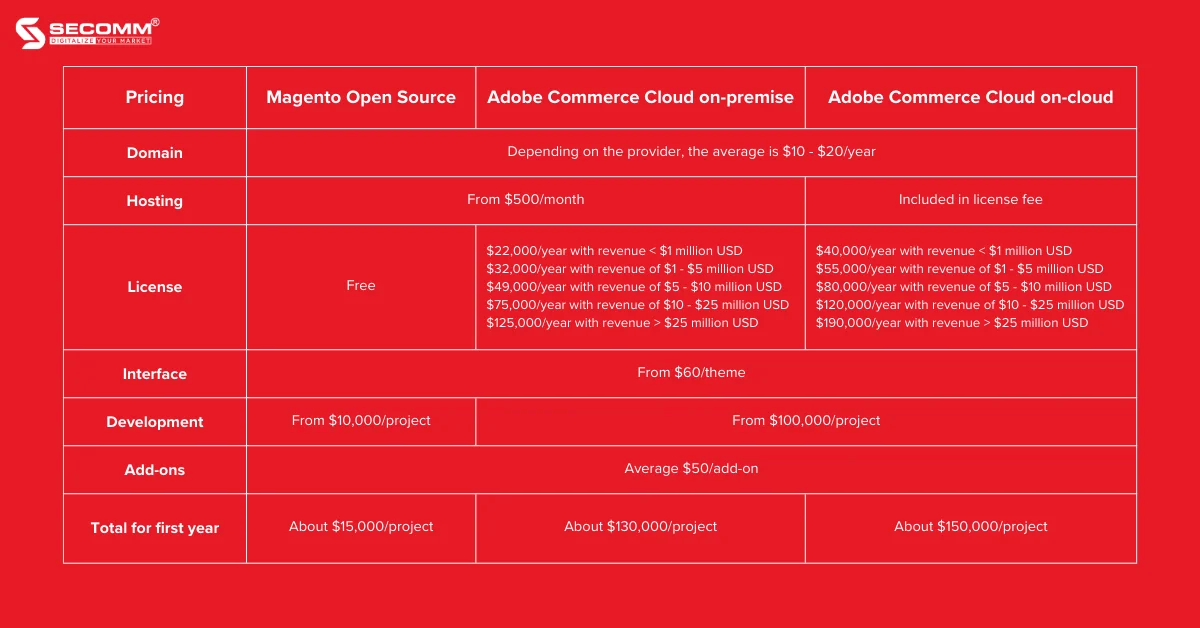
It can be seen that the deployment cost for an eCommerce website on Adobe Commerce is relatively high, starting from $15,000 per project for the Magento version and $130,000 per project for the first year with the Adobe Commerce version.
In contrast, the cost of using WooCommerce is entirely free, and the website construction cost is also relatively more budget-friendly compared to Adobe Commerce. Below are some estimated costs for deploying an eCommerce website on WooCommerce:
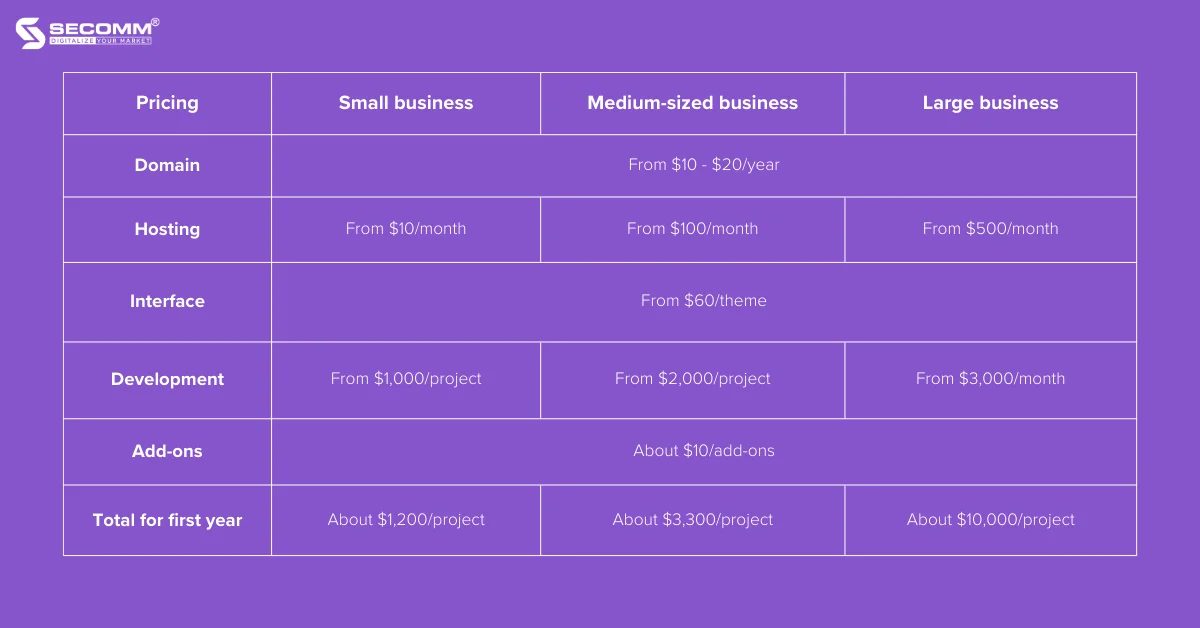
Note: These are only cost estimates. Actual costs may vary depending on factors such as needs, service providers, and optional features.
Adobe Commerce and WooCommerce are both comprehensive eCommerce platforms covering everything from A to Z. Both have their advantages and disadvantages, catering to the diverse functional needs of businesses.
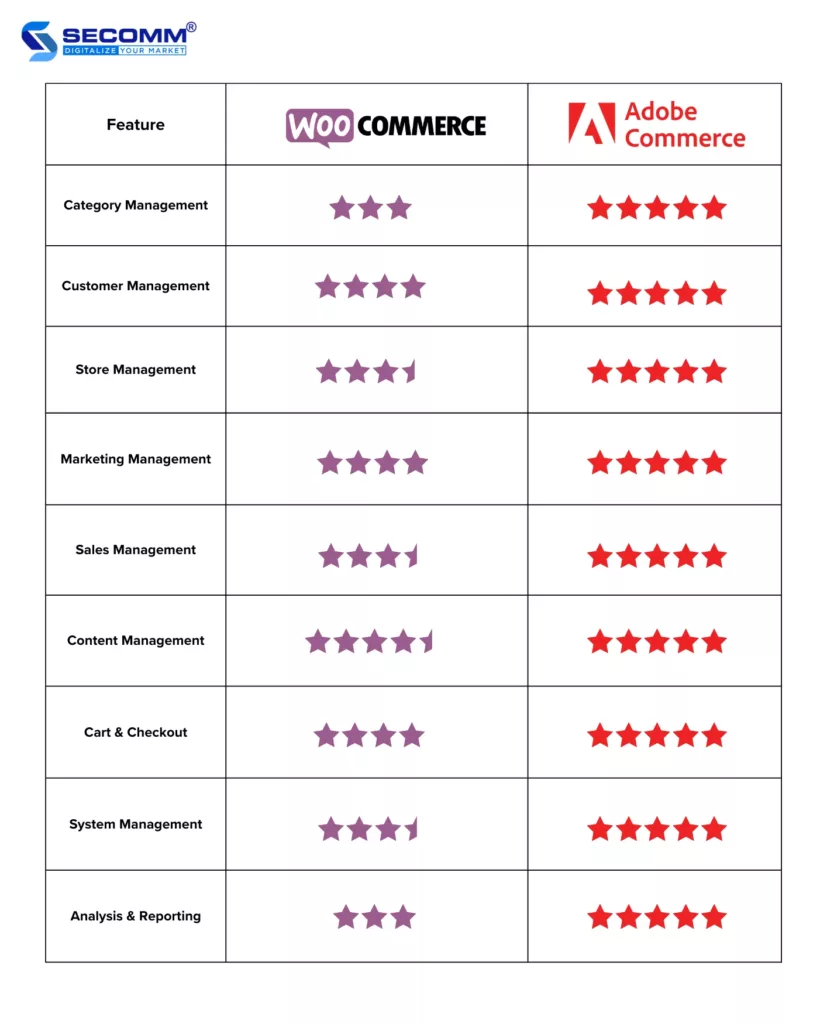
In addition to the basic feature set, businesses also need to consider advanced features that the system can accommodate.
It can be seen that the feature system of Adobe Commerce is more comprehensive than WooCommerce, covering both basic and advanced functionalities.
Therefore, for small to medium-sized businesses just starting in eCommerce, WooCommerce is a suitable choice. If the brand is a large enterprise with the need to build a large, complex online store, Adobe Commerce would be a perfect choice.
Read more: Top 10 Features To Increase eCommerce Website Revenue
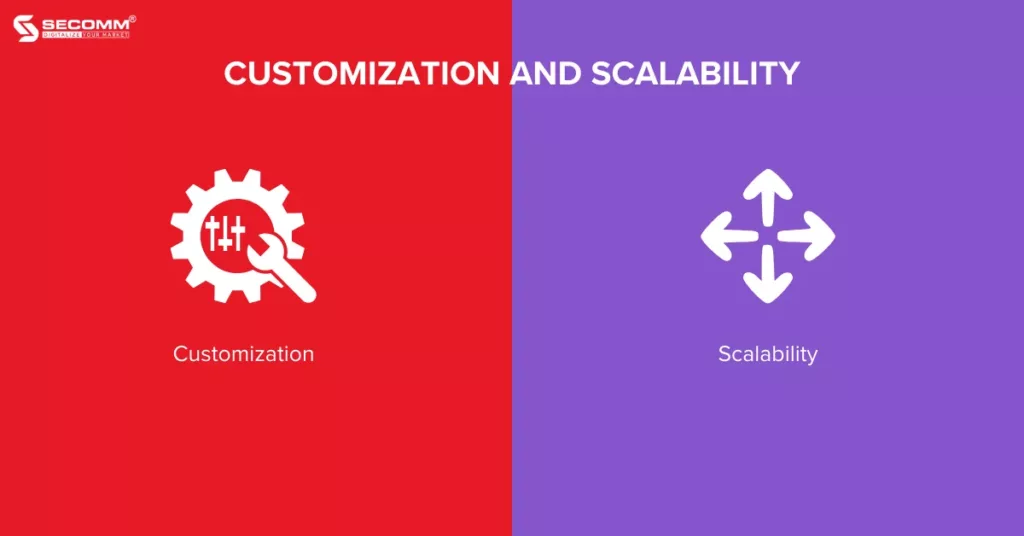
Adobe Commerce is an open-source platform, especially the Magento Open Source version, meaning developers can access the source code, making customization easier. This allows businesses to create features and integrate customizations to meet specific needs.
Similarly, WooCommerce also provides high customization capability with numerous available themes, plugins, and apps.
However, as a WordPress plugin, WooCommerce’s customization capability is not as extensive as Adobe Commerce.
Both platforms have high scalability to handle traffic and large transaction volumes. However, Adobe Commerce’s scalability is higher than WooCommerce’s, especially for businesses with large, complex product catalogues or significant inventory management needs.
In summary, Adobe Commerce offers higher customization and scalability capabilities compared to WooCommerce. Still, the website development process with Adobe Commerce is more complex, requiring developers with substantial experience and technical expertise.
Adobe Commerce and WooCommerce both provide features and tools for securing customer and business data. However, there are some notable differences in security capabilities between these two platforms.
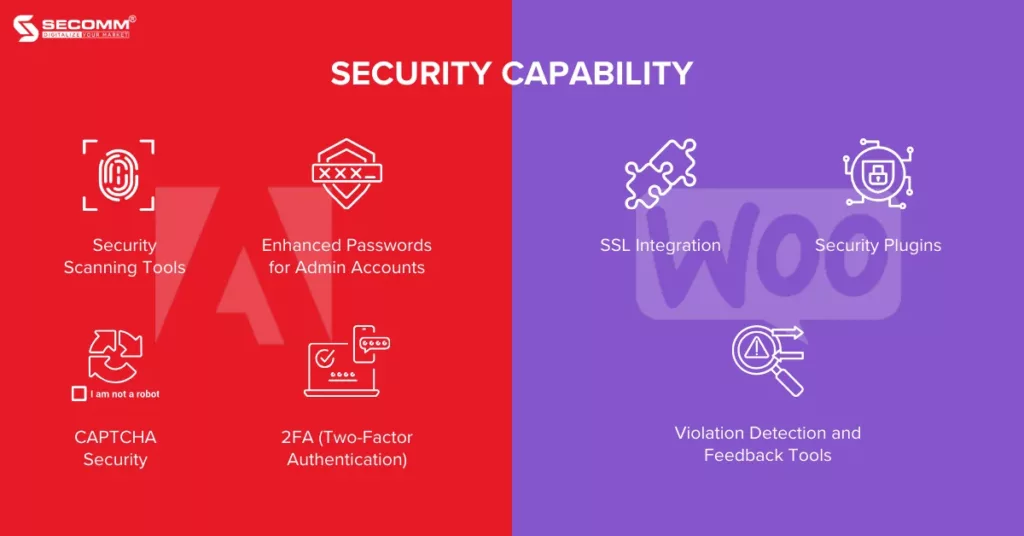
Adobe Commerce offers a range of security features and tools, including:
WooCommerce also provides some security features and tools, including:
Similar to the above factors, Adobe Commerce is generally considered to have higher security compared to WooCommerce.
It can be seen that Adobe Commerce is rated higher than WooCommerce in many aspects. However, while WooCommerce is known for being a user-friendly platform, making it easy for businesses without strong technical capabilities to quickly deploy, Adobe Commerce requires a professional team to build and manage a highly customized, scalable, and complex system.
In general, WooCommerce is suitable for small to large businesses using WordPress, wanting to start e-commerce deployment, and requiring basic customization and expansion solutions. However, Adobe Commerce offers flexibility, customization, and scalability, making it more suitable for corporations with complex system requirements.
In reality, the more flexible and customizable platforms with high scalability, the more complex and costly the deployment process becomes. Therefore, businesses need to consider the scale and development needs to make an appropriate choice.
With deep expertise and the development of complex eCommerce systems for clients such as Changi Airport Group (Singapore), Trentham Estate (Australia), and The Warehouse (Vietnam), SECOMM understands the challenges in choosing a platform and deploying eCommerce that businesses are facing.
Contact SECOMM now or call directly at the hotline number (028 7108 9908) for free advice on the eCommerce website building roadmap!
Read more: Shopify Plus vs Adobe Commerce: Key Differences 2023
 2
2
 5,979
5,979
 0
0
 1
1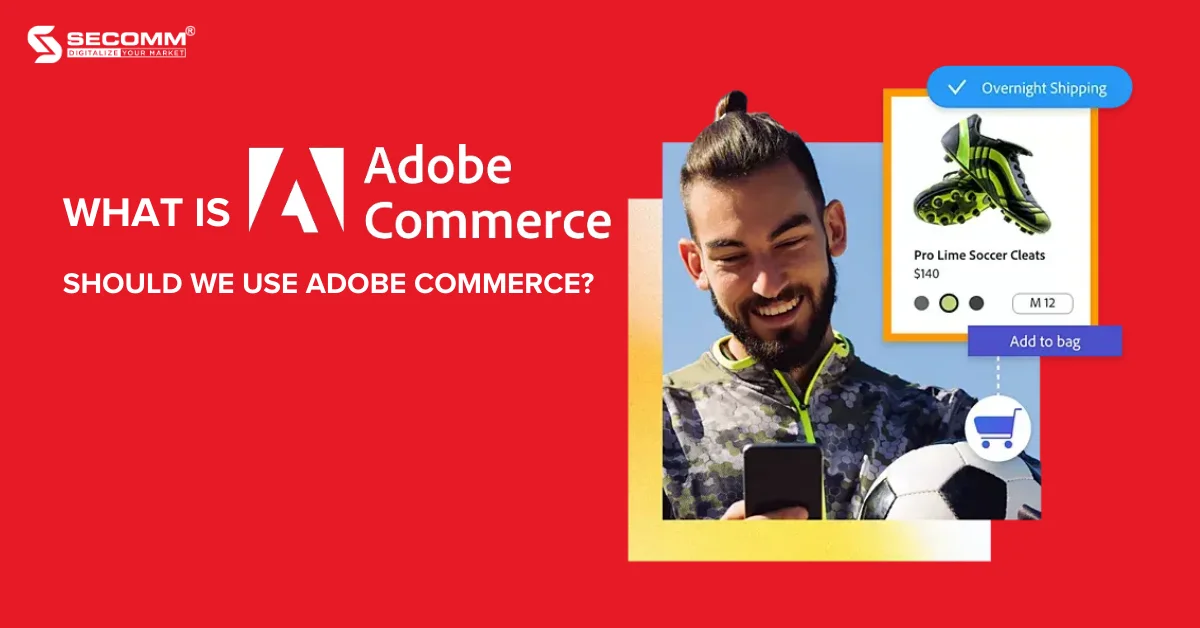
According to Adobe’s report in January 2023, there are more than 100,000 websites built using Adobe Commerce. Among them, over 50,000 websites are actively running, and more than 50,000 websites are in the deployment phase. This is an extremely impressive number for a platform specialized in supporting large enterprises like Adobe Commerce.
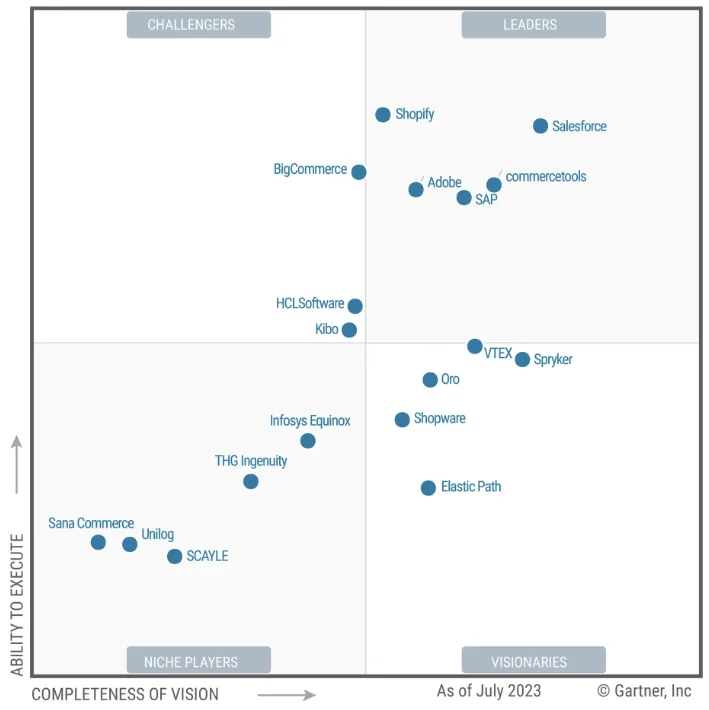
In 2023, Adobe Commerce was recognized by Gartner for its outstanding achievement, ranking first in the list of leading platforms in digital commerce for seven consecutive years.
Adobe Commerce is an open-source eCommerce platform designed specifically for businesses ranging from medium to very large scale, offering high customization and scalability.
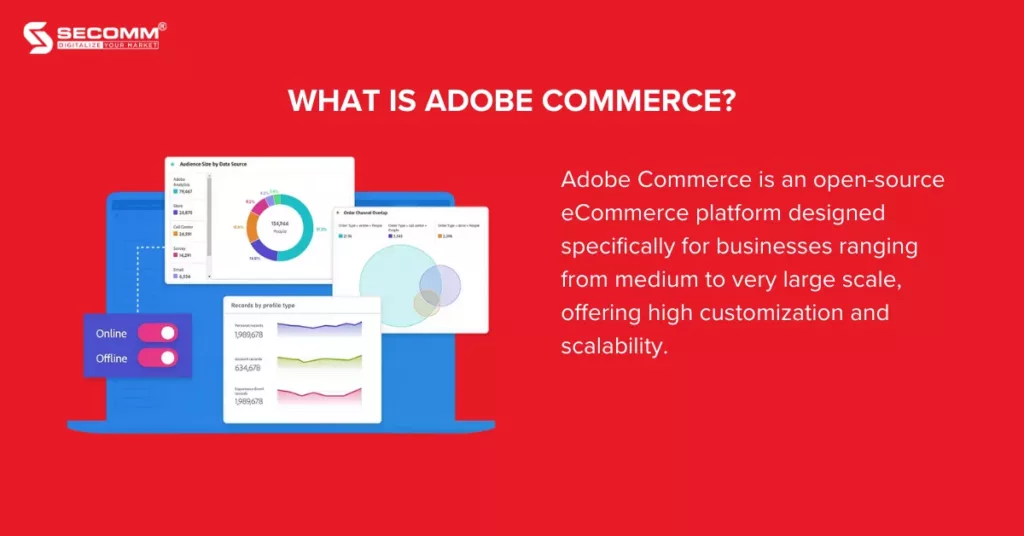
Formerly known as Magento Commerce, it was founded in 2007 by Roy Rubin and Yoav Kutner in Culver City, California, USA. After several changes of ownership, in 2018, Adobe acquired Magento for $1.68 billion and rebranded it as Adobe Commerce. Currently, Adobe Commerce is part of the Adobe Experience Cloud, a product and service suite helping businesses create, manage, and distribute digital experiences.
Adobe Commerce has two main versions: Adobe Commerce Cloud and Magento Open Source.
Adobe Commerce Cloud is a paid version, deployed and managed on the cloud by Adobe. It is divided into two types: on-premise, allowing businesses to be self-sufficient in hosting, and on-cloud, providing hosting at a specific cost.
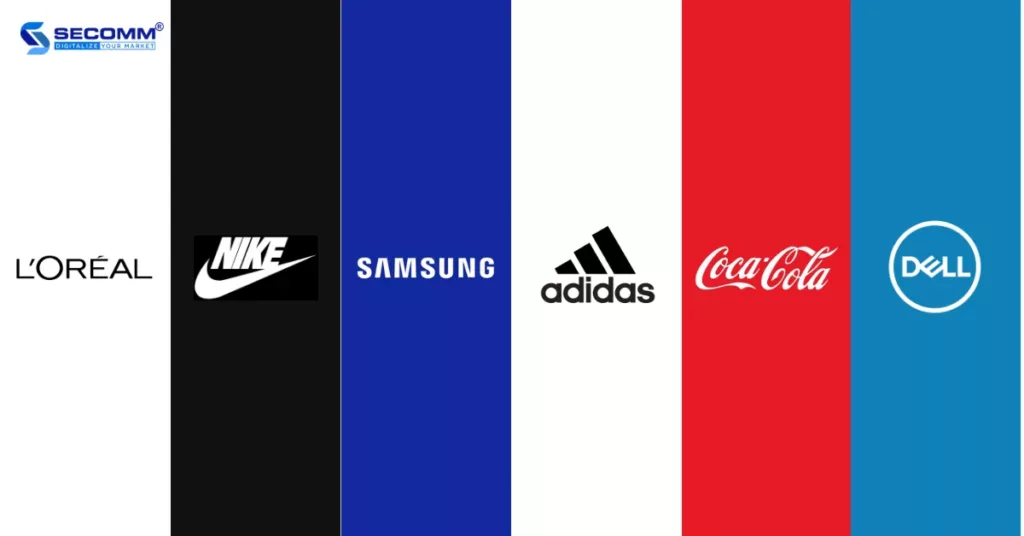
Magento Open Source is a free version that can be downloaded and used by anyone. It provides essential functionalities for creating and managing online stores.
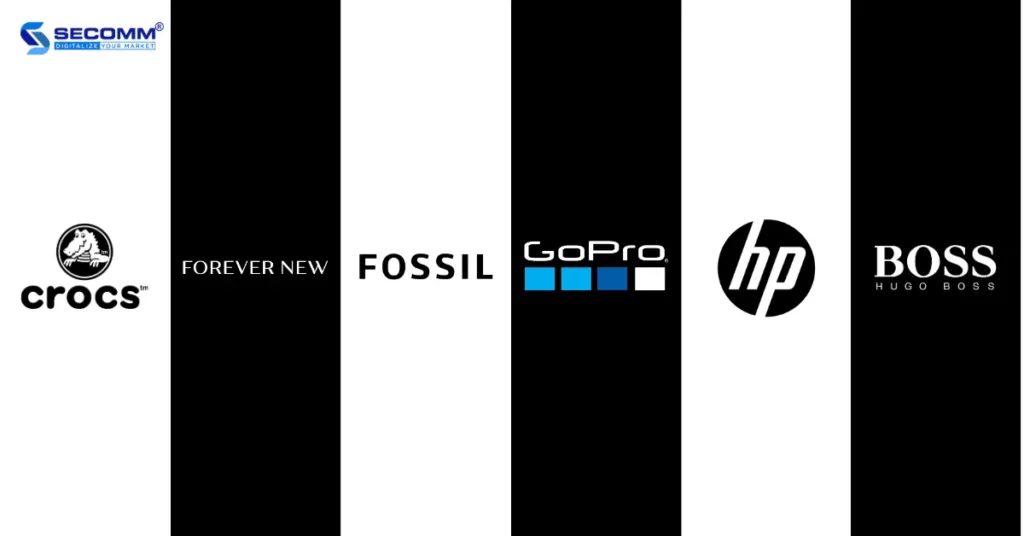
In addition, Adobe offers several additional versions of Adobe Commerce:
The cost of using Adobe Commerce depends on the version being used.
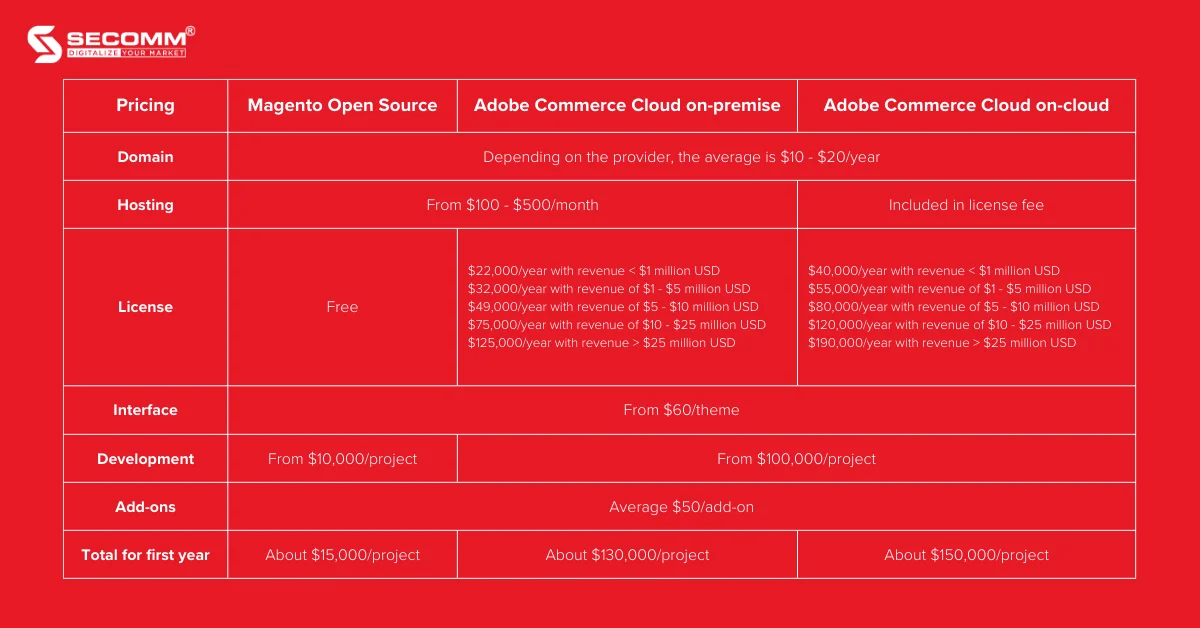
For Adobe Commerce Cloud (On-Cloud): Adobe provides hosting and operates Adobe Commerce on its cloud. License costs for Adobe Commerce on-cloud range from $40,000 to $190,000 per year, depending on the system’s complexity, scale, and business requirements.
For Adobe Commerce Cloud (On-Premise): Businesses need to purchase licenses and install the software on their servers. License costs for Adobe Commerce on-premise range from $22,000 to $125,000 per year, depending on system complexity, scale, and business needs.
For Magento Open Source: Magento provides a free license, and the overall cost is generally more reasonable compared to the two solutions above. However, the available built-in functionalities are limited, and additional investments are required for feature development and integration with third-party services.
In addition to license costs, businesses also need to invest in interface design, development costs, extension utility costs, and employee salaries.
Note: The cost of using Adobe Commerce can be significantly influenced by factors such as business scale, feature requirements, integration needs, and customization requirements.
Read more: Shopify Plus vs Adobe Commerce: Key differences 2023
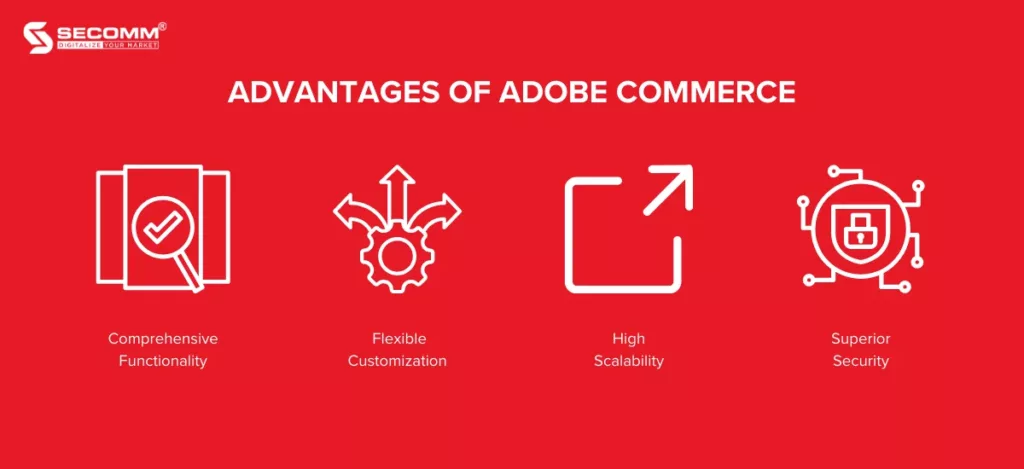
Adobe Commerce is a powerful eCommerce platform, providing all the essential features for building and managing a comprehensive eCommerce website. From product portfolio management, content creation, and conducting transactions, to marketing campaigns and customer management, Adobe Commerce is equipped with all the necessary tools.
In addition to basic features, Adobe Commerce offers many extensions with advanced functionalities.
One of the significant strengths of Adobe Commerce is its globally experienced support community, consisting of professional developers who assist in finding and solving any technical challenges or customizations needed for businesses. This creates favourable conditions to meet every requirement and goal of the business’s eCommerce.
Adobe Commerce possesses all the advantages of an open-source platform with flexible customization capabilities. Especially with ownership and control over the entire source code, businesses can easily customize code sections within the system, easily update, or even develop new features based on specific business needs.
In addition to customization capabilities, Adobe Commerce has excellent scalability for websites. Adobe Commerce allows businesses to expand from one website to multiple websites, one store to multiple stores while still managing everything on the same system. Additionally, Adobe Commerce supports multilingual and multi-currency conversions, helping businesses expand globally.
High-security capability is also a standout advantage of Adobe Commerce with regular system monitoring, proposed security solutions, enhanced security for administrators, and the ability to prevent bots or unauthorized malicious code. This platform helps businesses minimize potential risks from data systems and transaction processes on the system
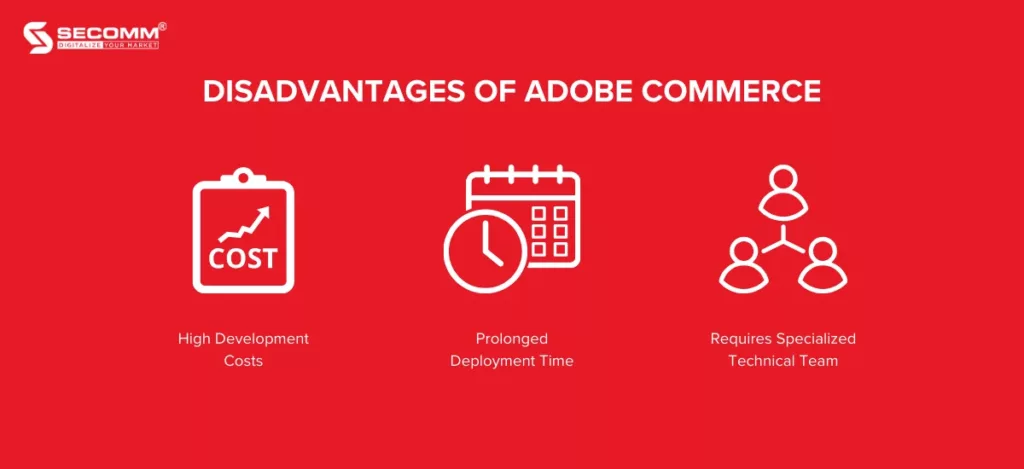
Due to its numerous outstanding features in functionality, customization capabilities, scalability, and high security, the cost of owning an Adobe Commerce website is inevitably high. As estimated earlier, websites developed on the Adobe Commerce platform often have higher costs compared to other platforms, ranging from $10,000 to $300,000 depending on the system’s complexity.
A complete Adobe Commerce project requires a deployment time ranging from 3 months to 1 year. This extended duration slows down the digital transformation process of businesses, making it challenging for them to keep up with the pace of development among competitors and stay updated with market trends.
To build and operate an in-depth eCommerce website system tailored to the specific characteristics of each product and industry with high performance, businesses require a specialized technical team with in-depth expertise. This is particularly crucial for complex Adobe Commerce projects, demanding a high level of technical specialization and experience on the Adobe Commerce platform.
As one of the world’s most renowned sportswear brands, Nike aimed to adopt a personalized eCommerce approach with a focus on mobile device experience. Hence, Nike chose Adobe Commerce to enhance its functionality, concentrating on user experience, increasing interaction, and optimizing images and CTA buttons for smaller screens.
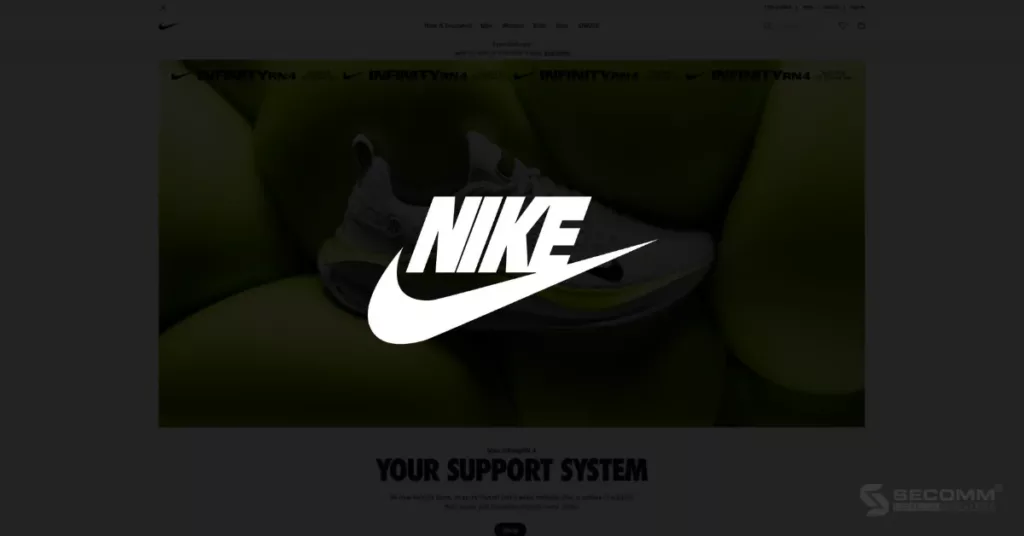
Additionally, customizing and optimizing the eCommerce website-building method through the Headless Commerce API architecture contributed to Nike’s success, turning the brand into a market leader and gaining more market share than its competing counterparts.
Canon, a multinational corporation based in Japan specializing in manufacturing cameras, printers, optical equipment, digital imaging devices, and office equipment, needed to build an eCommerce website to meet digital transformation needs after a long period of traditional business. Canon decided to select Adobe Commerce to deploy a comprehensive eCommerce solution.
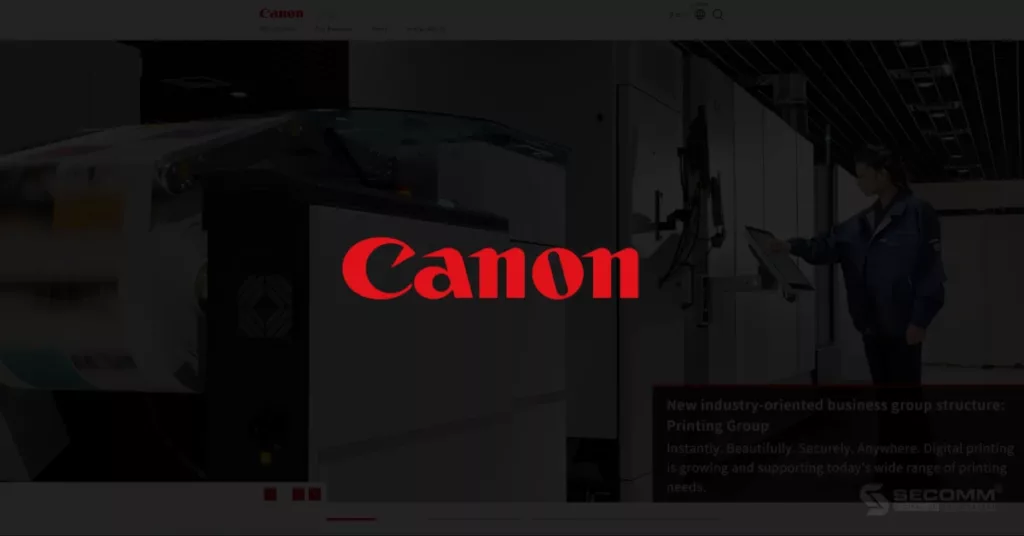
“The Commerce and Experience Manager tech stack helps us compress projects that previously took months of development time into just weeks. We can do so much more than before — if we’re developing a new component and trying to get it out within a couple of weeks, we can do that now” — Michael Lebron, Senior Director and Head of Front Office Applications
Annam Gourmet is a premium food and beverage retail brand in Vietnam established in 2001 by a French-Vietnamese couple. Although Annam Gourmet had an online presence before, it was mainly used to develop the brand, and the effectiveness of eCommerce was not emphasized. Annam Group, the parent company of Annam Gourmet, along with partner SECOMM, chose to use Magento 2 to build an eCommerce website.
Currently, Annam Gourmet’s Magento 2 website has officially launched, operating stably and effectively, helping the business successfully transform in the eCommerce market. Besides the Annam Gourmet project, Magento is also chosen by the Annam Group for other retail eCommerce systems within the group, such as The Warehouse (wine retail) and Nespresso.

In general, Adobe Commerce is a suitable eCommerce platform for businesses of all sizes, from startups and SMEs to large corporations. However, issues related to budget, time, and specialized teams have made many small and medium-sized enterprises hesitate to use Adobe Commerce for deploying eCommerce websites. Therefore, Adobe Commerce is often invested in by large enterprises to build in-depth eCommerce systems.
With profound experience and the development of numerous complex eCommerce systems on Adobe Commerce, such as Laybyland (Australia, the US, New Zealand), Jasnor (Australia, New Zealand), and The Warehouse (Vietnam), SECOMM understands the challenges in the platform selection and eCommerce deployment that businesses are facing.
Contact SECOMM today or call directly at the hotline (028 7108 9908) for a free consultation on deploying Adobe Commerce for your brand.
 2
2
 8,273
8,273
 0
0
 2
2
eCommerce is increasingly thriving and becoming a popular sales channel, especially in the jewelry industry, with global eCommerce jewelry sales reaching $100 billion in 2022 and projected to reach $150 billion in 2025.
To harness the immense potential of this market, choosing the right eCommerce platform is a crucial part of the success of your jewelry business in this billion-dollar market
Read more: What opportunities are open to jewelry eCommerce?
A professional interface is one of the crucial criteria to consider when building an eCommerce website for jewelry. This criterion helps businesses create a positive impression on customers, increase conversion rates, and boost sales.
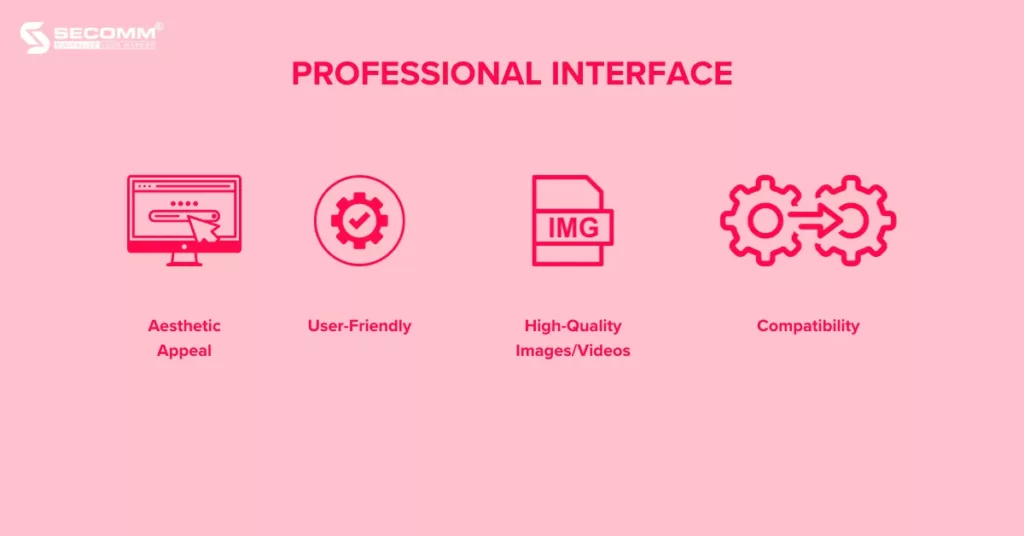
Here are some factors to note when designing the website interface:
When building a jewelry website, in addition to basic eCommerce functions, businesses need to focus on developing advanced features that address industry-specific needs:
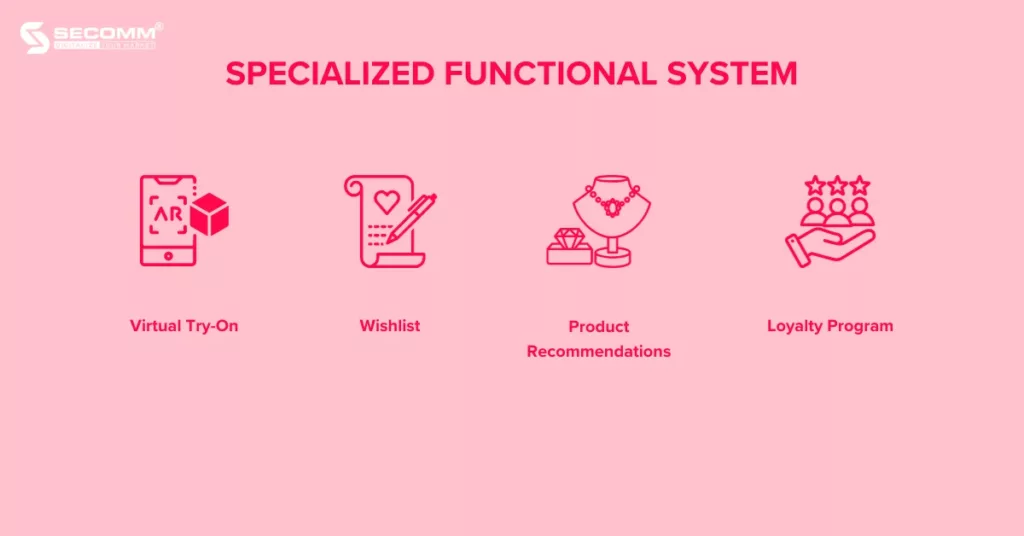
An eCommerce jewelry website needs to have high scalability to meet the evolving needs of the business in the future. Here are some factors to consider when evaluating scalability:
Jewelry is a high-value item, so an eCommerce jewelry website needs to have high security to ensure the safety of customer information and prevent fraudulent activities and theft online.
As eCommerce jewelry websites often require customers to provide personal information such as name, address, phone number, email, credit card details, bank account numbers, etc., for ordering and payment purposes, ensuring the security of this information is crucial. If this information is compromised, customers may fall victim to scams, lose money, or have their privacy violated.
Shopify is a SaaS eCommerce platform founded in 2006. Over the years, Shopify has rapidly become a leading platform in the eCommerce industry, supporting numerous businesses worldwide in establishing and growing their online presence.
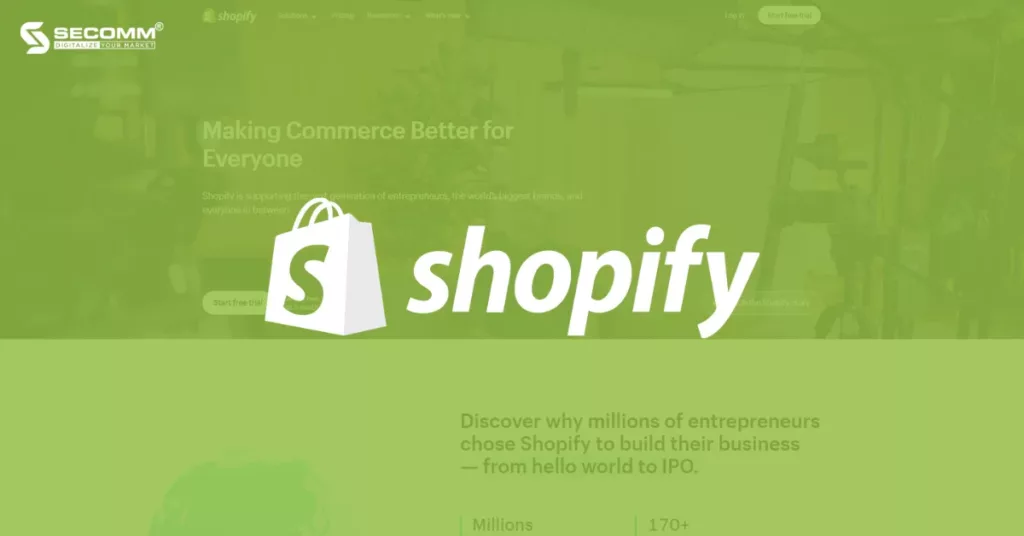
The costs associated with using the Shopify platform vary and include:
Read more: Top 5 benefits when applying Headless Commerce in 2023
Evaluating the suitability of Shopify for the jewelry industry:
Several jewelry businesses currently utilizing Shopify for their eCommerce websites include Made by Mary, MISSOMA, Pura Vida Bracelets, and J&CO.
Shopaccino is a SaaS platform established in 2014 in India, specializing in assisting both B2C and B2B businesses in building eCommerce websites across various industries, including the jewelry sector.
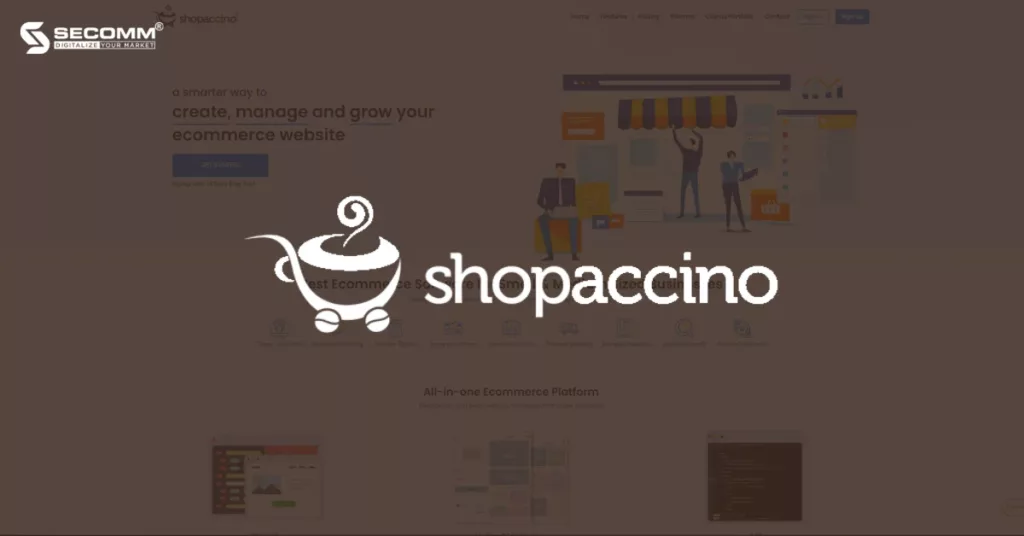
Shopaccino currently offers three main solutions:
Evaluating the suitability of Shopaccino for the jewelry industry:
Some jewelry businesses currently using Shopaccino include Navratan, KOSH, Bibelot Jewels, Greytone, Hiranya Store, Lavie Jewelz, and Euro Gems S.R.L.
Shift4Shop is an eCommerce platform developed by Shift4 Payments, a technology payment company. Shift4Shop provides a comprehensive eCommerce solution for businesses of all sizes and industries, including jewelry businesses.
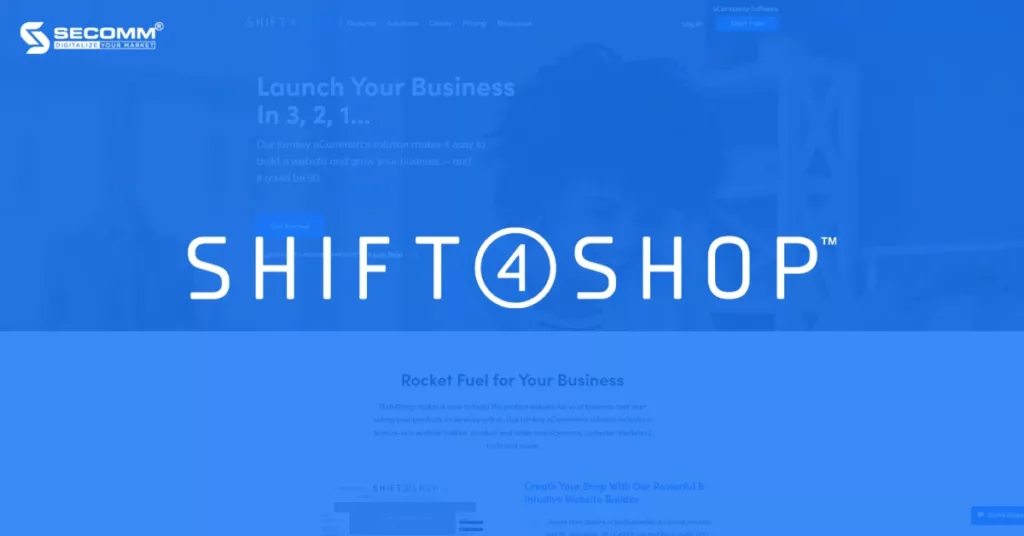
Currently, Shift4Shop only offers services in the U.S. market with four solutions ranging from free to fee-based:
Evaluating the suitability of Shift4Shop for the jewelry industry:
Some brands currently using Shift4Shop include Jewelry Supply, Too Cute Beads, Sasha’s Gemstone Jewelry, Alara Jewelry, Diamond Jewelry NY, and Just Mens Rings.
WooCommerce is an open-source eCommerce plugin developed for the WordPress platform, one of the most popular content management systems (CMS) worldwide. WooCommerce allows businesses to turn their WordPress websites into online stores or integrate eCommerce features into existing websites.3
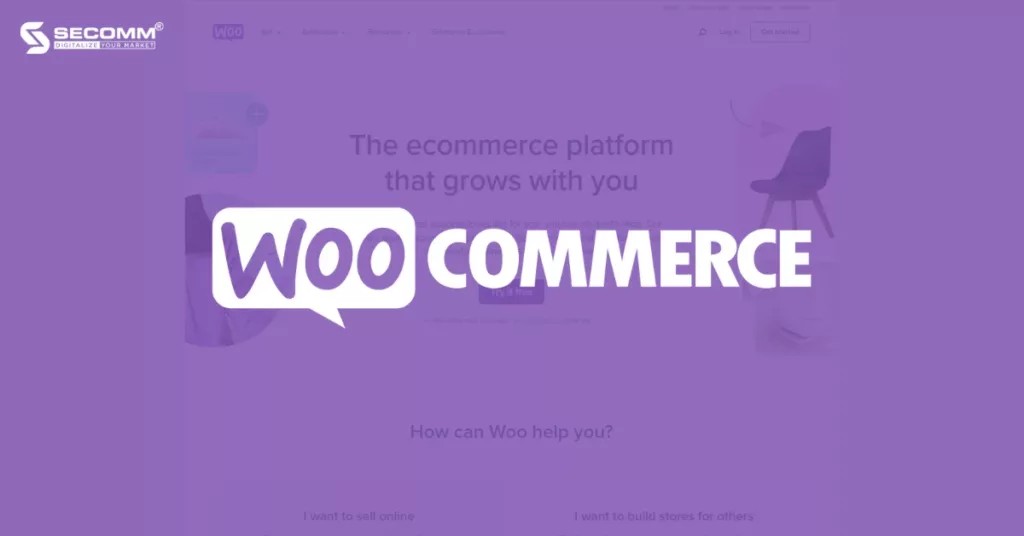
The cost of using WooCommerce depends on the complexity of each project, averaging $1,000 for a basic eCommerce website and $10,000 for a deeply customized eCommerce website.
Evaluating the suitability of WooCommerce for the jewelry industry:
Some businesses using WooCommerce to build jewelry websites include April Soderstrom, NEWTWIST, Waufen, Hyo Silver, Alkemistry, Oxétte, Arden Jewelers, and Binenbaum Antiques & Jewelry.
Adobe Commerce, formerly known as Magento Commerce, is a professional and popular eCommerce system. Adobe Commerce is part of the Adobe Experience Cloud product line and is designed to help businesses build eCommerce websites.
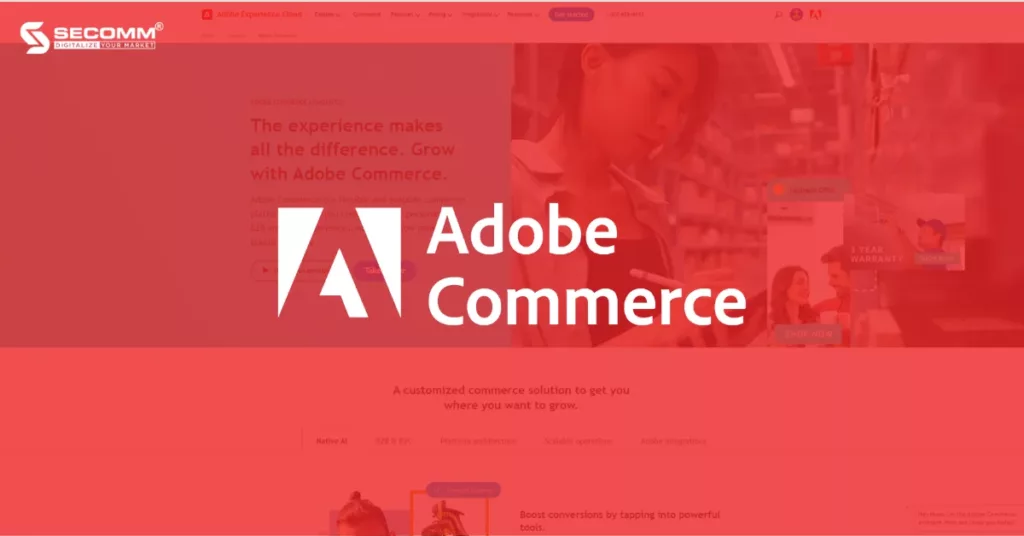
Currently, Adobe Commerce offers two main versions:
Read more: Magento Open Source vs Magento Commerce Real Comparison
Evaluating the suitability of Adobe Commerce for the jewelry industry:
Some businesses using Adobe Commerce to build jewelry websites include True Facet, Hannoush, Judaica, Mikimoto, Charles and Colvard, J.R.DUNN, and EraGem.
Above are some eCommerce platforms suitable for the jewelry eCommerce industry. This list is just a few examples for businesses to consider, as there are many other eCommerce platforms that businesses can explore based on specific needs and available resources.
Understanding the challenges and difficulties that businesses may face when building a jewelry eCommerce website, SECOMM is ready to provide free consultations on detailed eCommerce system development solutions for businesses.
Contact SECOMM today or call directly at the hotline number (028 7108 9908) for free and detailed advice.
 2
2
 8,657
8,657
 0
0
 1
1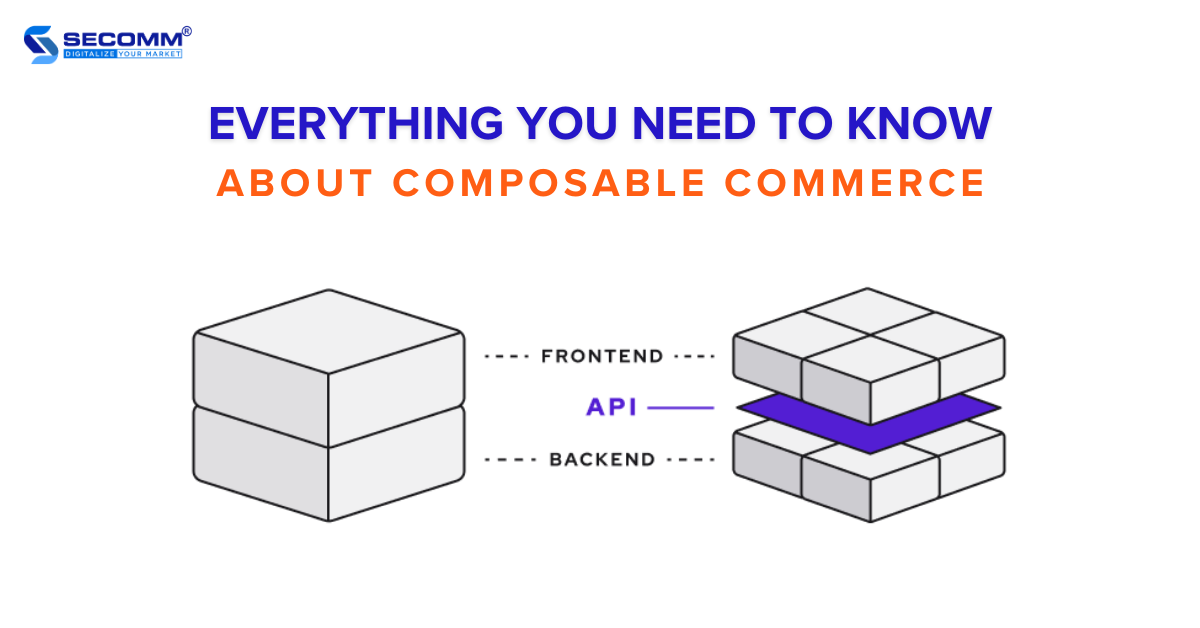
As Monolithic architecture solutions face flexibility, customization, and scalability challenges, businesses are increasingly exploring more adaptable architectures, like Headless Commerce.
Alongside this, the concept of ‘Composable Commerce’ has gained prominence as a robust model to cater to the evolving needs of businesses and the swiftly changing market.
So, what exactly it is, and how does it distinguish itself from Headless Commerce? Let’s investigate these aspects to comprehend why it might represent a revolutionary leap forward.
The term ‘Composable Commerce’ was first coined by Gartner Research in June 2020, referring to building a flexible and customizable e-commerce system by integrating various components to build distinct ‘Packaged Business Capabilities’ (PBCs) solutions tailored to the deployment needs. These PBC solutions can connect through APIs.
The PBCs may include:
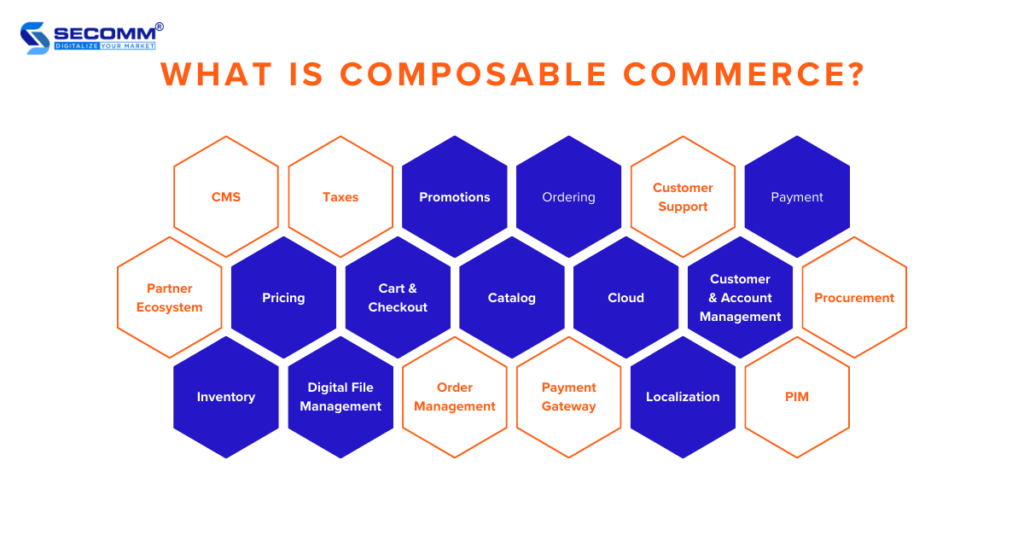
If we consider components as smaller and more intricate elements of the eCommerce system, PBCs represent the integration of each of these smaller components to craft a unique eCommerce solution tailored to each business. In this scenario, components are on an equal footing, and so are the PBCs.
Therefore, any modifications or expansions in any component or PBCs won’t impact the overall operation of the entire system.
To put it more simply, within the composable architecture, you build your eCommerce system much like assembling a Lego set.
Here, each PBC corresponds to a specific Lego block with a designated function. These blocks can seamlessly combine and link through APIs, resulting in a flexible and personalized eCommerce experience that aligns with your initial needs and wants.
Hence, the eCommerce development model allows you to attain the utmost flexibility and optimization for your eCommerce system.
Some benefits to highlight when adopting Composable architecture:
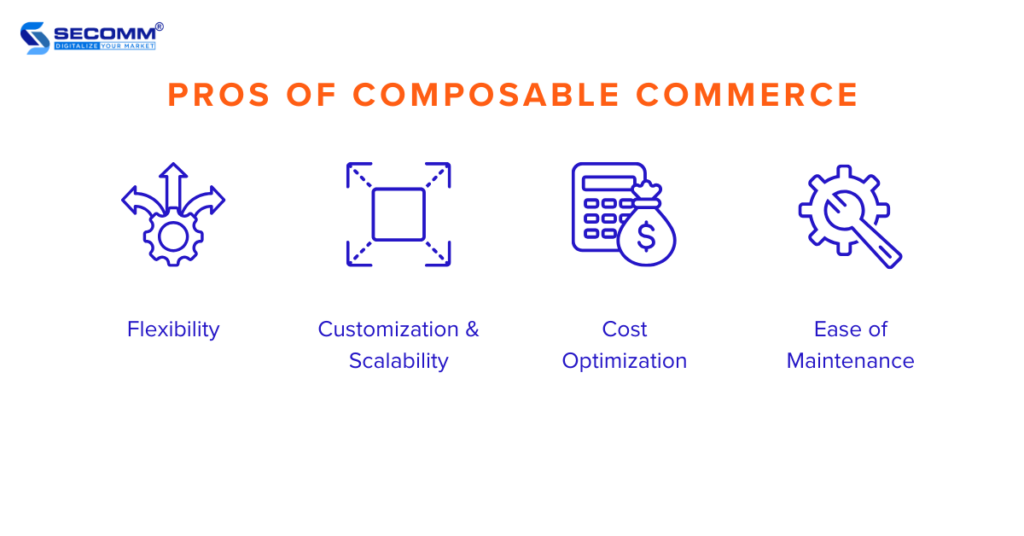
This eCommerce development model offers high flexibility. You can select to combine the most suitable components for your needs. This flexibility allows you to easily create an eCommerce system that adapts to market trends and ever-changing customer experience expectations.
The model can meet the highest demands for customization & scalability. You can freely customize each component based on your brand and what you want for customer experience. But you can also scale individual components to handle growing traffic and transaction volumes.
This level of customization and scalability allows you to offer a distinctive shopping experience, boost competitiveness, and expand your operations without the need for a complete overhaul of the system architecture.
Despite the initial setup costs, deploying Composable Commerce can help you save your development costs in the long run. Because you only need to pay for specific components they use and optimize your PBCs to avoid unnecessary expenses.
Most current Composable Commerce solutions offer discounts as more components are integrated, with Commerce Components by Shopify being a prominent example.
Components in the Composable Commerce architecture are often separated and become independent of each other, making maintenance and updates for each component easier. This minimizes disruptions and the risk of system downtime during maintenance or upgrades.
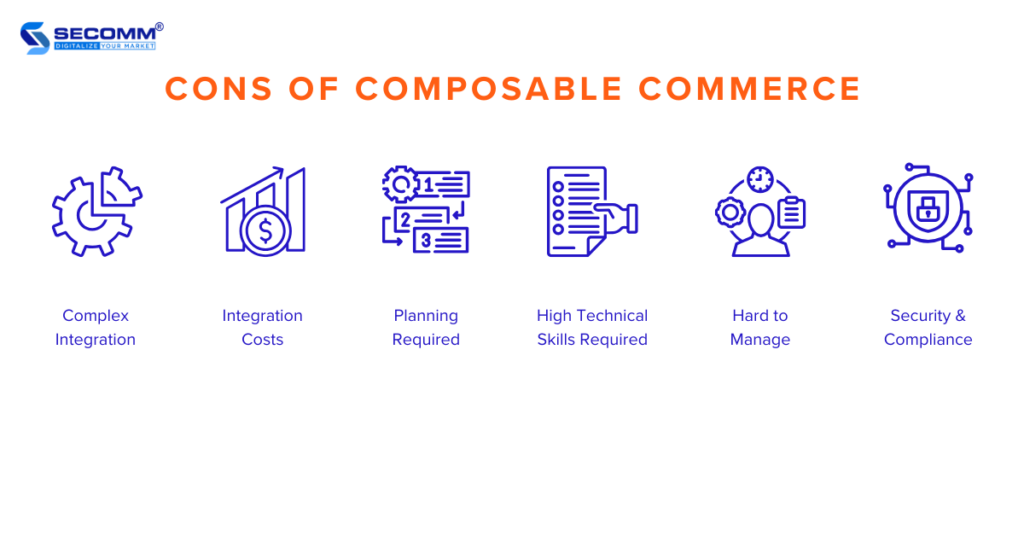
Composable Commerce demands the integration of various components, and this process can be complicated and time-consuming. You’ll need to ensure that these independent components operate seamlessly and efficiently within the same system, requiring additional development and customization efforts.
At scale, the need for deploying a complex system may increase, and integrating multiple components may lead to high upfront and ongoing costs. So, it’s important to phase resources for continuous development, testing, and maintenance of this integrated operation.
Implementing a Composable Commerce architecture requires meticulous planning from the number of components, choice of suppliers, and integrated solutions to issues related to maintaining and upgrading these components.
Building and maintaining an eCommerce system following the Composable Commerce model demands a high level of knowledge and technical skills in various technologies and integrated solutions. You must invest in training your in-house teams or collaborate with highly specialized entities.
Managing a Composable Commerce system can be a significant challenge, especially when you integrate components from multiple 3rd-party suppliers. While Composable Commerce provides flexibility in integration, it also implies that you have to manage relationships with various suppliers.
When there is a need for expansion, you’ll work with these suppliers to ensure each component can scale concurrently and efficiently, avoiding any adverse impact on system development.
Ensuring the security and following rules for many components at the same time can be tricky. Each supplier has their own security and rule needs. So, how can you follow all the rules from each supplier without messing up the way your Composable Commerce system works? – That’s the point!
Both Composable and Headless Commerce architectures separate the frontend and backend, providing a higher level of flexibility and customization. These technology solutions are currently the focus of many large businesses worldwide.
So, what is the main difference between the two?
In the Headless architecture, the separation of the frontend and backend allows you to update and customize either the frontend or backend without affecting each other.
On the other hand, the modular nature of Composable architecture takes it a step further by decoupling all eCommerce components, enabling you to choose and set up perfect PBCs (Packaged Business Capabilities) for your needs.
The key feature of Composable architecture is that, while the frontend can connect to various components at the backend through APIs, these components are highly modular and independent. This means that changes to one component won’t affect other components or the frontend interface.
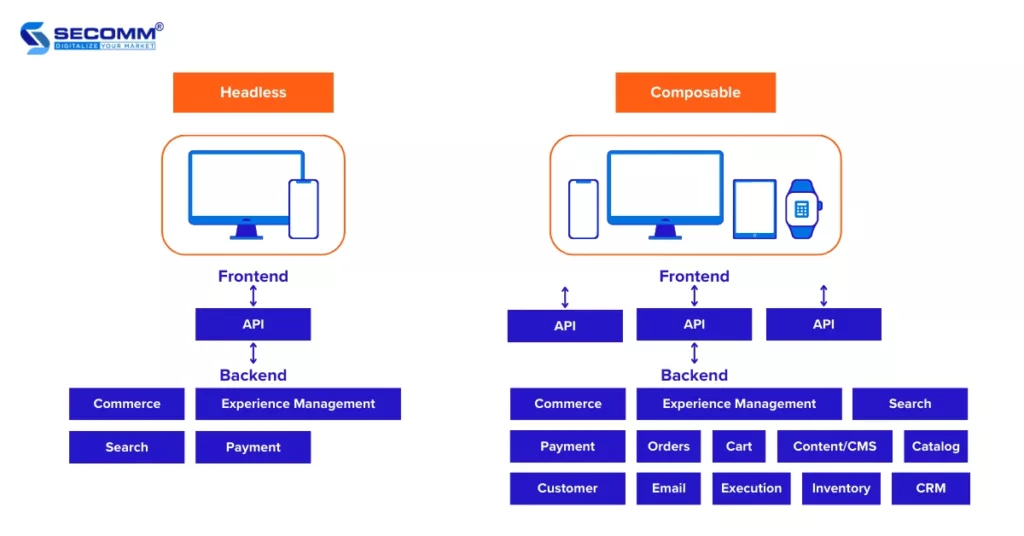
Should we deploy Headless Commerce or Composable Commerce?
When considering the prospects of eCommerce architectures, it is evident that both Composable and Headless Commerce offer superior customization and scalability, allowing you to break free from traditional constraints to adapt to market trends. However, the decision to implement a specific architecture will depend on your business needs, technical expertise, and the goals you want to achieve.
With SECOMM’s extensive expertise and deep experience in successfully deploying numerous Headless Commerce projects, we serve as a reliable partner to advise businesses looking to implement this architecture with innovative solutions.
Contact us or call directly on the hotline at 028 7108 9908 to take a leap forward with SECOMM and unlock the full potential of both Headless and Composable Commerce today!
 2
2
 6,625
6,625
 0
0
 1
1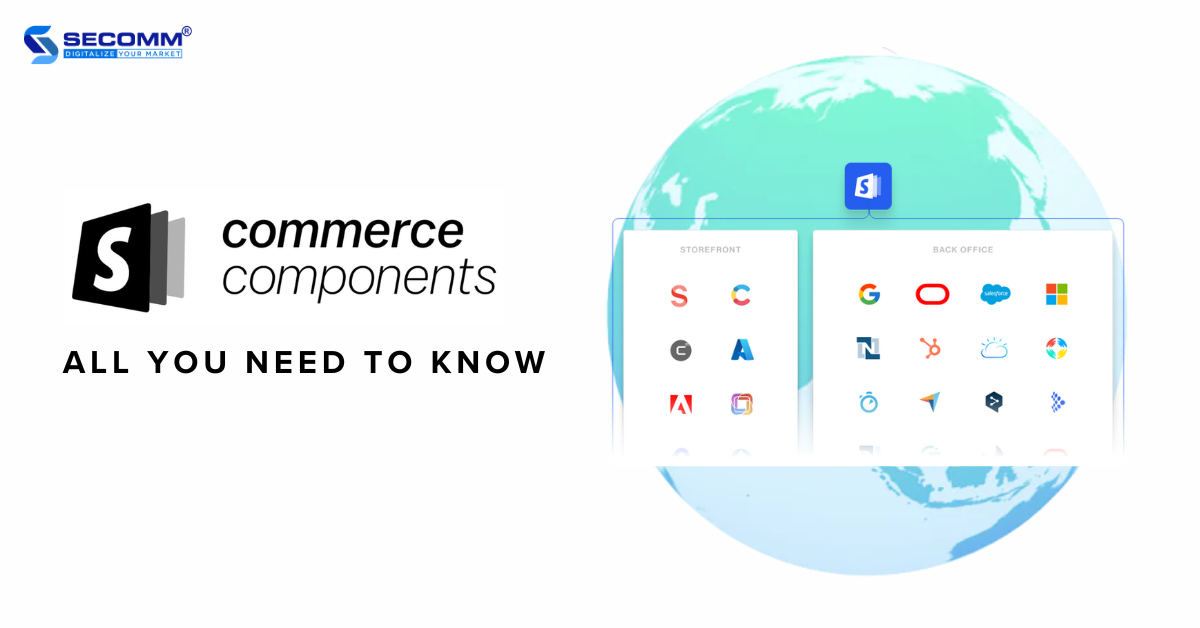
Today, with the growing demand for flexible and scalable eCommerce system development, large-sized businesses turn their attention to solutions like Headless, Microservices, and Composable Commerce. The Composable approach will allow you to integrate independent components to tailor and enhance the eCommerce experience.
Knowing this insight, Shopify has unveiled the Commerce Components solution, offering you — as a large-sized business — the most straightforward approach to deploying Composable Commerce.
Learn more: What is Composable Commerce?
Commerce Components is an innovative tech stack designed for large businesses. Rather than introducing new features, the company has transformed its infrastructure into modular components that can be combined to build and customize adaptable eCommerce websites. This means you can select components based on your deployment needs and seamlessly integrate them into your existing tech stack using flexible and unlimited API connections, ensuring a smooth customer experience across all devices.
“We’ve always approached innovation by anticipating what retailers need and then providing those solutions,” said Harley Finkelstein, president of Shopify. “Commerce Components opens our infrastructure so enterprise retailers don’t have to waste time, engineering power and money building critical foundations it has already perfected, and instead frees them up to customize, differentiate and scale”
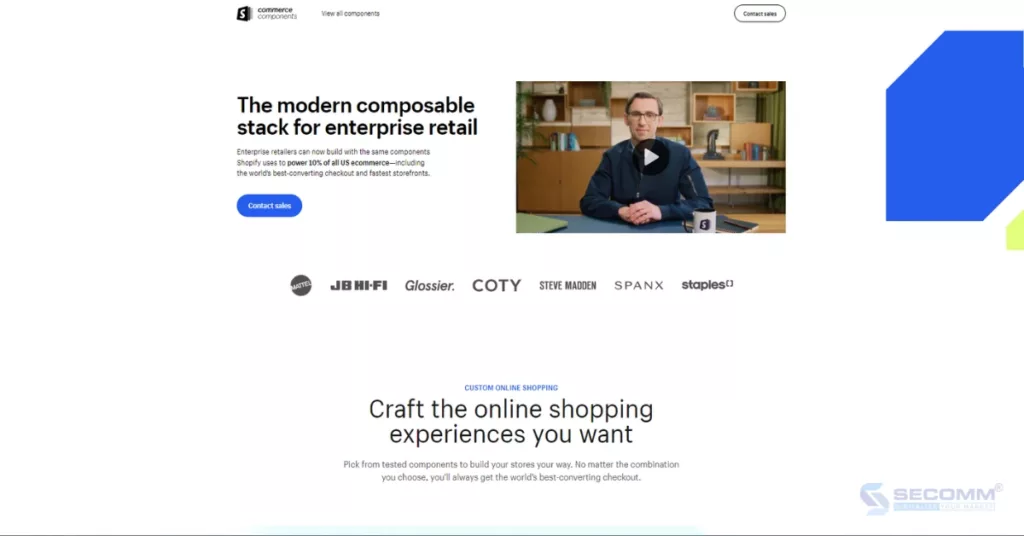
The solution offers six main categories including over 30 components, allowing you to build a tailored solution that aligns with your needs.
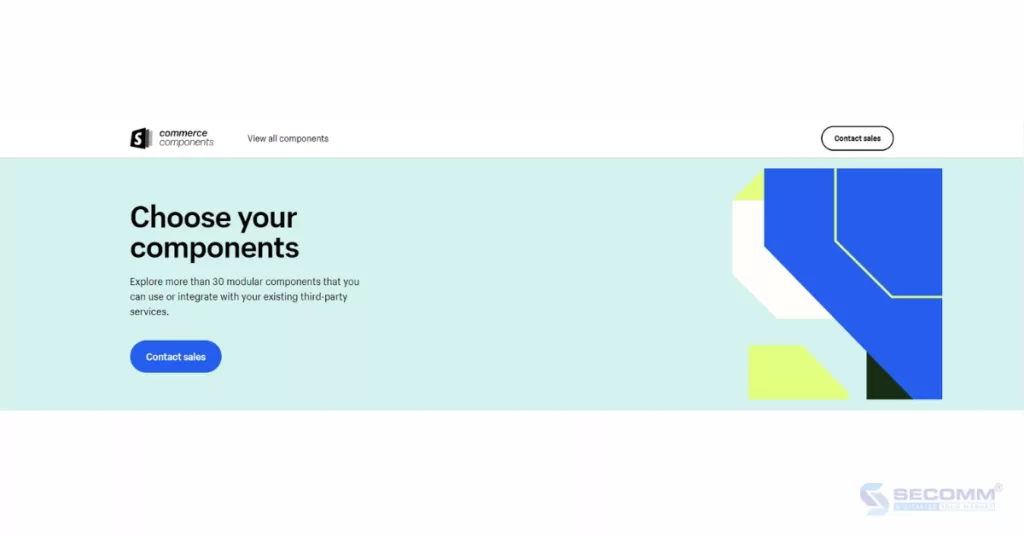
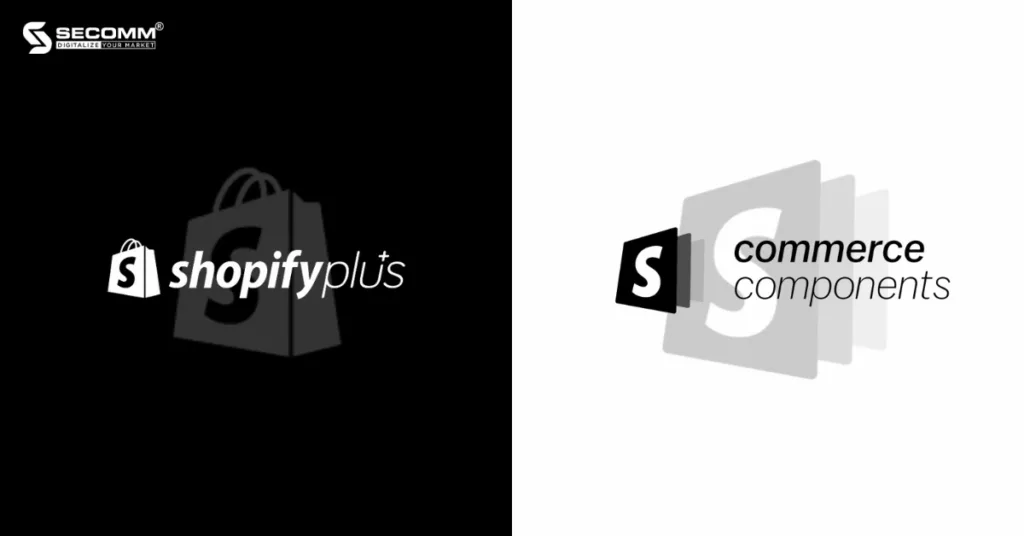
Although both ‘Plus’ and Components are enterprise eCommerce solutions, they differ in several aspects:
If you don’t prefer to deploy pre-packaged eCommerce platforms. Composable architecture is the ideal choice. It allows you to select and purchase components based on your needs, integrate them into your existing systems, and customize them.
With its modular architecture, the tech stack provides unlimited API connections, meaning there is no limit to the number of components and add-ons that you can use to build your tech stack.
Moreover, since components are entirely independent, you can add, remove, and modify components without affecting the entire system.
Commerce Components employs a pricing model structured around the level and quantity of components used. This means you only pay for the components you require. Furthermore, as you acquire and utilize more components, you’ll benefit from increasingly significant discounts.
Additionally, the annual payment structure of Components helps you facilitate precise cost predictions.
Since its inception, the platform has proudly highlighted the trust and adoption of its solution by major global businesses. Notable among these are Glossier, JB Hi-Fi, Coty, Steve Madden, Spanx, and Staples.
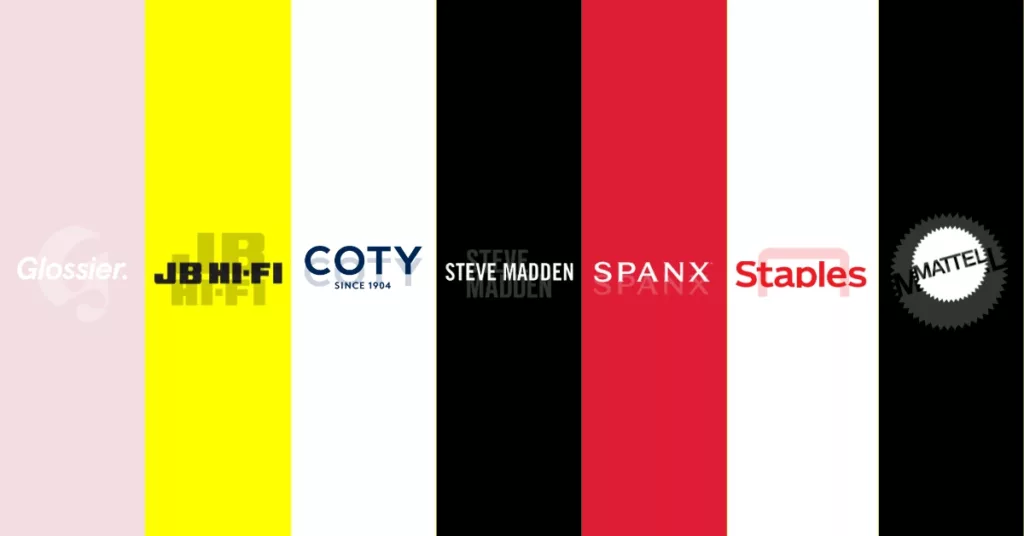
Leading U.S. toy brand Mattel is one of the first enterprises to successfully implement this technology solution. Sven Gerjets, Mattel’s CTO, said in a statement.
“We first worked with Shopify on a project called Mattel Creations, a platform for creators to reimagine the most iconic toys in the world. Creations empowered Mattel to move quickly, meet our customers where they are, and most importantly leverage its infrastructure to scale globally. It was hugely successful, and we’re excited to transform our brand offerings using Commerce Components.”
The trust placed by Mattel and other industry leaders forms a solid basis for expecting the ongoing success of this new solution, extending its impact not only within the U.S. market but also on a global scale.
Final Thoughts
In the past, large businesses often favored open-source platforms like Magento or Salesforce due to their customizable and flexible expansion capabilities. However, in today’s landscape, SaaS platforms, particularly Shopify, offer innovative solutions for developing Composable or Headless Commerce.
In 2021, the company launched the Hydrogen + Oxygen solution to enhance Headless Commerce development. Continuing this trend into early 2023, they once again surprise the industry with Commerce Components, designed for deploying Composable Commerce.
This move highlights its commitment to anticipating and responding to customer needs, earning the trust of large enterprises in the face of competitive rivals.
Reach out or call the SECOMM hotline at 028 7108 9908 for a more in-depth understanding of Commerce Components by Shopify and to explore the implementation of Headless Commerce or Composable Commerce.
 2
2
 10,687
10,687
 0
0
 1
1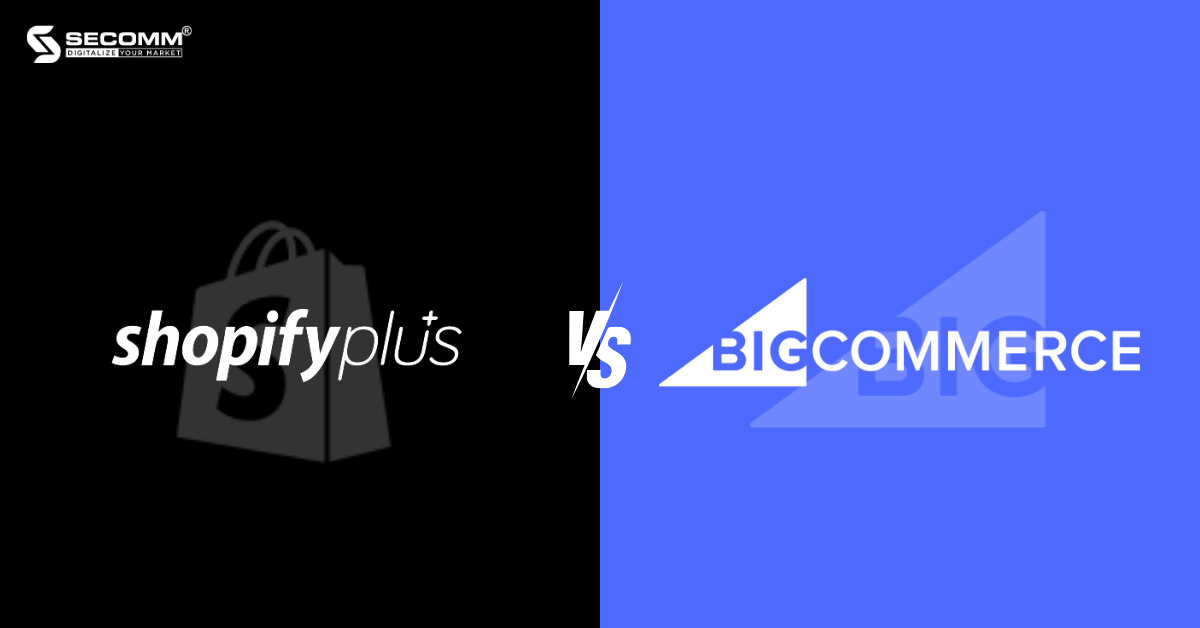
In today’s eCommerce landscape, it isn’t just open-source platforms that can meet the complex development and customization needs of large-scale enterprises, but SaaS platforms are also steadily rising with significant improvements. Among them, two SaaS platforms designed specifically for large enterprises are Shopify Plus and BigCommerce Enterprise.
However, these two platforms have many key differences. This article aims to clarify the pros and cons of each platform and compare the differences between the two platforms to help you — as a business leader — make well-informed decisions.
Learn more: Shopify vs BigCommerce: Which platform is right for you?
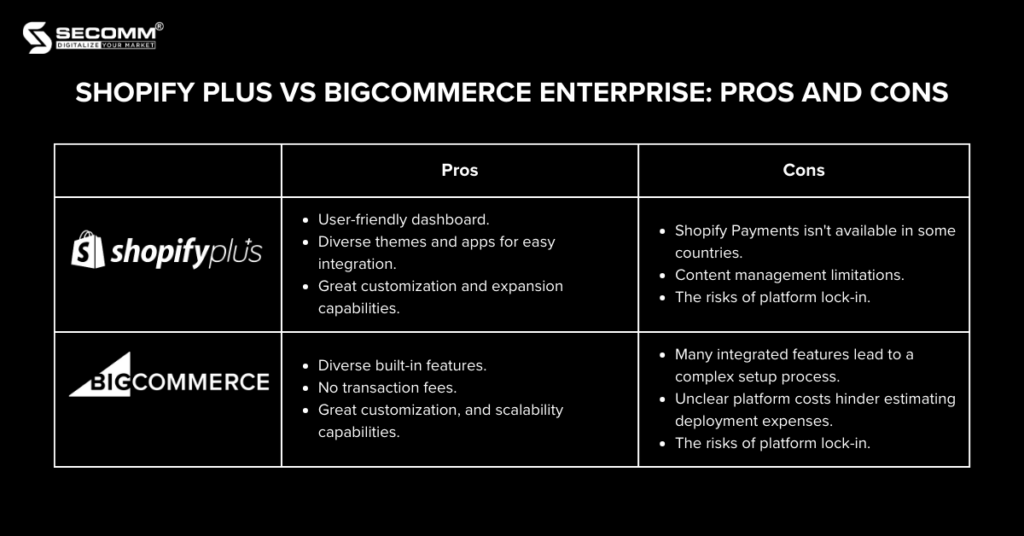
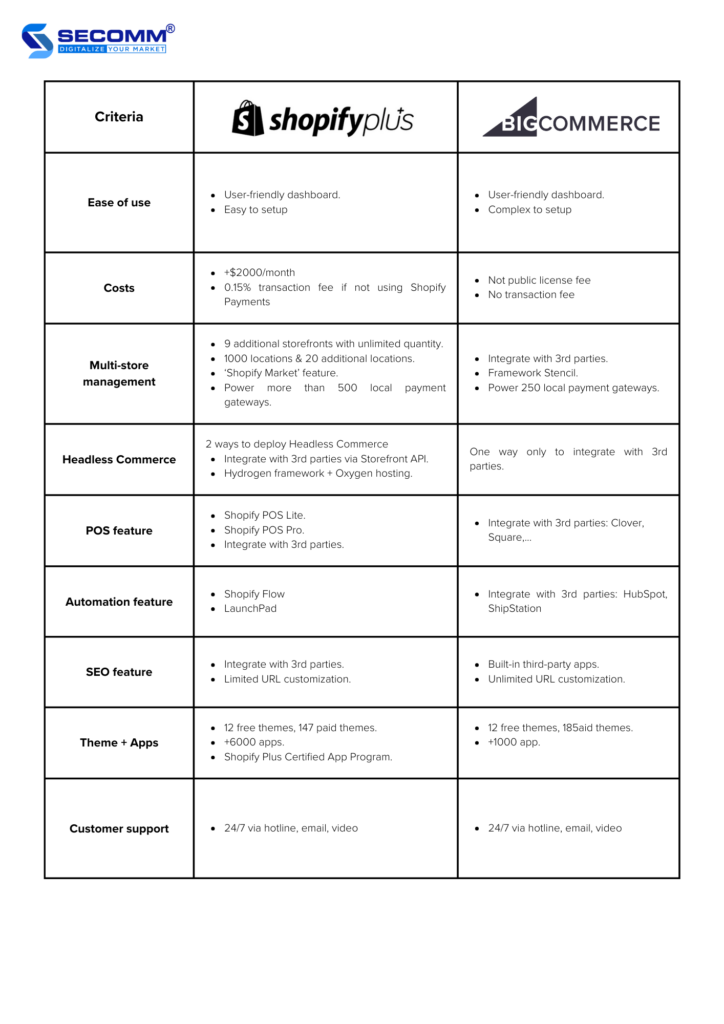
Both platforms are recognized for their user-friendliness compared to open-source platforms. Their intuitive dashboard and user-friendly navigation, along with features like drag-and-drop editing, extensive documentation, and 24/7 support, make them accessible for users of varying technical expertise.
However, Shopify, known for its inherent user-friendly design, ensures that users, whether using the Plus version or the regular ones, can easily explore and set up their eCommerce website with efficiency.
Both these two premium solution platforms — which are Shopify Plus and BigCommerce Enterprise — cater to the deployment needs of large enterprises, these platforms offer advanced features and technologies that require some learning.
For example, the ‘Plus’ users need to grasp the Liquid template language, while those opting for the ‘Enterprise’ may benefit from understanding the Google Cloud Platform for optimizing website performance.
BigCommerce, renowned for its built-in features, continues this trend with the ‘Enterprise’ version. Some features may suit specific businesses but might be unnecessary for others. While BigCommerce allows flexibility for customizing and configuring these advanced features, it can introduce complexity and intricacy into the setup process.
Similarly to other premium solutions on SaaS platforms, the license fee will depend on the deployment requirements and the current scale of the business. BigCommerce doesn’t disclose the fee publicly, requiring businesses to directly contact the platform for tailored consultation and pricing.
On the other hand, Shopify Plus has a license fee starting at $2000 per month. Once you reach a monthly revenue threshold of $800,000, the platform fee becomes revenue-based, amounting to 0.25% of monthly revenue, capped at $40,000 per month or $480,000 per year.
Considering transaction fees is also important. While BigCommerce doesn’t charge transaction fees, Shopify Plus charges a 0.15% transaction fee for not using Shopify Payments.
To estimate deployment costs effectively, you should partner with development agencies and engage in detailed consultations with BigCommerce or Shopify for comprehensive guidance.
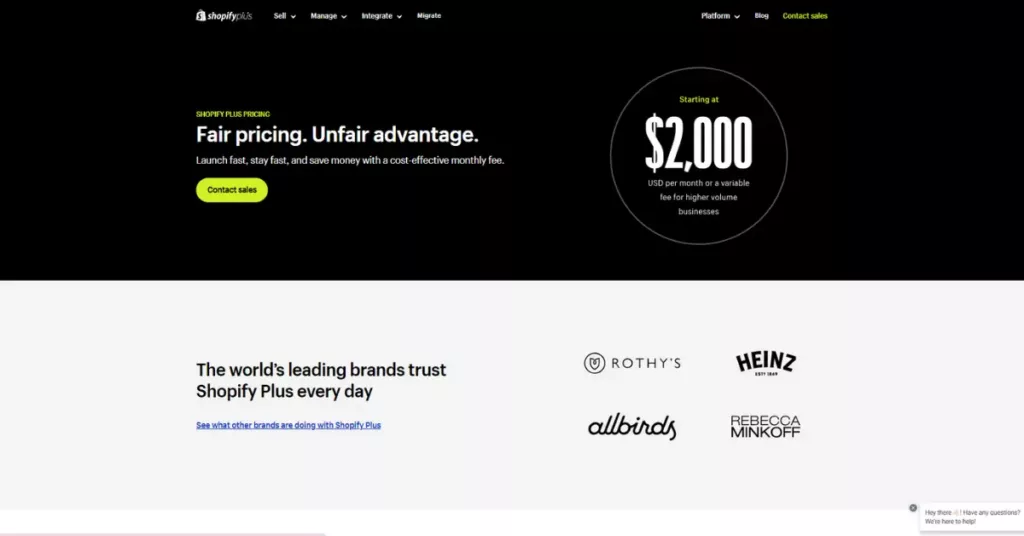
For large enterprises, the multi-store management feature is crucial and a primary consideration when selecting an eCommerce platform to sell globally. To engage in sales across various markets worldwide, your eCommerce website needs to be crafted to suit the preferences of each target audience in different markets.
This involves addressing issues related to language conversion, currency units, and payment methods with flexibility. Moreover, stores should be administered efficiently in a centralized manner rather than separately.
Shopify Plus allows you to create up to 9 additional storefronts alongside the main storefront at 1000 different inventory locations and 20 additional inventory locations. All these storefronts can be centrally managed through a single dashboard.
Plus, the Shopify Market feature will help you select the markets you want to sell in. The system will then automatically convert and manage multiple languages, currency units, shipping options, and payment methods based on the user’s IP address. Currently, Shopify Plus supports a range of local payment gateways, and you can refer to the provided list.

BigCommerce Enterprise doesn’t provide many solutions or features for global selling. Instead, it allows you to deploy multiple stores within the platform and then integrate with 3rd-party PIM solutions to manage data across these stores.
Another option is to leverage the BigCommerce Stencil framework to tailor content language for each local market. Also, the Enterprise version supports multi-currency payments through more than 250 local payment gateways.
The demand for adopting Headless eCommerce is on the rise, especially among large enterprises seeking to deliver a seamless and optimized experience for their customers. Both Shopify Plus and BigCommerce Enterprise offer effective solutions for going Headless.
BigCommerce Enterprise allows you to integrate with various frameworks (Next.js, Gatsby.js, Nuxt.js), APIs (REST, GraphQL), and your preferred or previously used tools.
When using Shopify Plus, there are three approaches. You can use the Storefront API to connect and develop with your preferred frameworks, hosting solutions, and tools. Or, you can leverage Shopify Hydrogen framework and Oxygen hosting to facilitate a headless eCommerce website flexibly.
Just like their regular pricing plans, both the ‘Enterprise’ and the ‘Plus’ include Point of Sale (POS) features for eCommerce transactions, catering to both online and offline stores, as well as Omnichannel operations.
POS can be configured on various devices like mobile devices (tablets, smartphones), and other hardware like cash registers and barcode scanners.
BigCommerce Enterprise offers smooth integration with third-party POS systems like Square, Vend, Clover, and Heartland Retail. It’s good for those who already using POS software from these third-party providers.
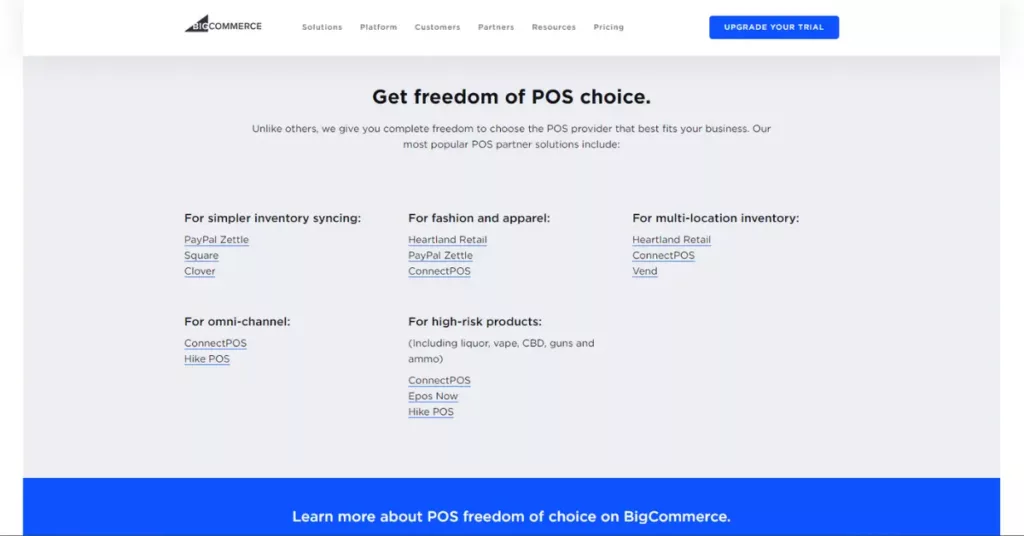
For Shopify Plus, beyond the option to integrate with third-party POS systems like BigCommerce Enterprise (Clover, Square, Zend), Shopify offers its own Shopify POS solution, available in two plans:
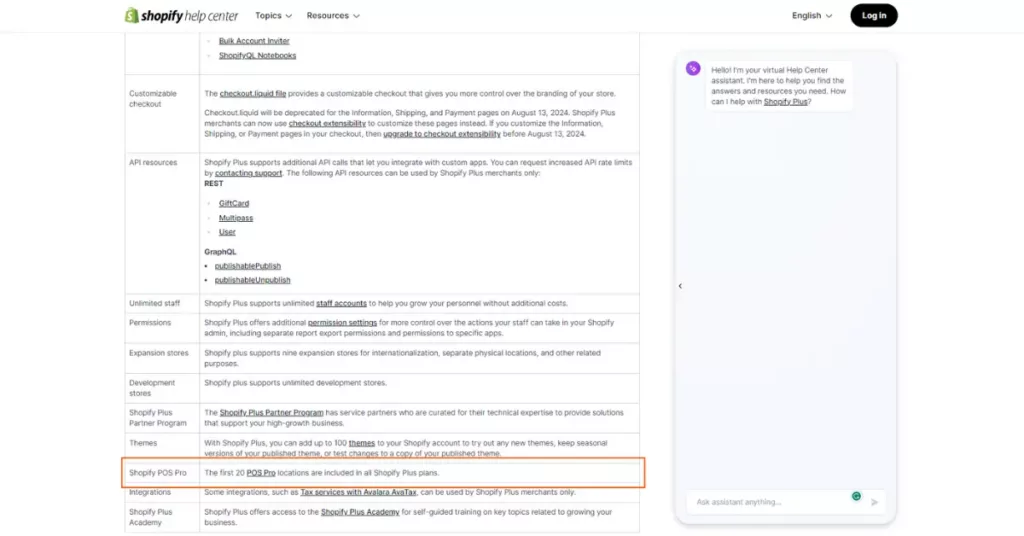
Both ‘Plus’ and ‘Enterprise’ offer tools and solutions to help you automate your eCommerce website operations.
Shopify Plus offers an exclusive solution, Shopify Flow, and LaunchPad, allowing you to automate routine tasks and set up automated workflows for tasks like email marketing campaigns or new product launches.
On the other hand, BigCommerce Enterprise takes a different automation approach which enables you to smoothly integrate with 3rd-party apps. Some of them are HubSpot, Avalara, ShipStation, etc.
SEO plays a crucial role in improving the search visibility of an eCommerce site and attracting potential customers. Both platforms offer features to enhance SEO efforts.
The ‘Plus’ stands out for its user-friendly interface and an integrated app ecosystem that can enhance SEO, incorporating tools such as Google Search Console and Analytics. However, it comes with limitations in URL control and customization.
The ‘Enterprise’, on the other hand, provides more versatile SEO capabilities, including complete control over URLs and integration with applications like Google Search Console and Analytics. It makes the process more intricate compared to Shopify Plus, involving additional setup operations.
Shopify Plus offers businesses approximately 12 free themes and 147 paid themes, with prices ranging from $150 to $380 per theme. On the other hand, BigCommerce Enterprise provides around 12 free themes and 185 paid themes, with prices ranging from $150 to $400 per theme.
Both platforms offer a wide range of visually appealing and mobile-friendly theme options. While the ‘Enterprise’ themes are characterized by elegant, tidy, and modern designs with highly customizable features, the ‘Plus’ themes can meet higher requirements for user experience, making navigation easier.
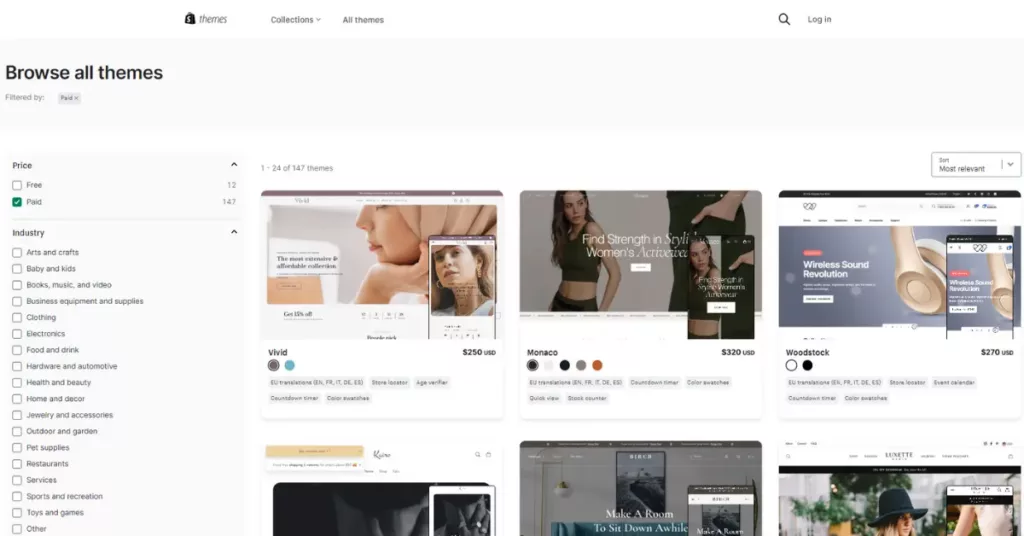
To facilitate efficient eCommerce deployment, the two provide vast app stores and extensions, tailored for ‘Plus’ and ‘Enterprise’ businesses. While both platforms offer free versions, access to comprehensive features requires a modest monthly fee.
Shopify Plus boasts over 6,000 apps and extensions, while BigCommerce Enterprise has around 1,000. This can be explained by Shopify’s widespread popularity among businesses and developers globally, providing them with ample documentation and resources for app and extension development, including the Shopify Plus Certified App Program.
For businesses that are ready to deploy the ‘Plus’ or the ‘Enterprise’ solutions, the demand for technical support and efficient eCommerce website operations is significant.
Both platforms receive high praise for their customer service. They offer 24/7 support via hotline, email, and video available in multiple languages. However, if you need specialized and complex technical support, Shopify Plus may be the preferable choice.
Final Thoughts
In the competitive business landscape, selecting the right platform for launching an eCommerce website is an important decision. Both Shopify Plus and BigCommerce Enterprise offer distinct advantages and cater to various business models.
Regardless of the platform chosen, you should prioritize the development and delivery of an exceptional shopping experience for your customers. eCommerce platforms serve as tools, and the ultimate key to success lies in an effective deployment strategy and great collaboration with a proficient team.
With extensive experience helping numerous businesses deploy diverse eCommerce development projects on both Shopify Plus and BigCommerce Enterprise, SECOMM boasts a team of seasoned experts capable of collaborating to create exceptional eCommerce experiences and help you enhance your brand positioning.
Reach out or directly call the hotline at 028 7108 9908 to explore how SECOMM can contribute to optimizing the potential of Shopify Plus and BigCommerce Enterprise for enduring your business success.
 2
2
 6,772
6,772
 0
0
 1
1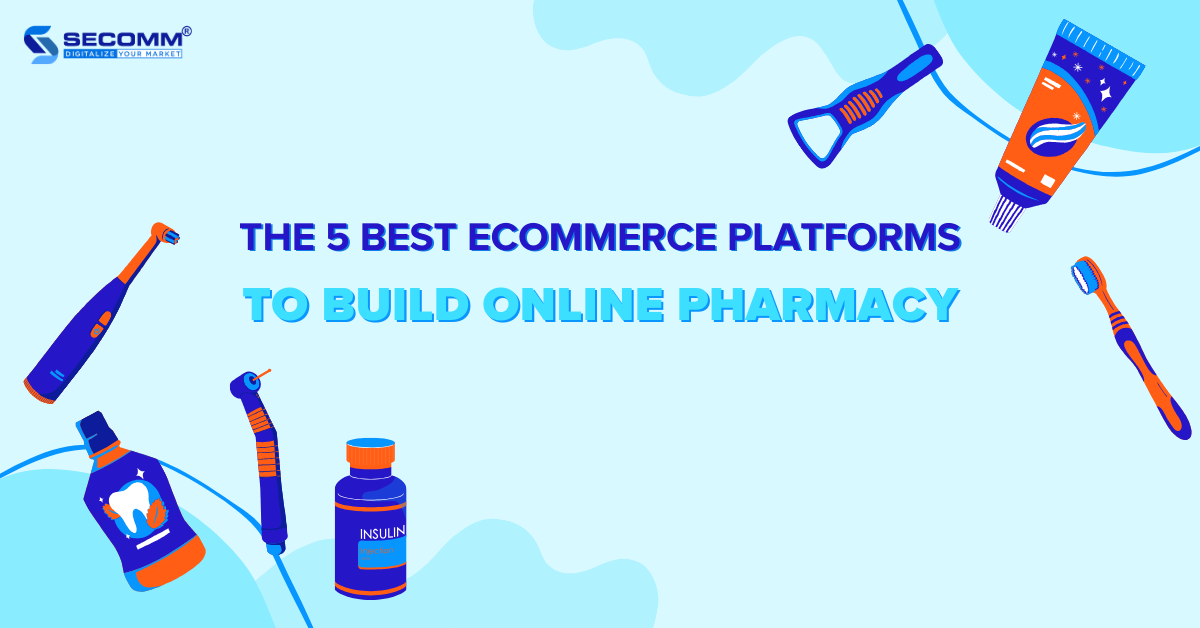
According to The Business Research Company, the global pharmaceutical eCommerce market is projected to reach $732.3 billion by 2027. This represents a significant opportunity for pharmacies, healthcare service providers, or hospitals/clinics to implement eCommerce and reach a broader range of potential customers. To achieve this, building an online pharmacy on a professional platform is a great idea to address industry-specific challenges.
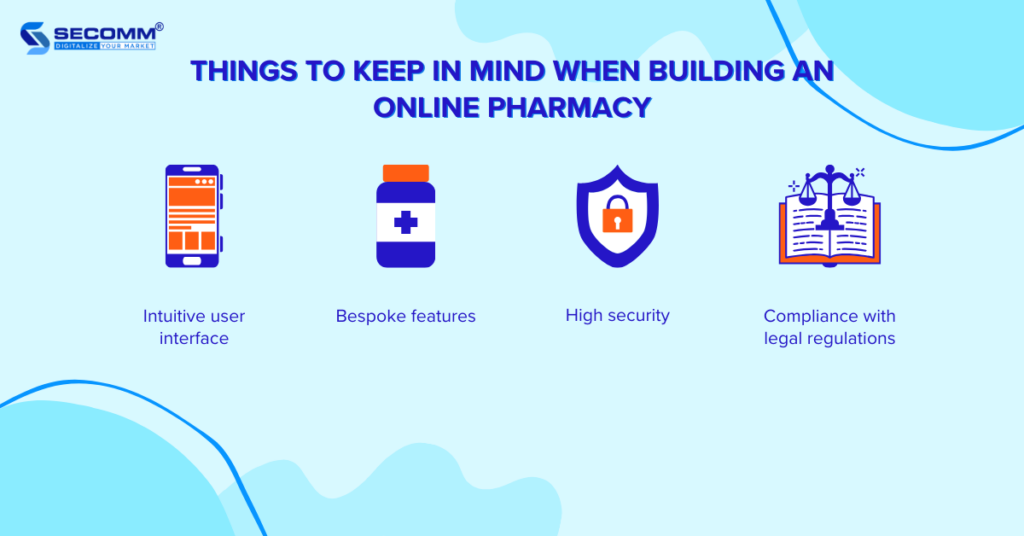
When building a pharmacy eCommerce website, businesses must meet numerous criteria to ensure professionalism, safety, and legal compliance within this industry.
The typical customer profile in the pharmaceutical eCommerce sector consists of individuals seeking to purchase medications, medical equipment, and other healthcare products for themselves, family, or friends.
Thus, the website interface needs to be visually appealing, and user-friendly, and prioritize colors such as blue or white to create a sense of safety and cleanliness.
Other factors, such as layout, font choice, and imagery, should be carefully selected and coordinated to deliver the most professional user experience.
When building an online pharmacy, beyond default eCommerce features, businesses should focus on developing the following features to address industry-specific needs:
An online pharmacy is a system that contains various crucial information including personal details, payment information, and the health status of customers. Therefore, the security system of the website needs to be built and deployed carefully to ensure the safety of customer data.
Pharmaceutical eCommerce is a specialized business area subject to the regulations of the healthcare/pharmaceutical industry. eCommerce pharmaceutical businesses need to comply with these regulations to ensure that their operations are legal and safe for customers.
Below are some key legal regulations that e-commerce pharmaceutical businesses need to adhere to in Vietnam:
In addition, pharmaceutical eCommerce businesses also need to comply with other legal regulations, such as Cybersecurity Law, Consumer Protection Law, and eCommerce Law.
Although this industry has many challenges to deploy, businesses always have eCommerce platforms to create their online pharmacies. Here are the 5 leading platforms for building online pharmacy that businesses may consider.
BigCommerce is a cloud-based eCommerce platform operating on the Software as a Service (SaaS) model, enabling businesses to create and manage online stores.
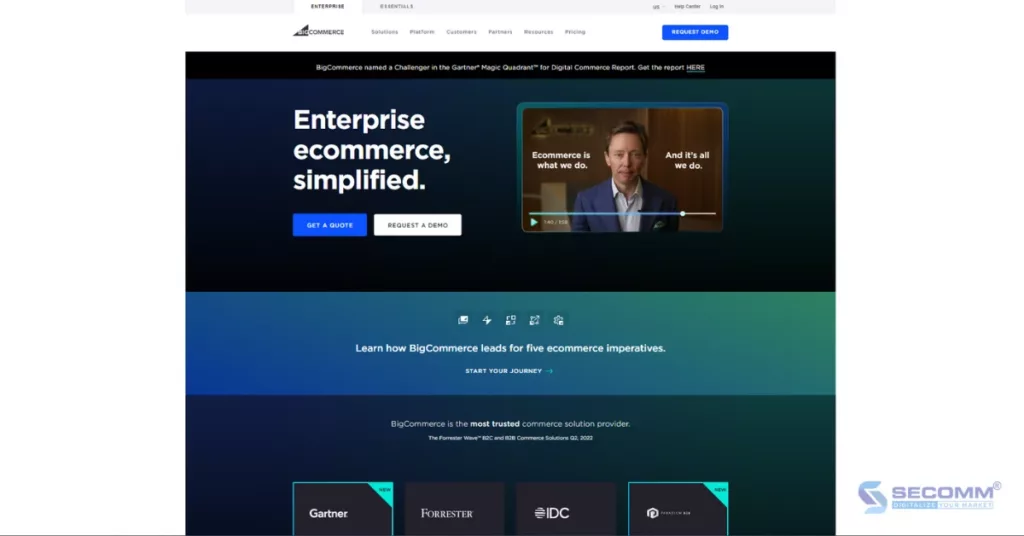
Currently, BigCommerce offers four main solutions, including
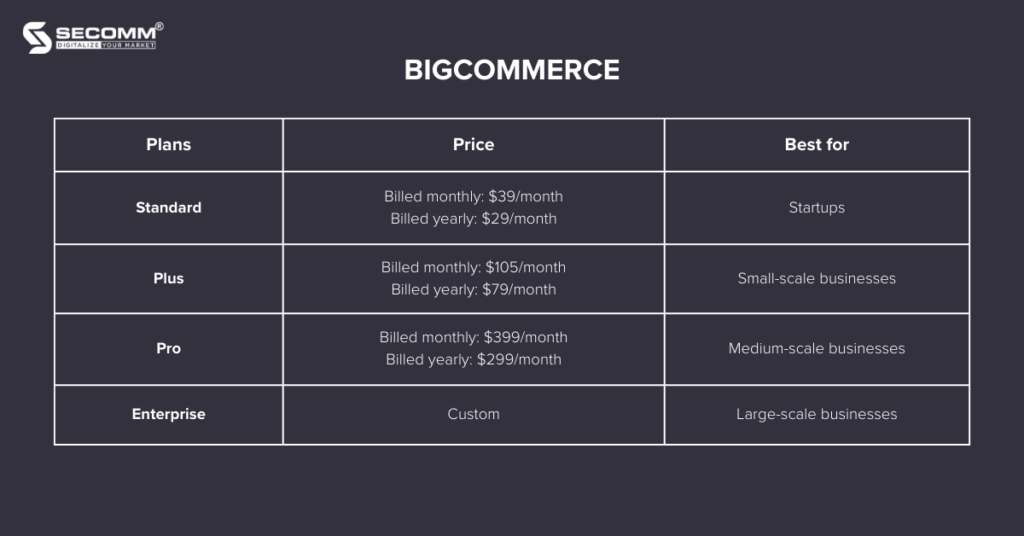
Pros:
Cons:
Some famous pharmaceutical eCommerce businesses currently utilizing BigCommerce include Victoria Health, Molton Brown, LARQ, and Zyppah.
Shopify is a SaaS eCommerce platform established in 2006. To date, Shopify has rapidly become one of the leading platforms in the eCommerce industry, supporting thousands of businesses worldwide to initiate and grow their online ventures.
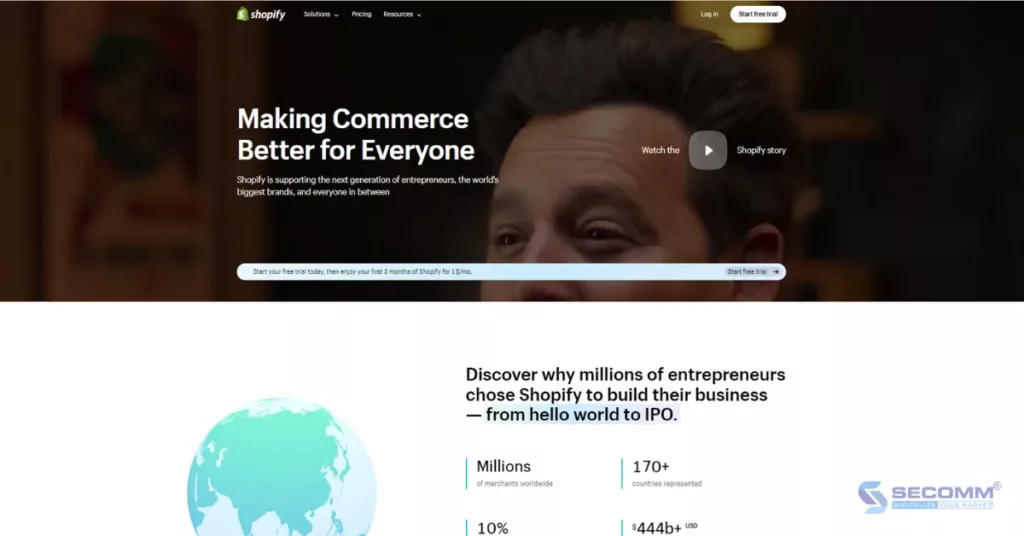
The cost to use the Shopify platform is quite diverse, including these three solutions:
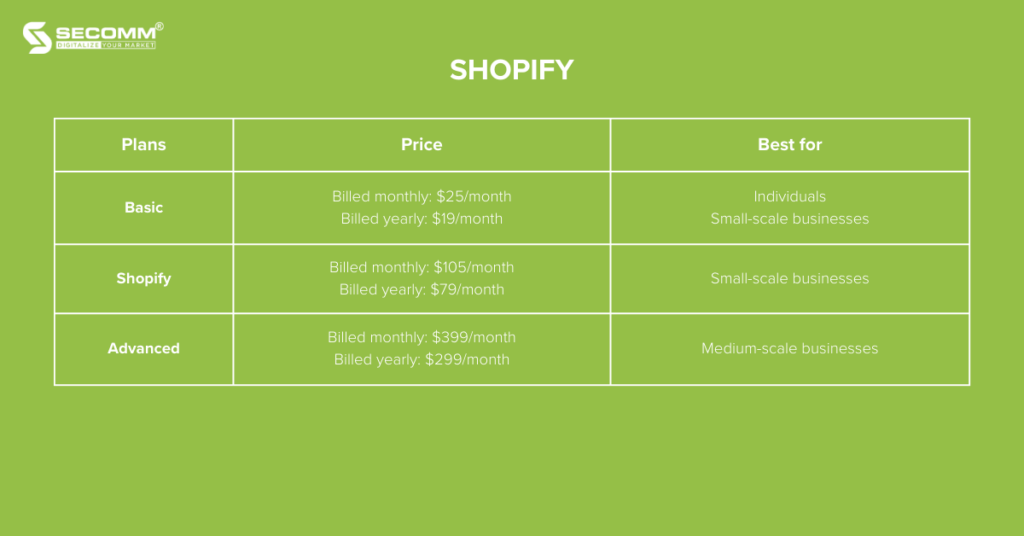
In addition, Shopify provides eCommerce solutions tailored to businesses with different needs and wants, such as:
Learn more: Top 5 benefits of Headless Commerce
Pros:
Cons:
Healthcare, pharmaceutical, and medical businesses using Shopify include Dr.Axe, 310 Nutrition, Hiya, and BUBS Naturals.
StoreHippo is a SaaS eCommerce platform established in 2014 in India. Over the years, this platform has consistently updated its technologies to meet the website-building needs of businesses, particularly those in the pharmaceutical eCommerce sector.
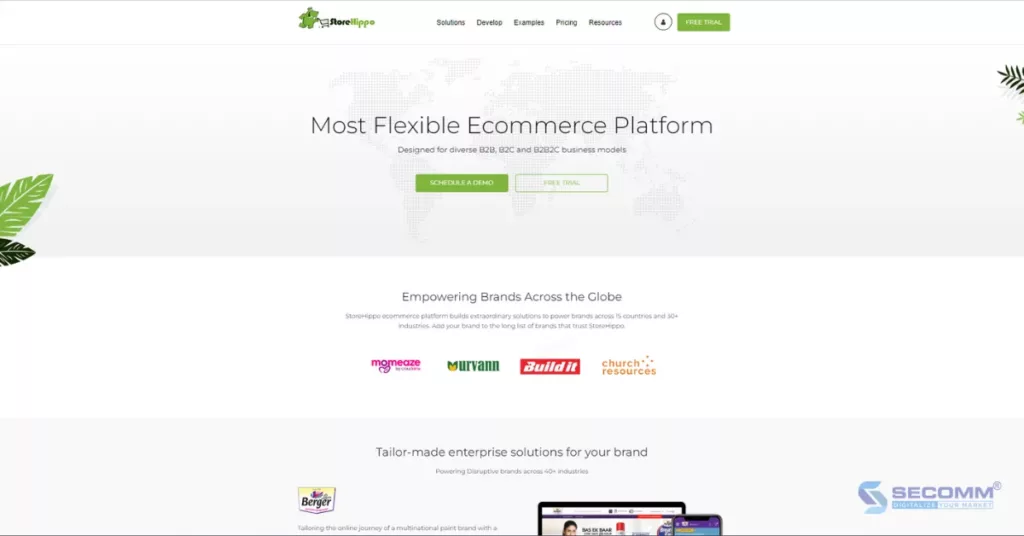
Similar to other SaaS platforms, StoreHippo offers a variety of solutions to choose from:
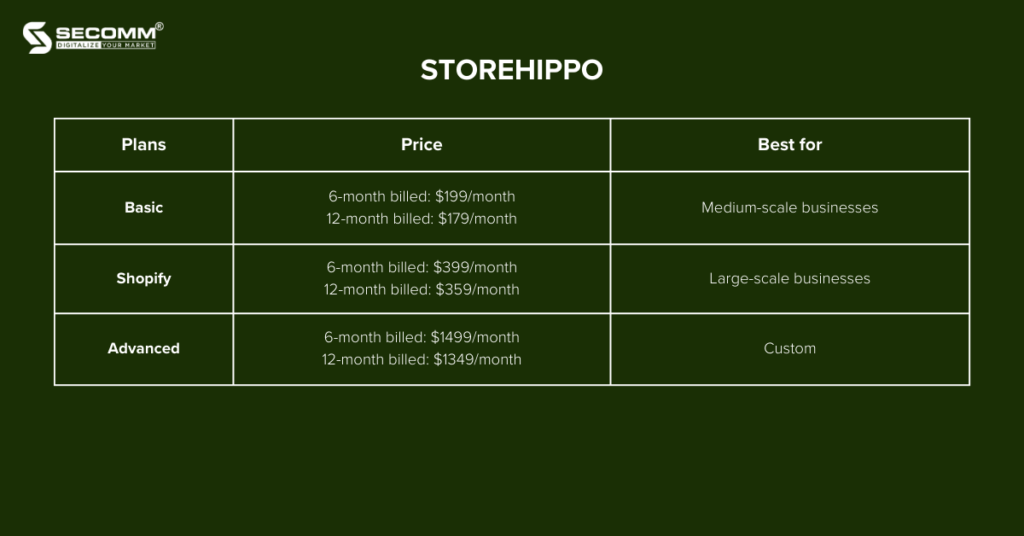
Pros:
Cons:
Some brands that built their online pharmacy with StoreHippo include WoundProfessional, Kunooz, and On A Healthy Note.
WooCommerce is an open-source eCommerce plugin developed for the WordPress platform, one of the most popular content management systems (CMS) globally. WooCommerce enables businesses to turn their WordPress websites into online stores or integrate eCommerce features into existing websites.
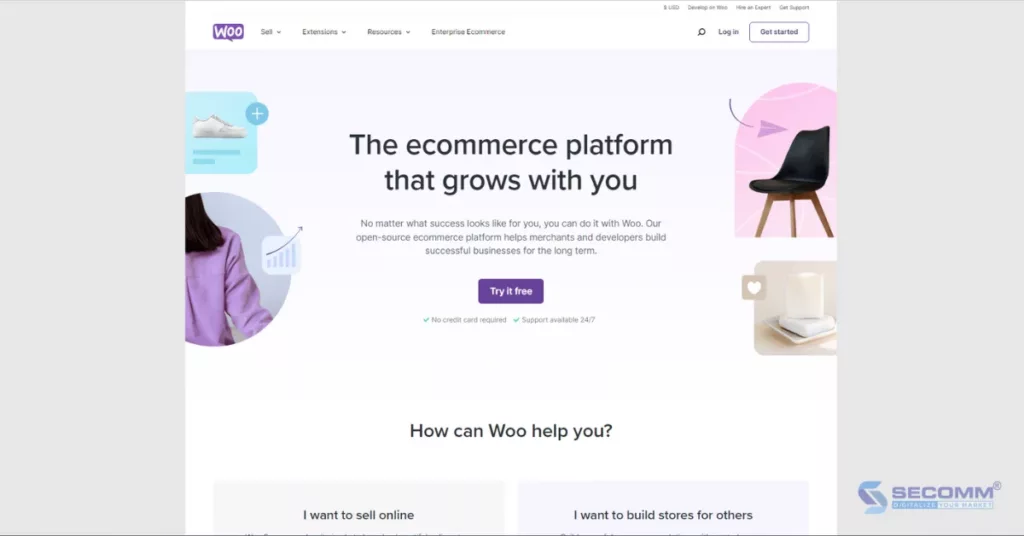
The license fee of WooCommerce depends on the complexity of each project, averaging around $1,000 for a basic eCommerce website and $10,000 for a more advanced eCommerce website.
Pros:
Cons:
Brands using WooCommerce to build online pharmacy include Dr. Scholl’s, myLAB Box, Superdrug Health Clinics, and Apothecanna.
Adobe Commerce, formerly known as Magento Commerce, is a professional and widely used eCommerce system. Adobe Commerce is part of the Adobe Experience Cloud product line and is designed to assist businesses in building eCommerce websites.
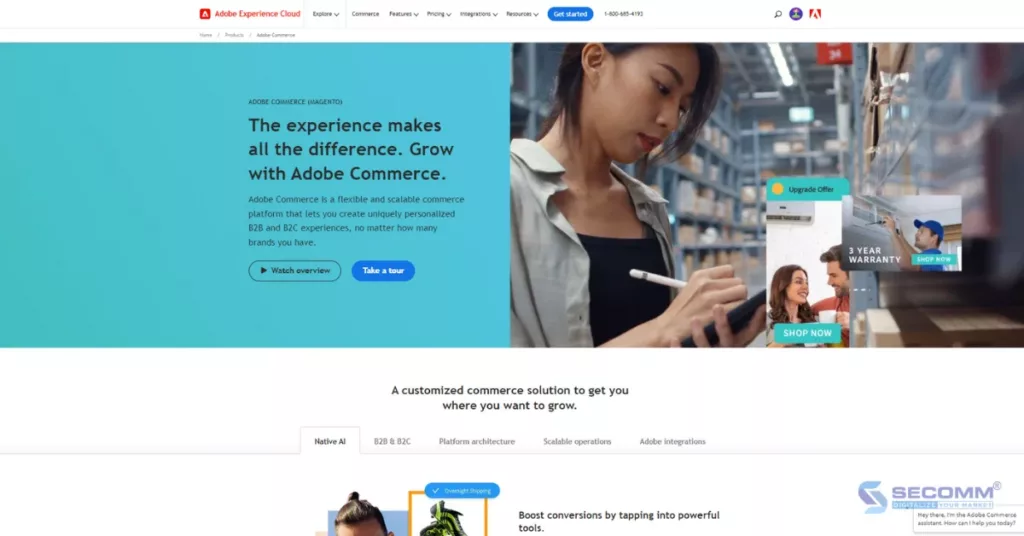
Currently, Adobe Commerce provides businesses with two main versions:
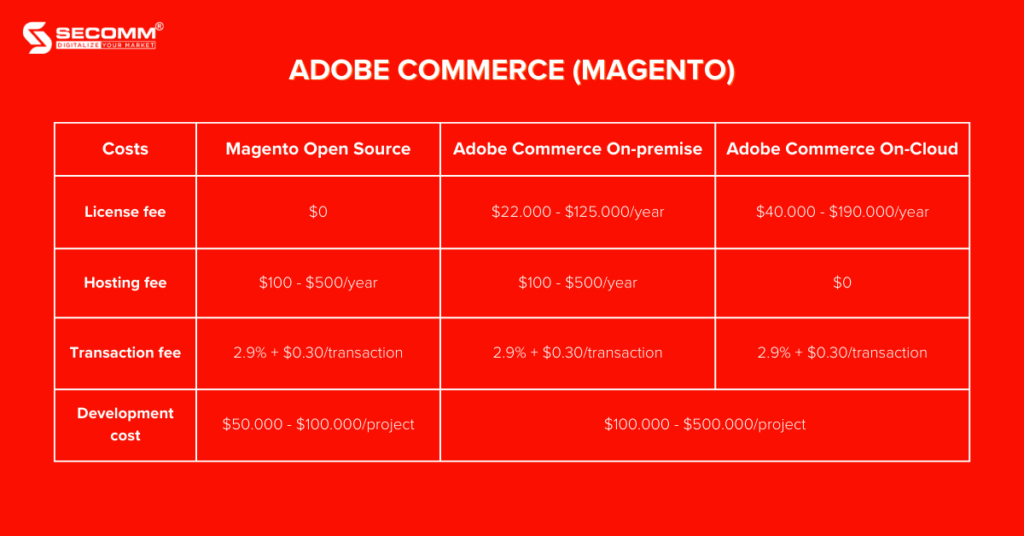
Pros:
Cons:
This list is just a few examples for businesses to reference; there are many other robust eCommerce platforms that businesses can consider based on specific needs and available resources.
With extensive experience in implementing eCommerce for clients in various countries, SECOMM understands the challenges and difficulties businesses face during the deployment of pharmaceutical eCommerce.
Contact SECOMM now or call the hotline at 02871089908 today for a free consultation.
 2
2
 8,009
8,009
 0
0
 1
1Subscribe to get the latest eBook!
Hotline